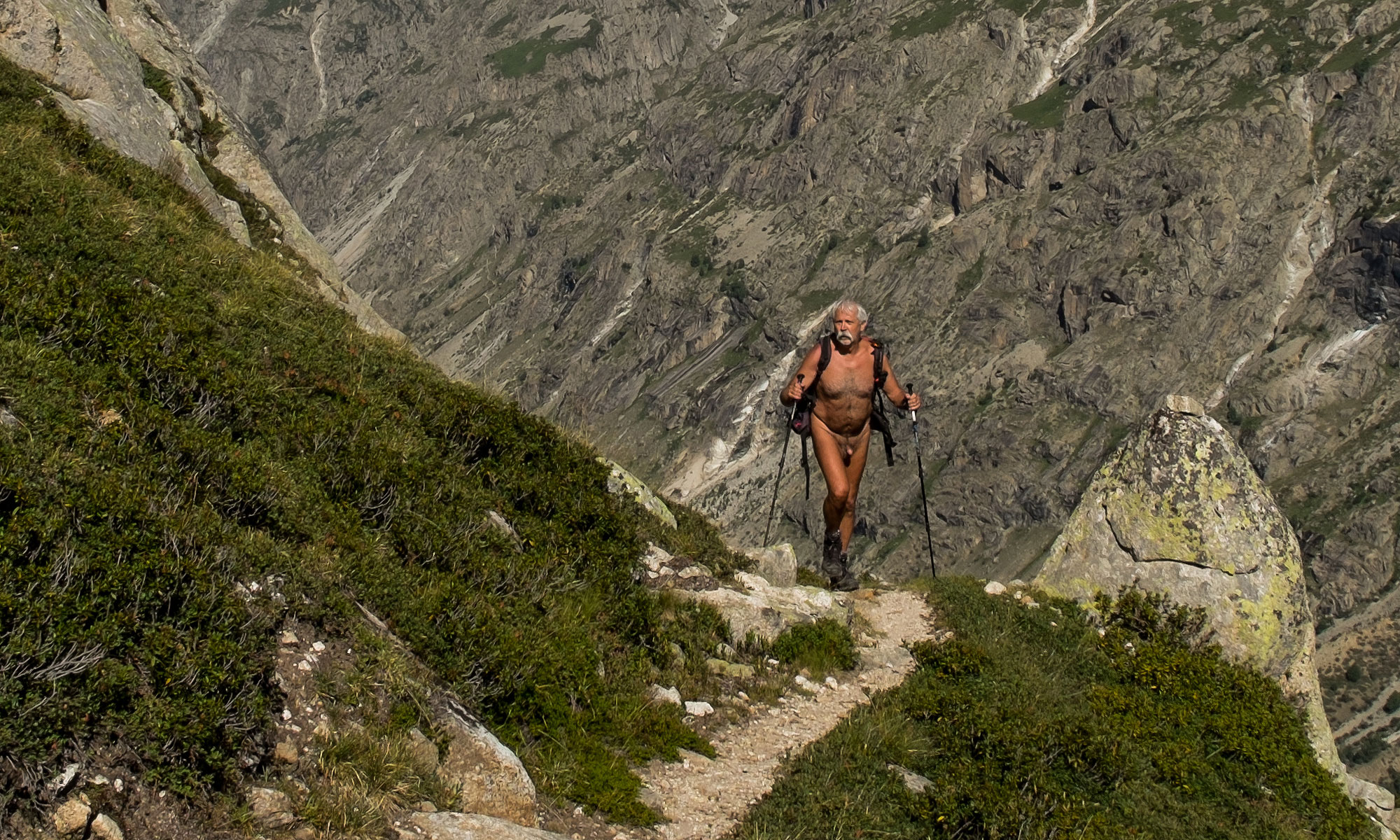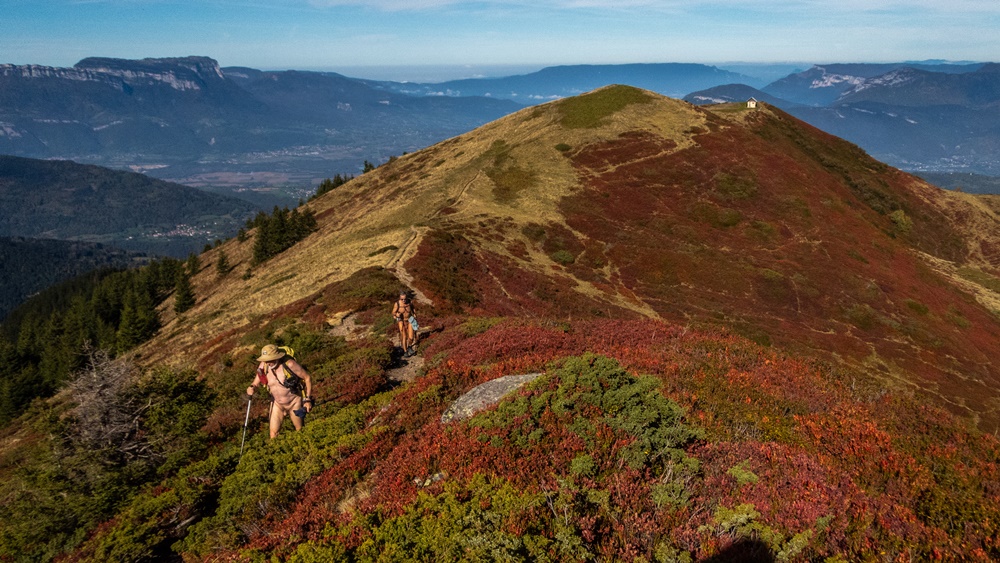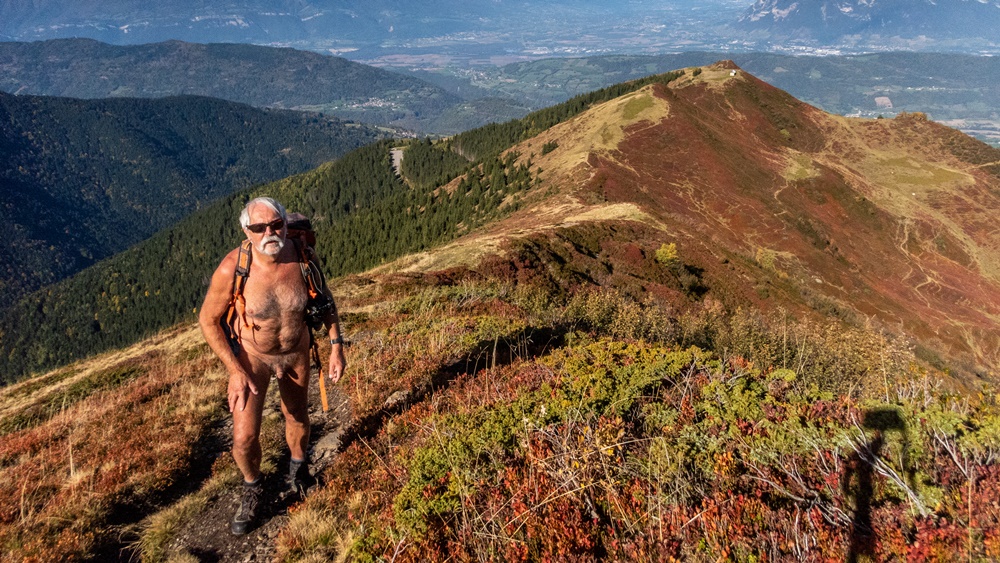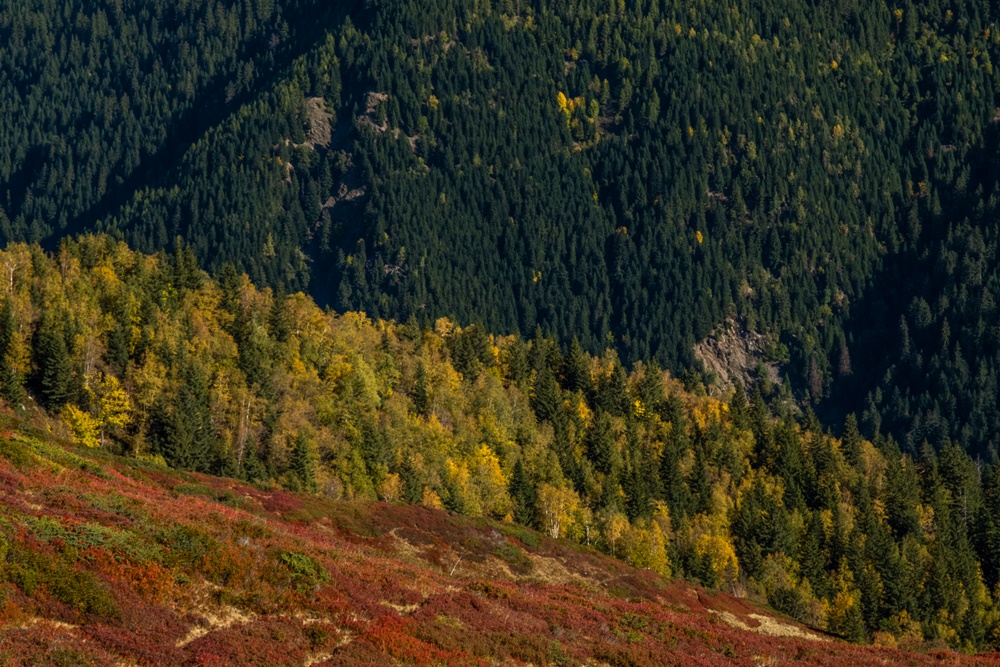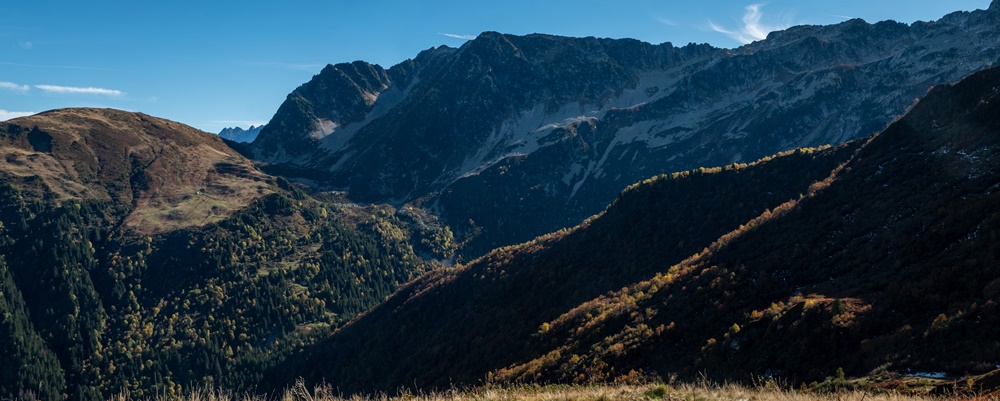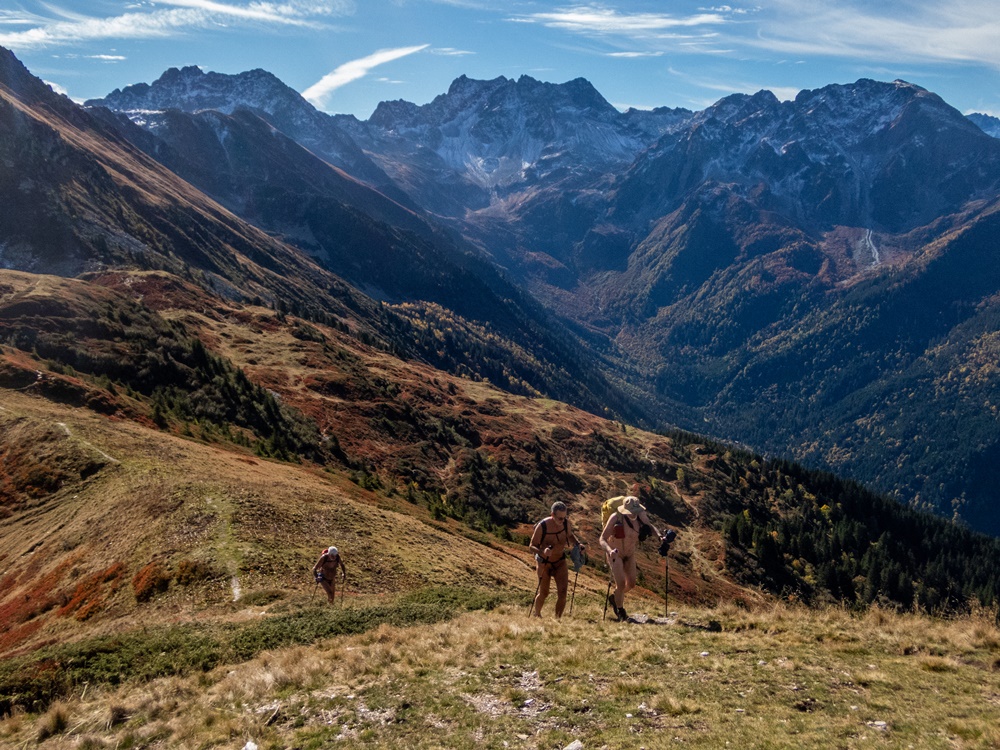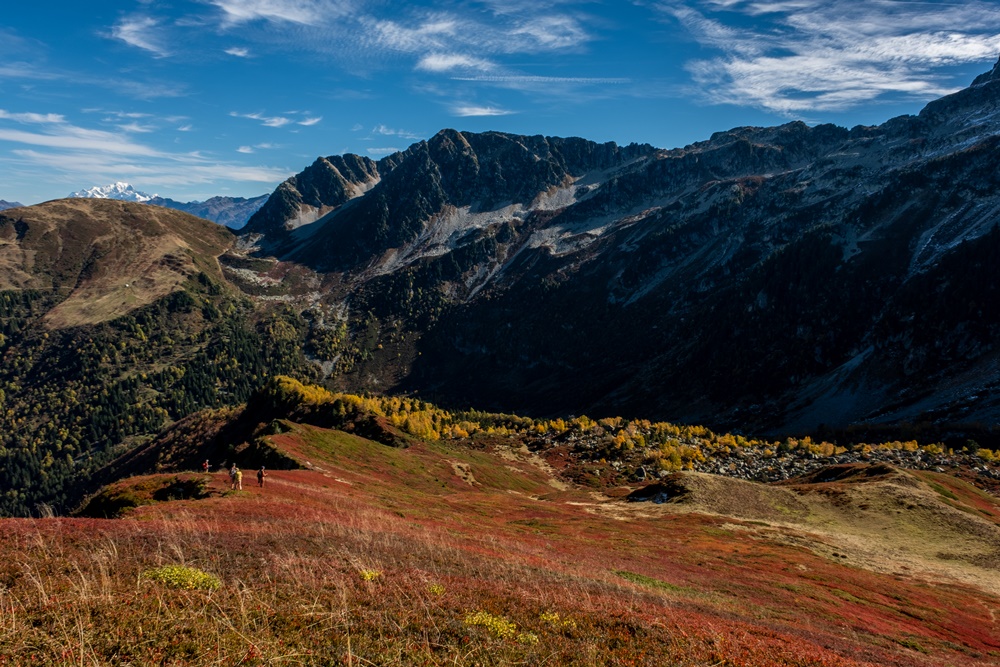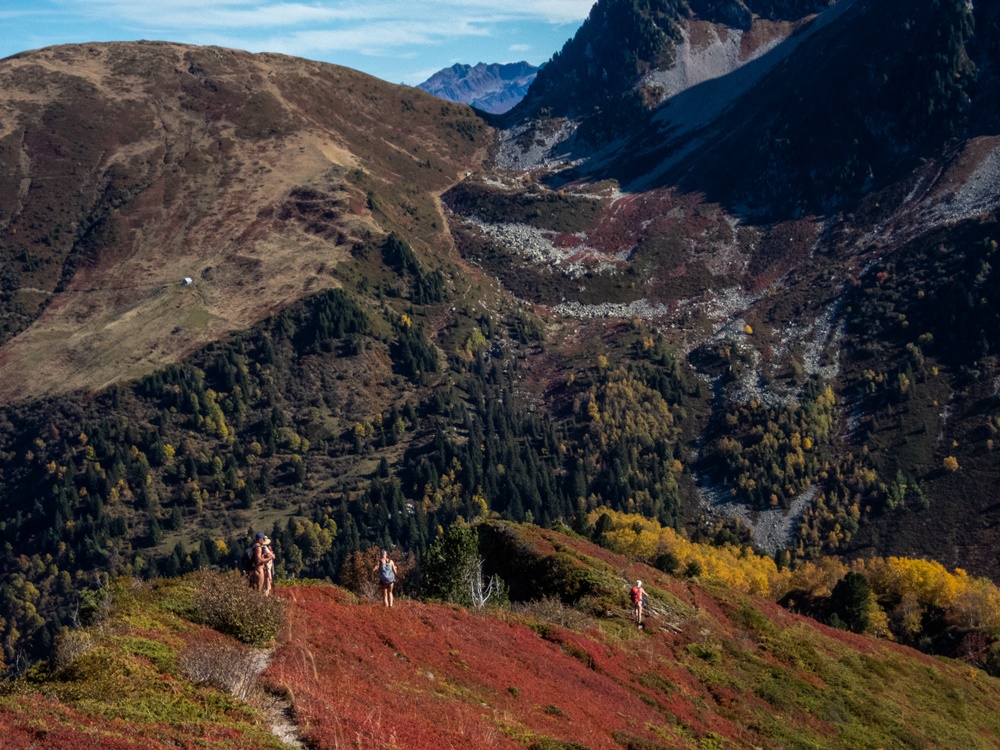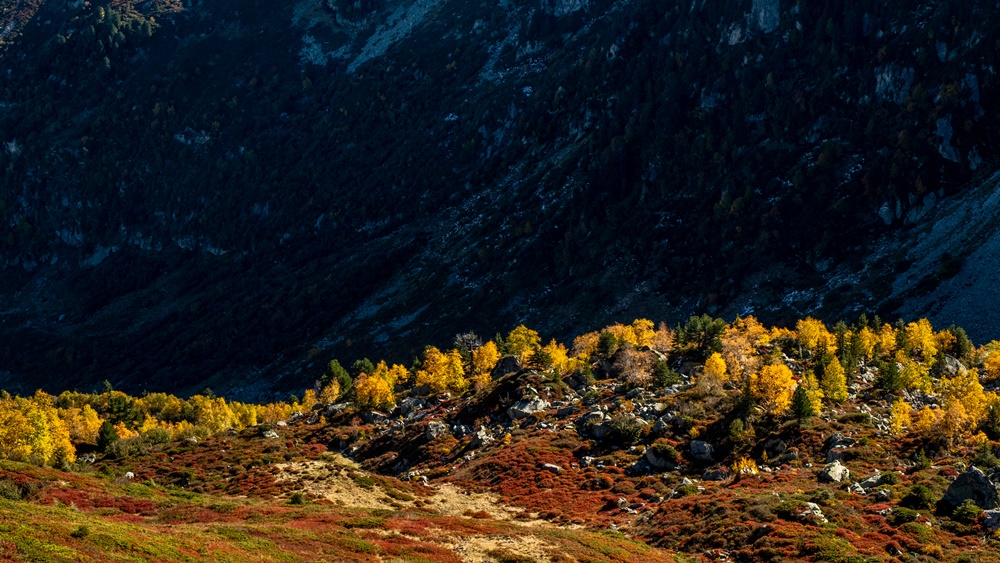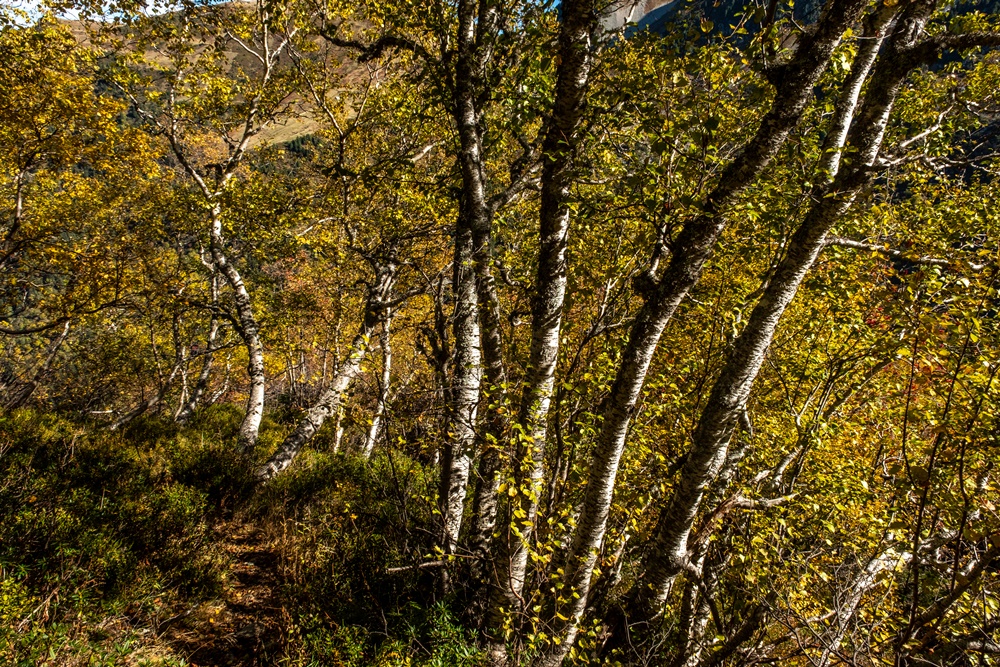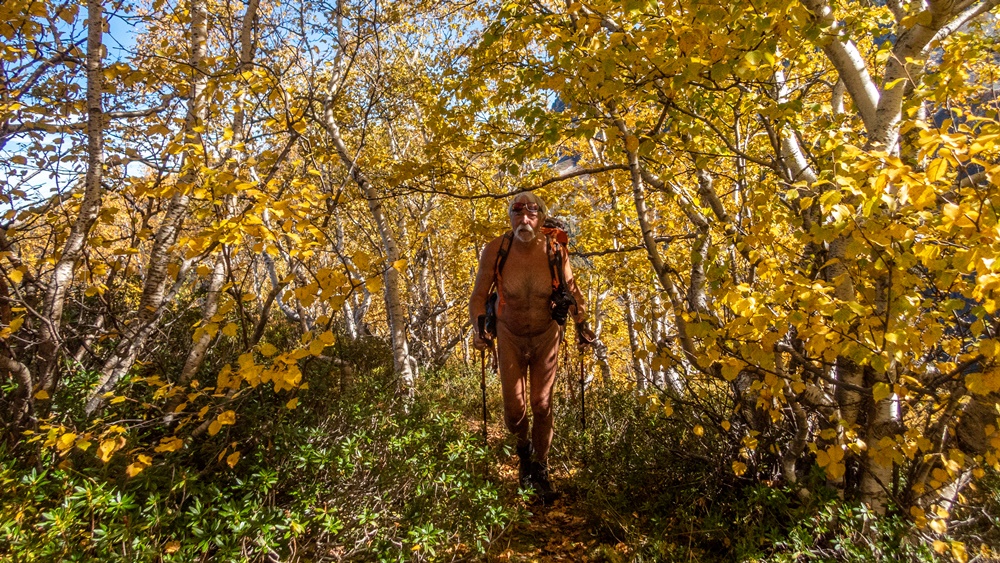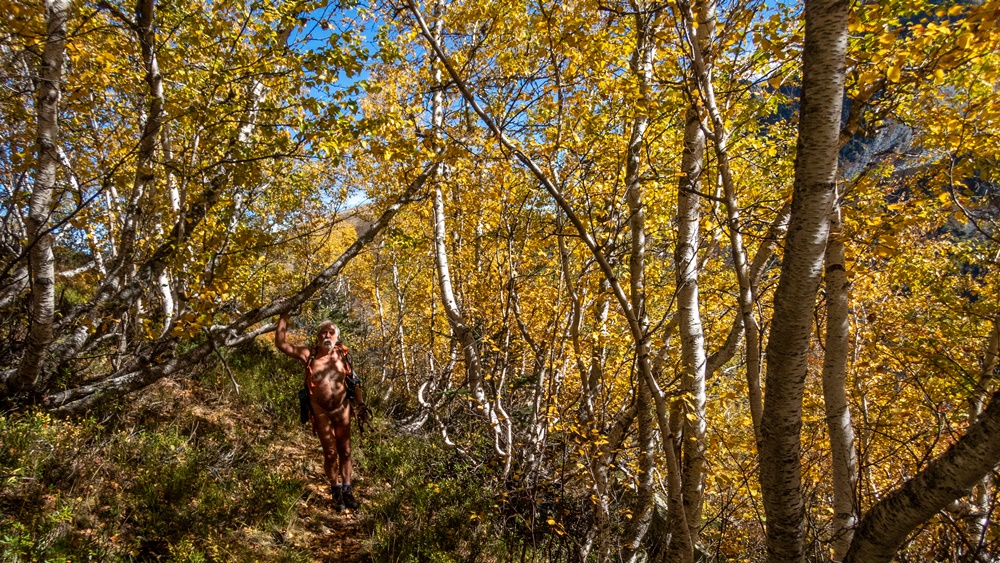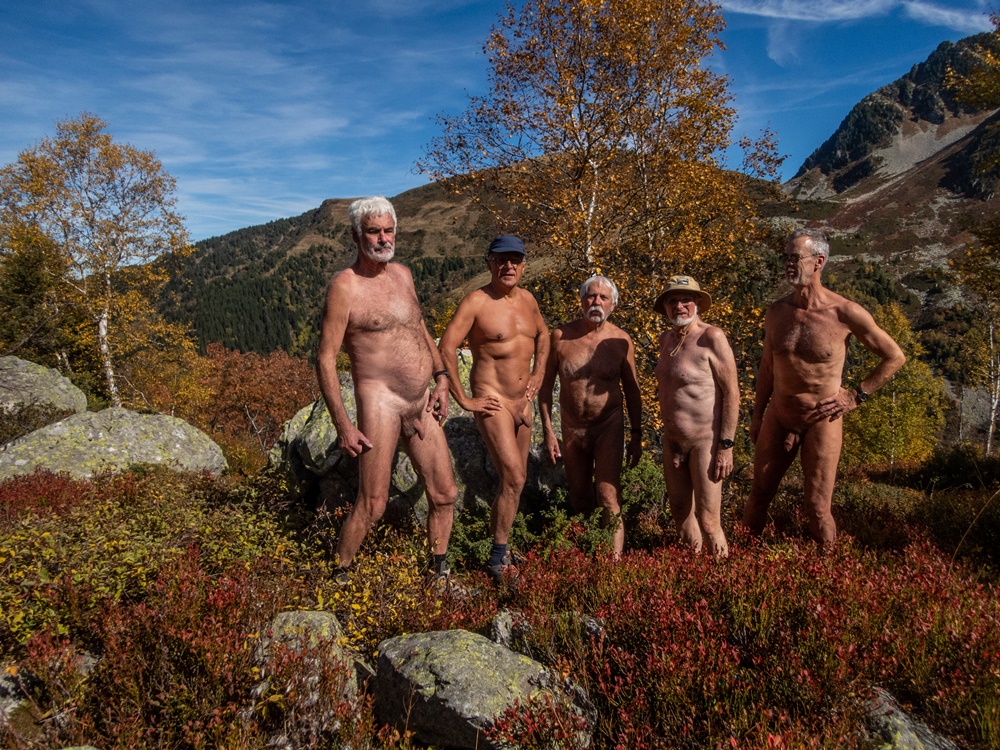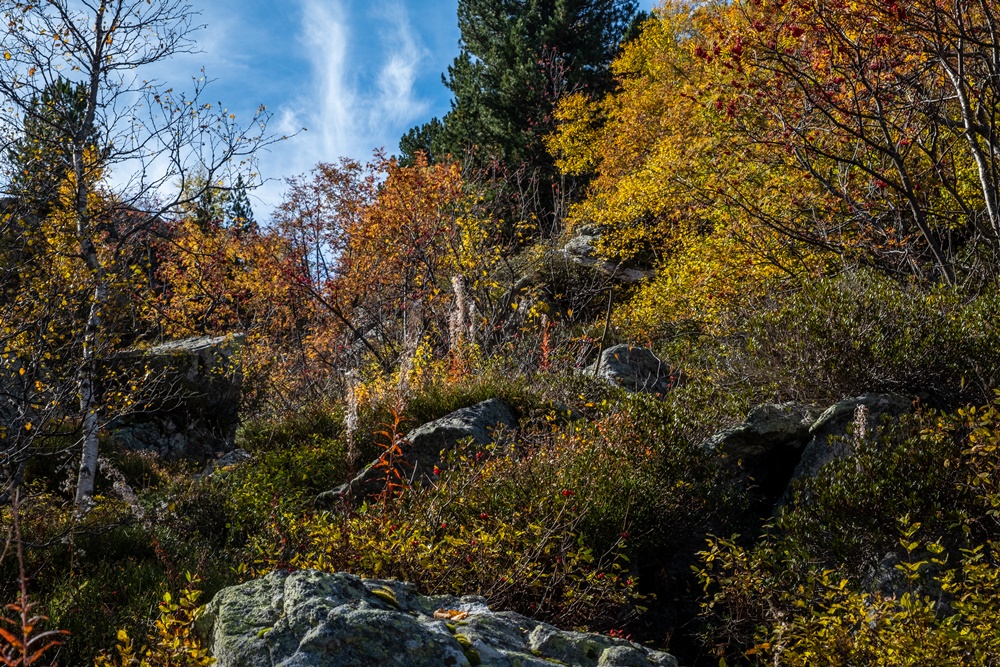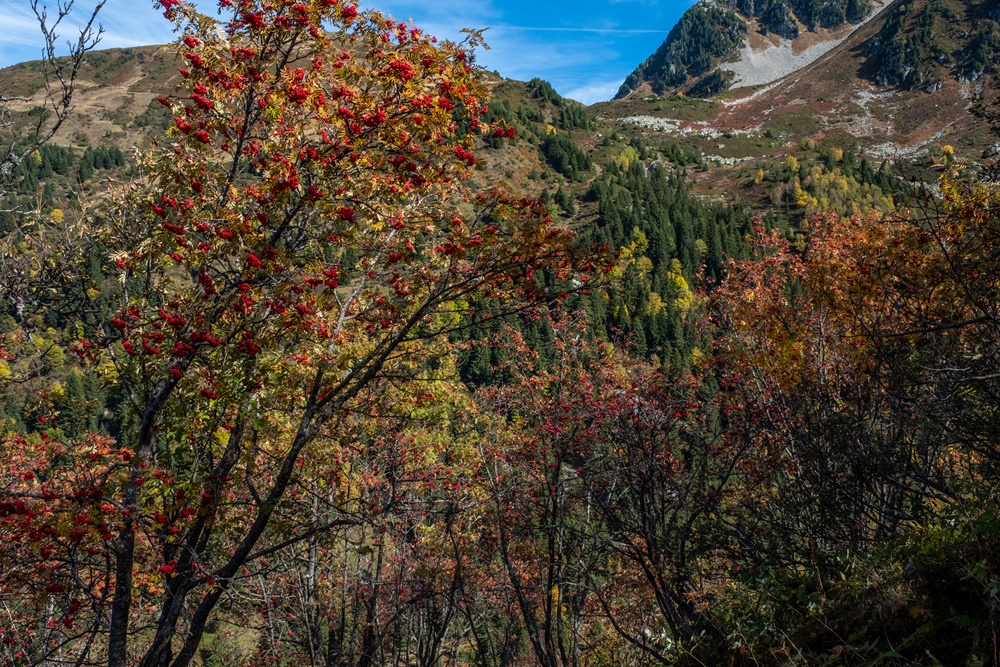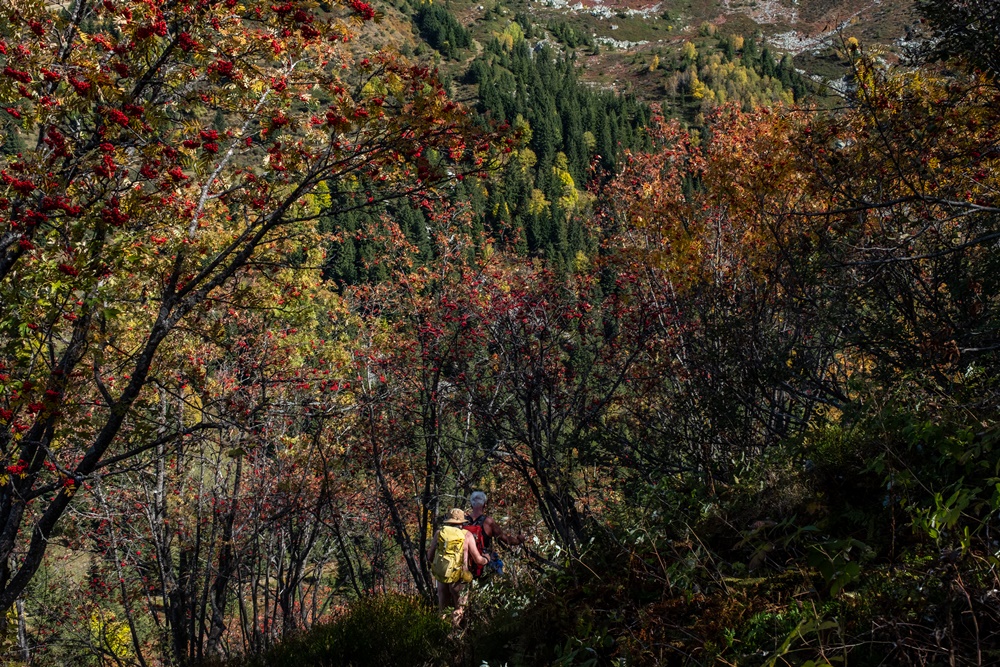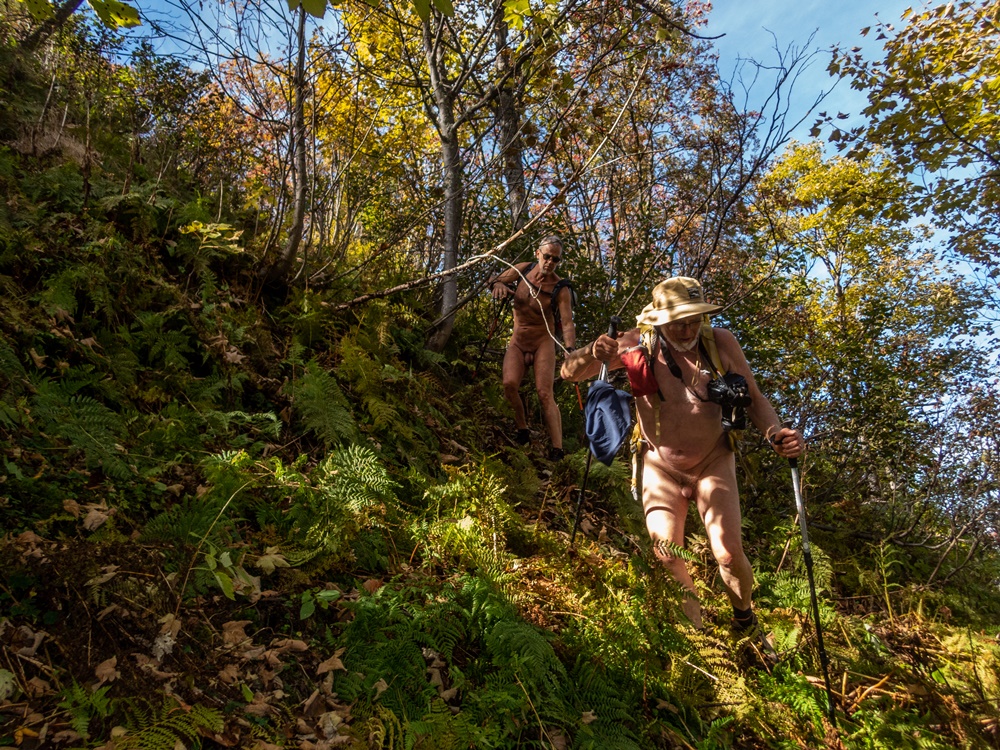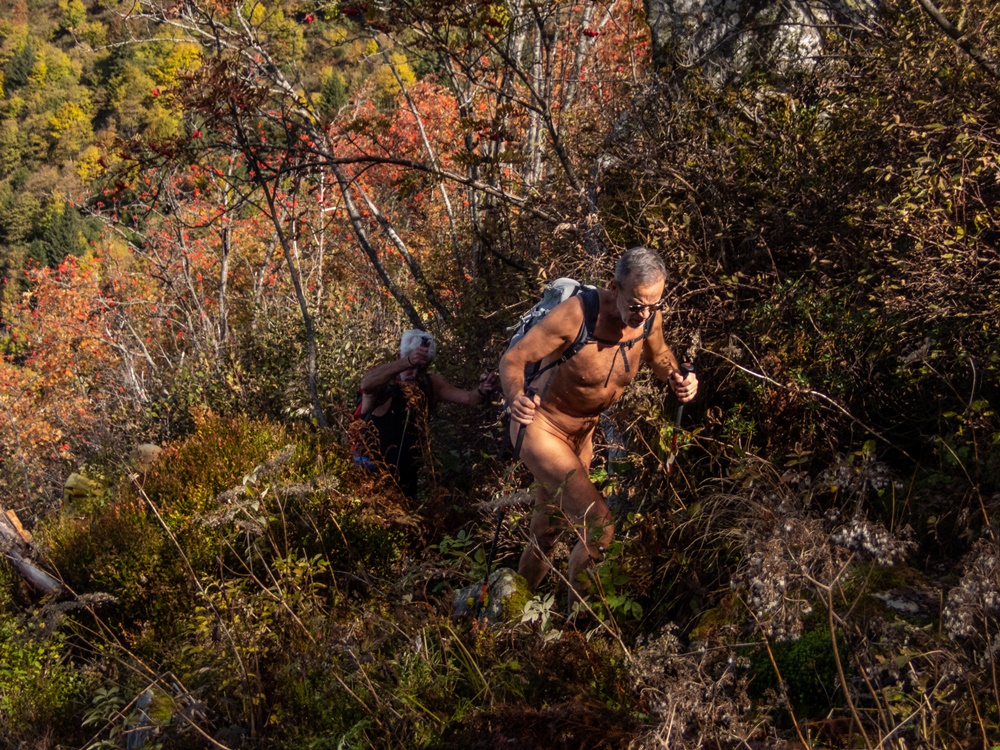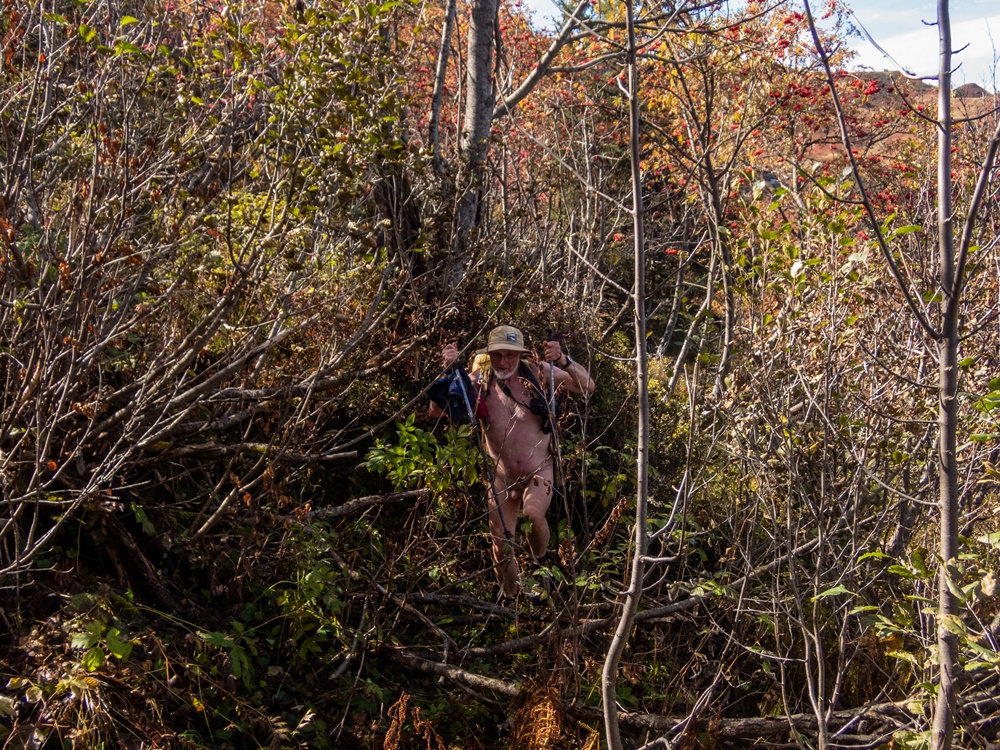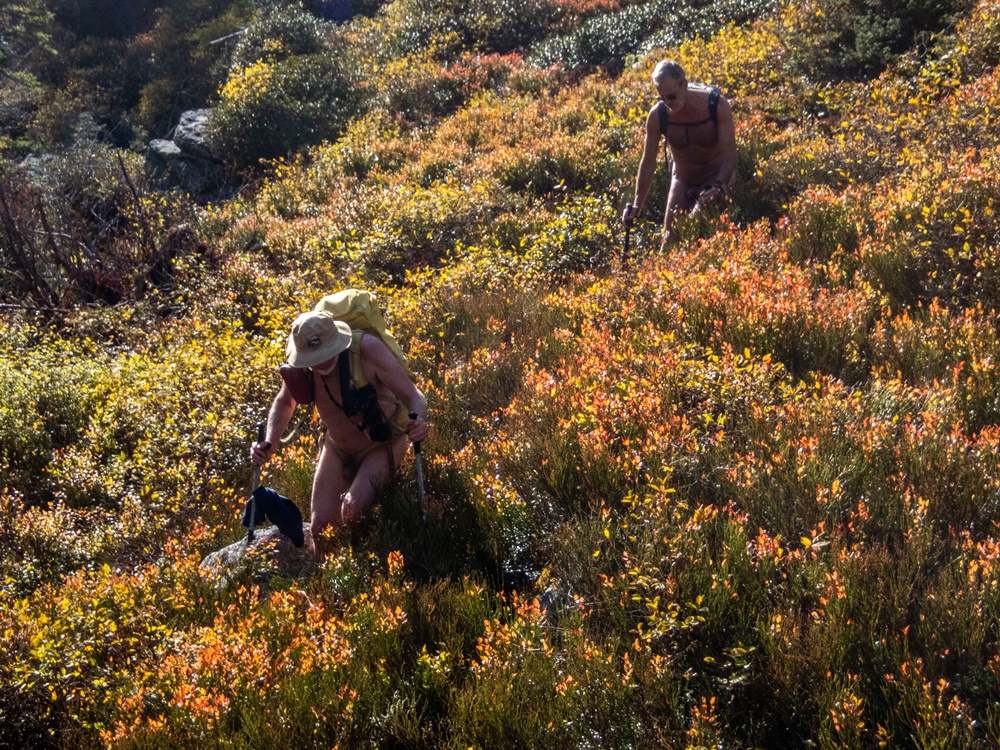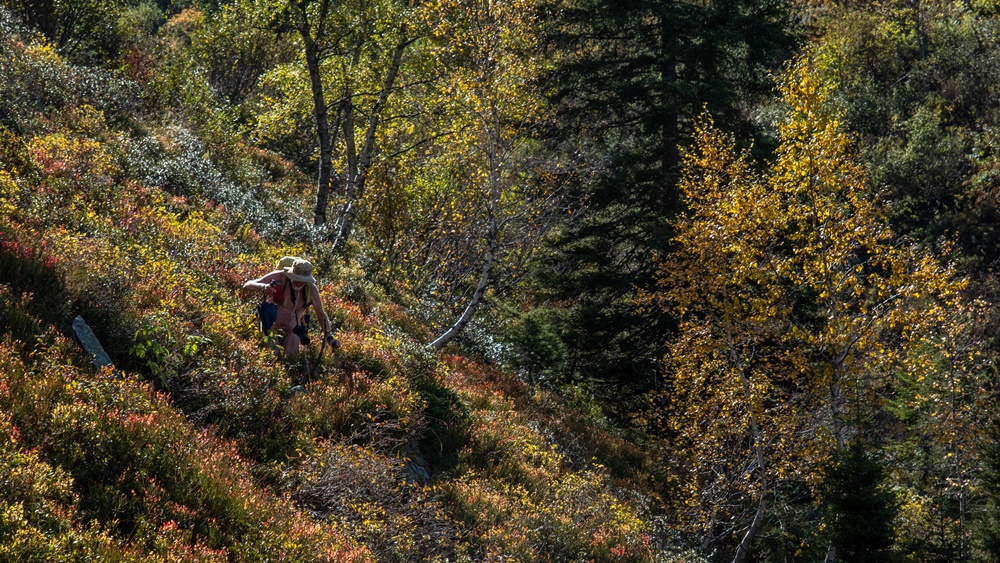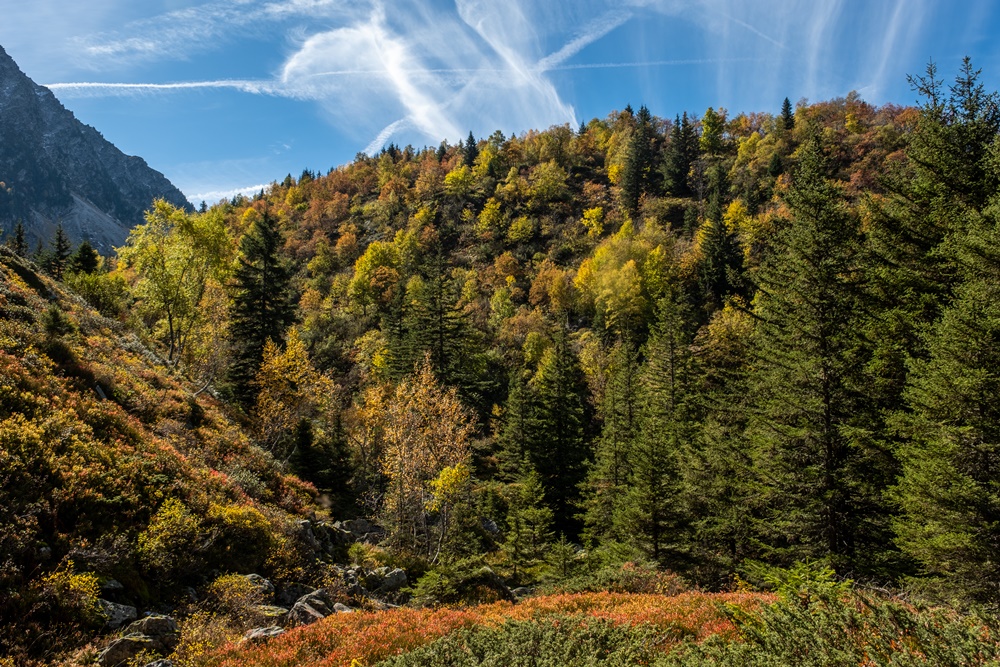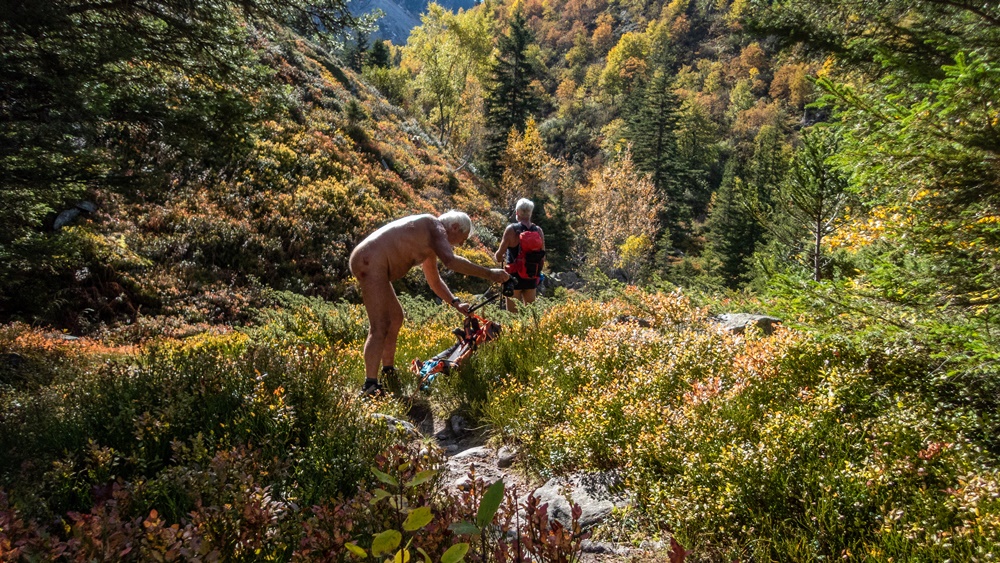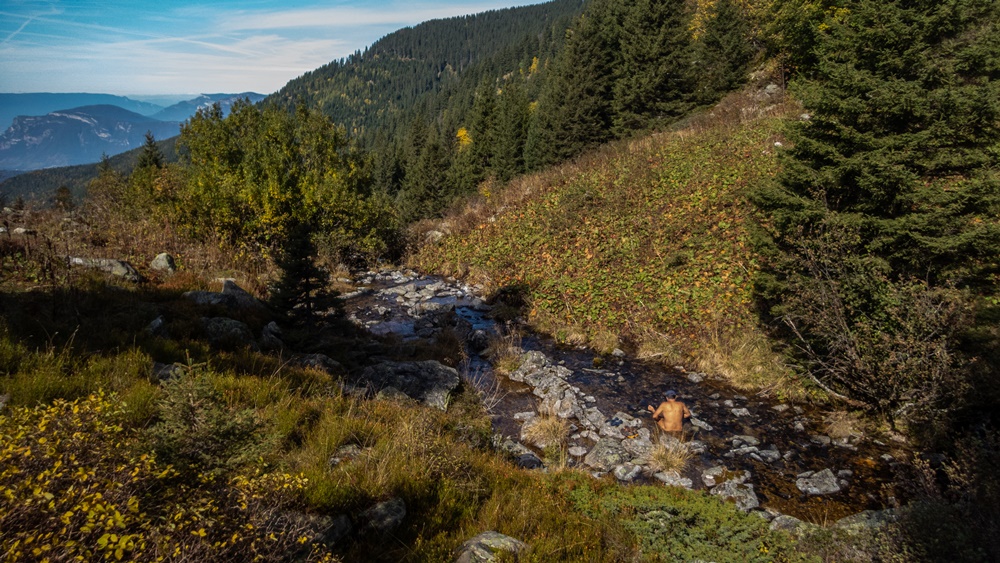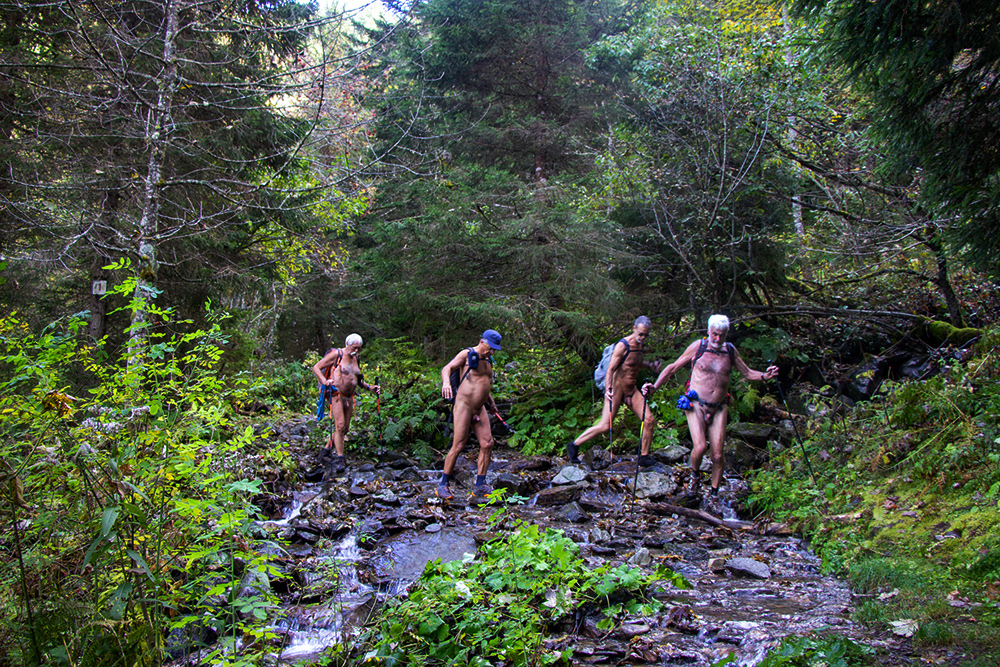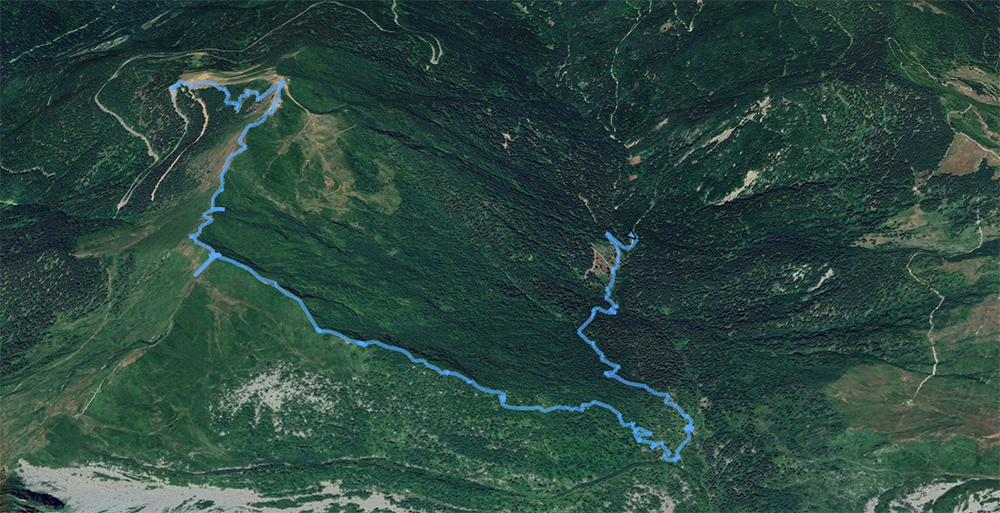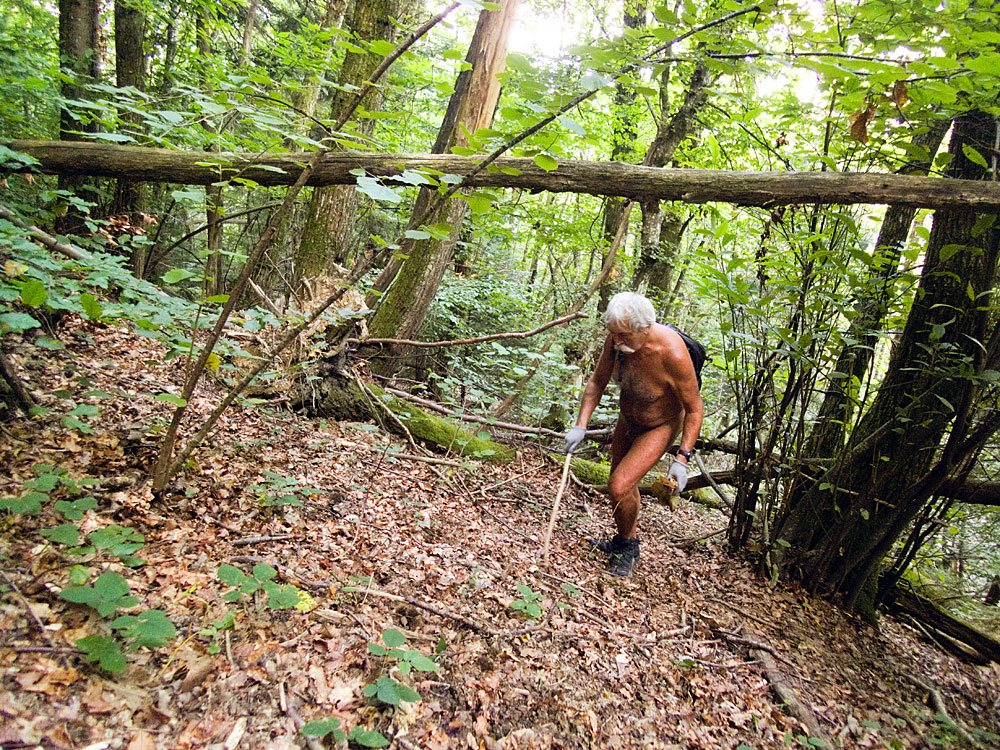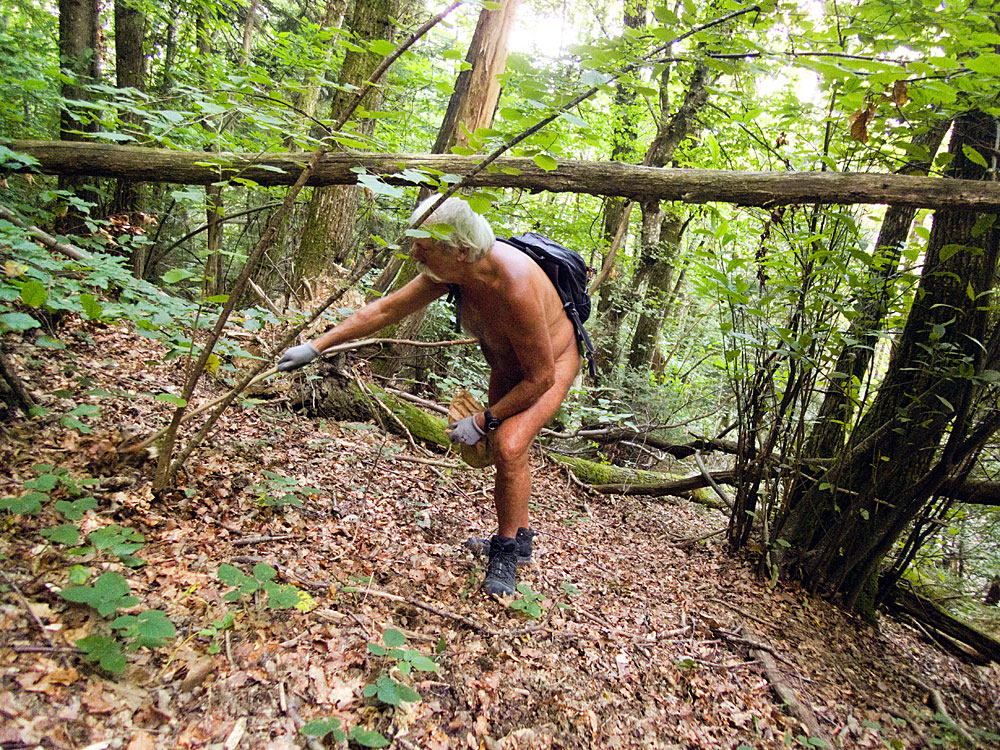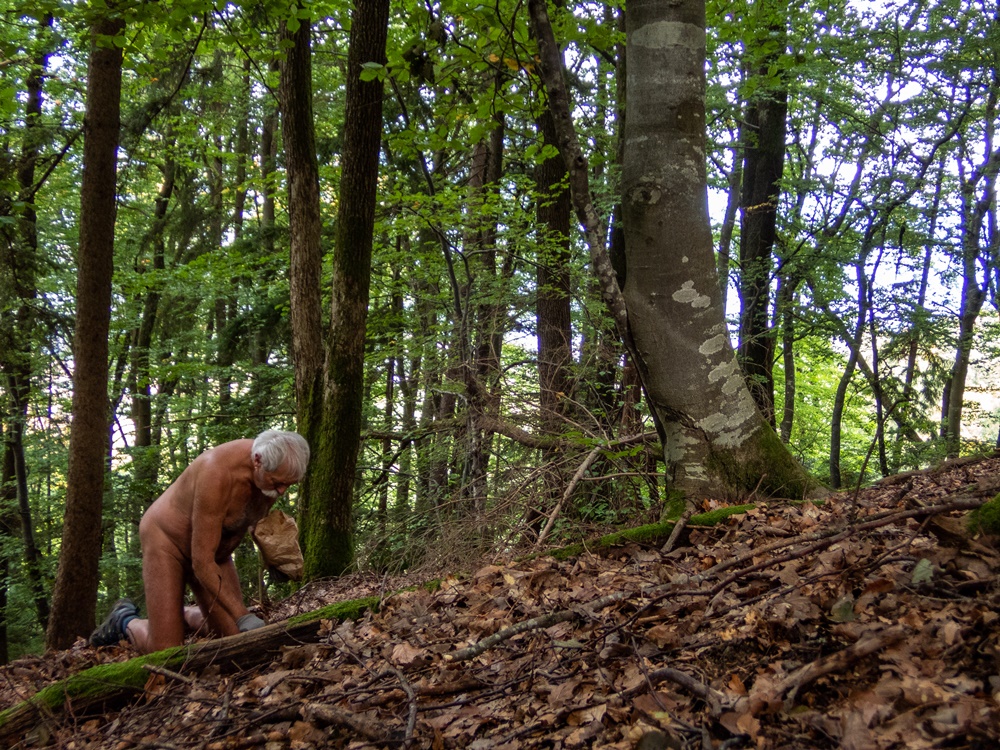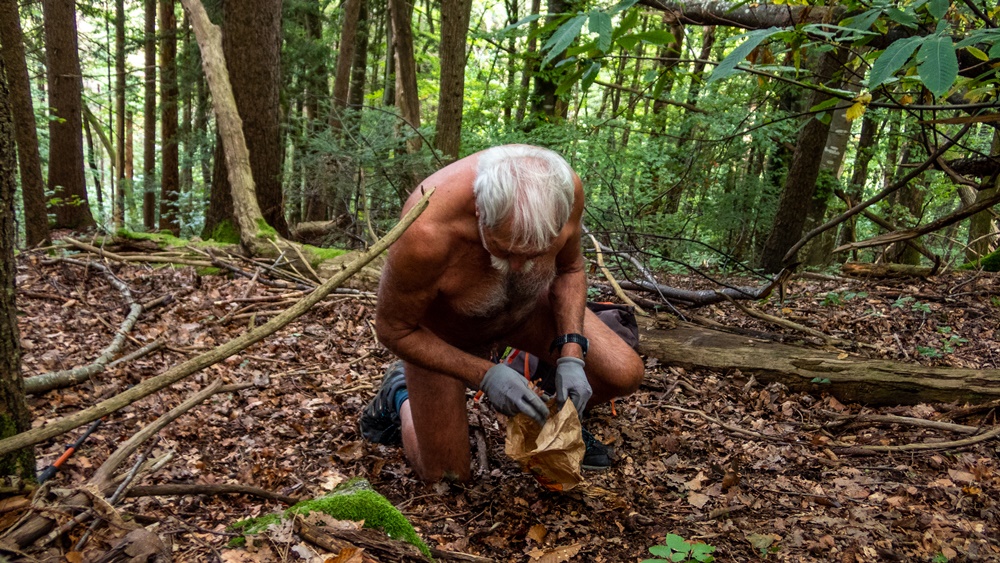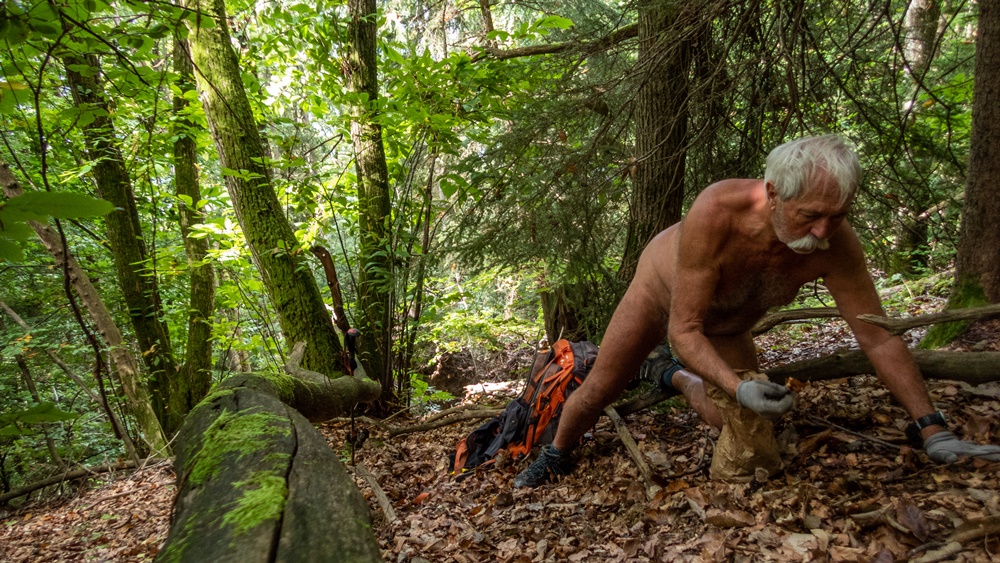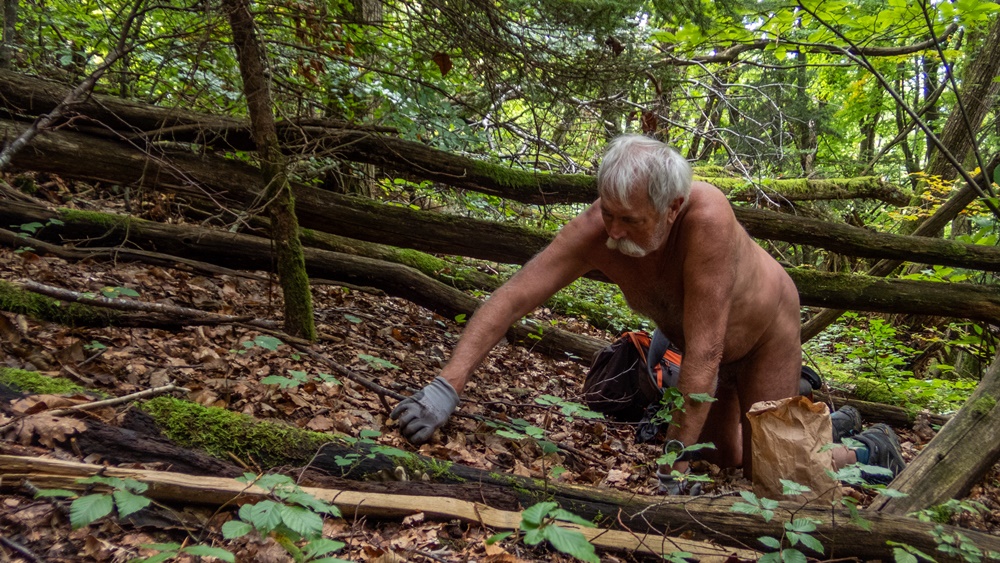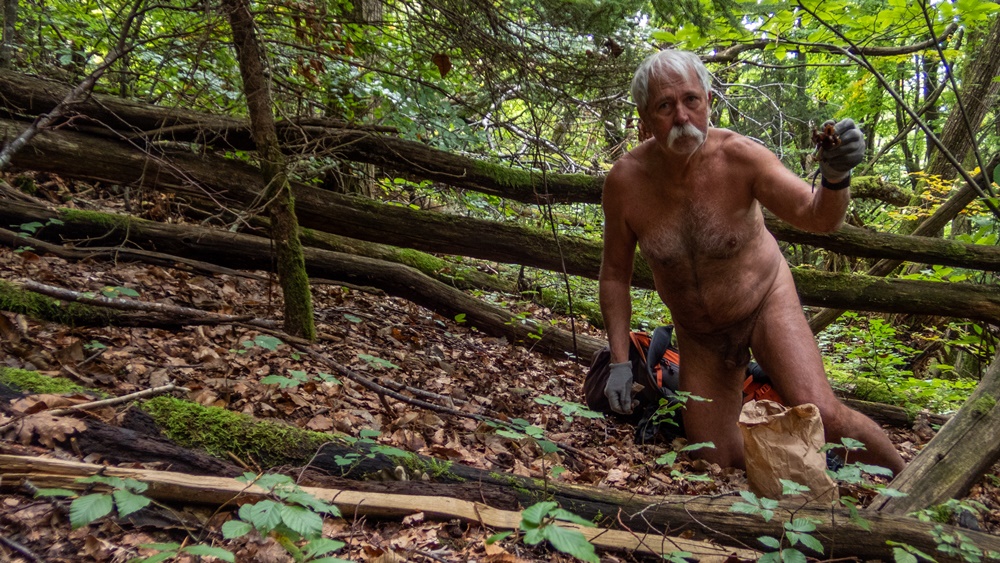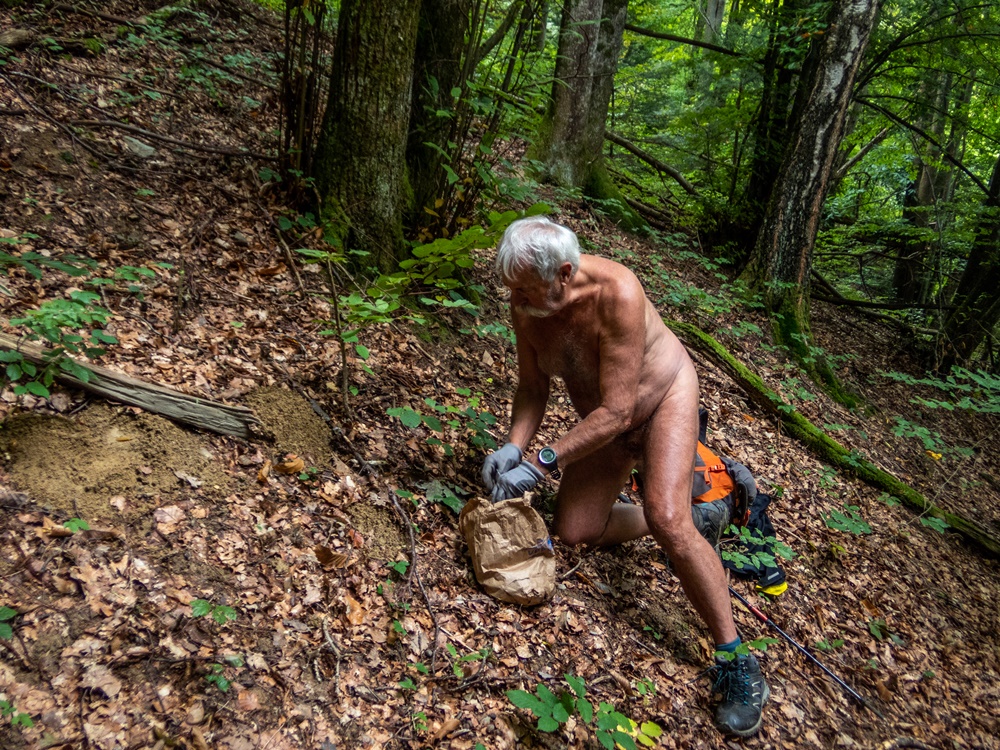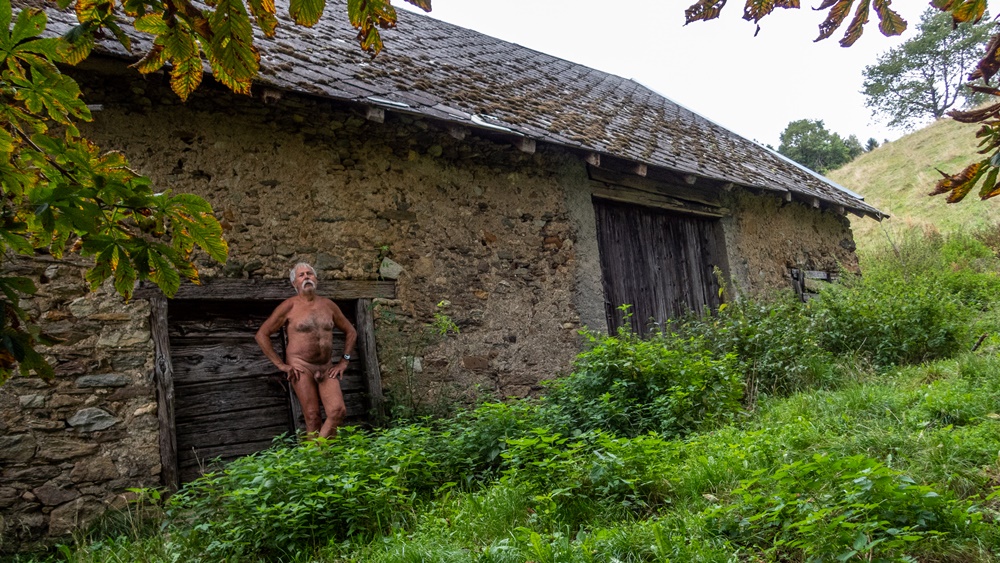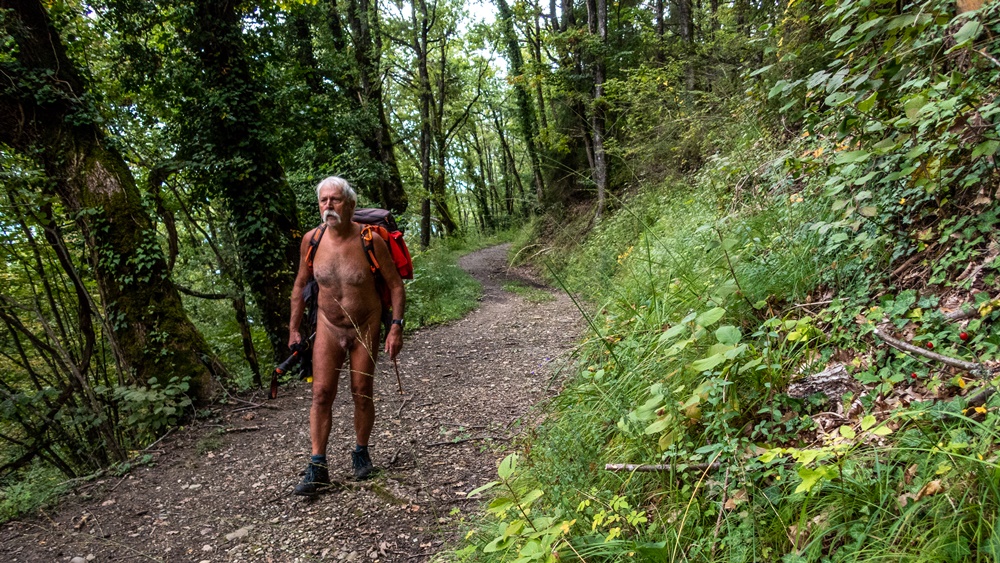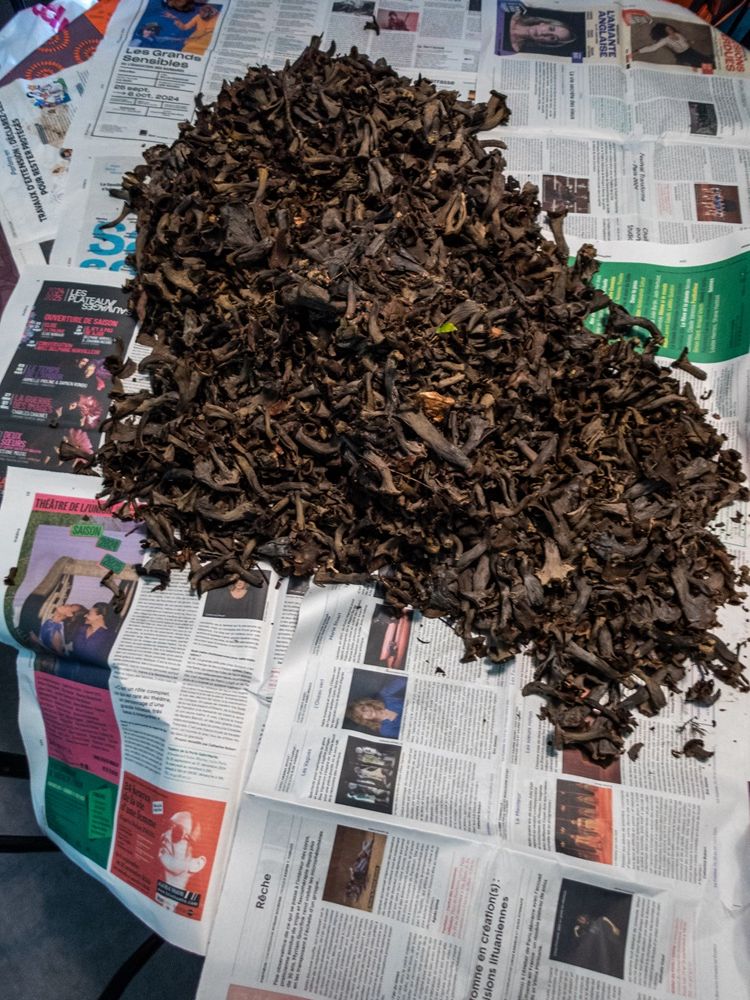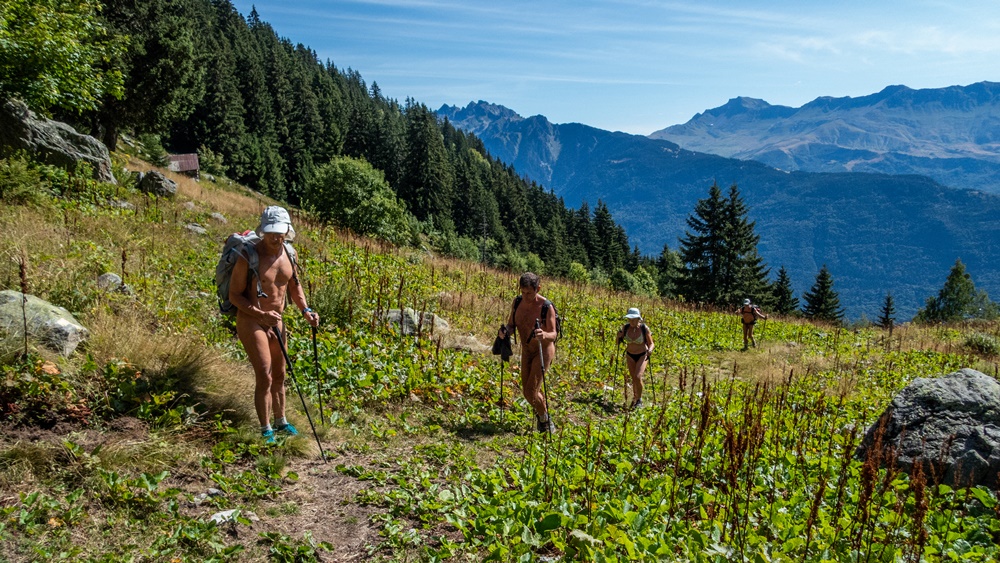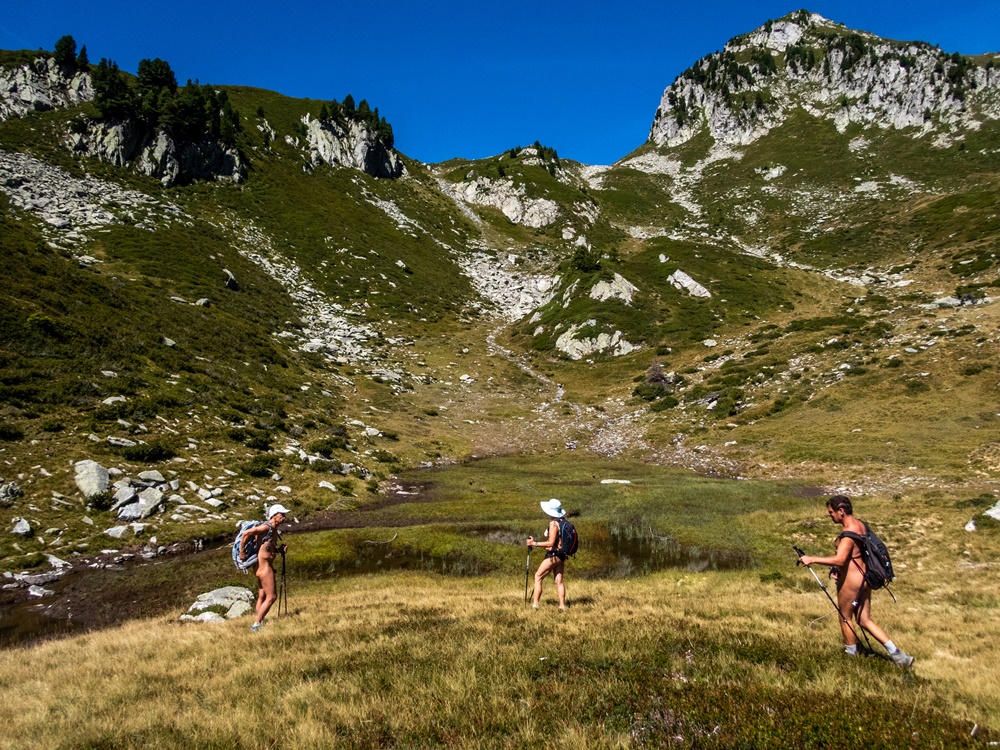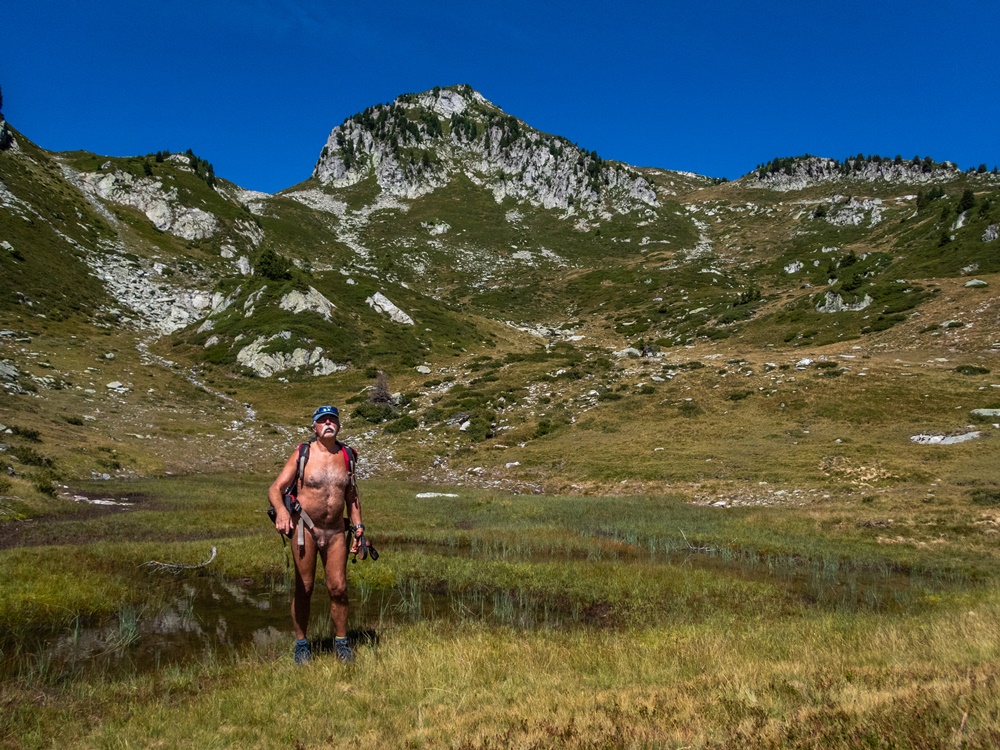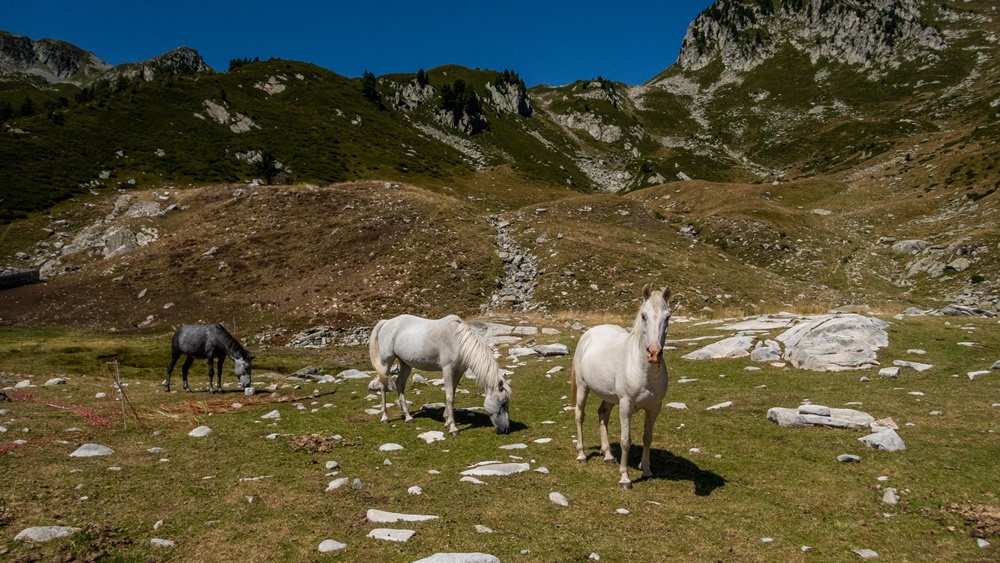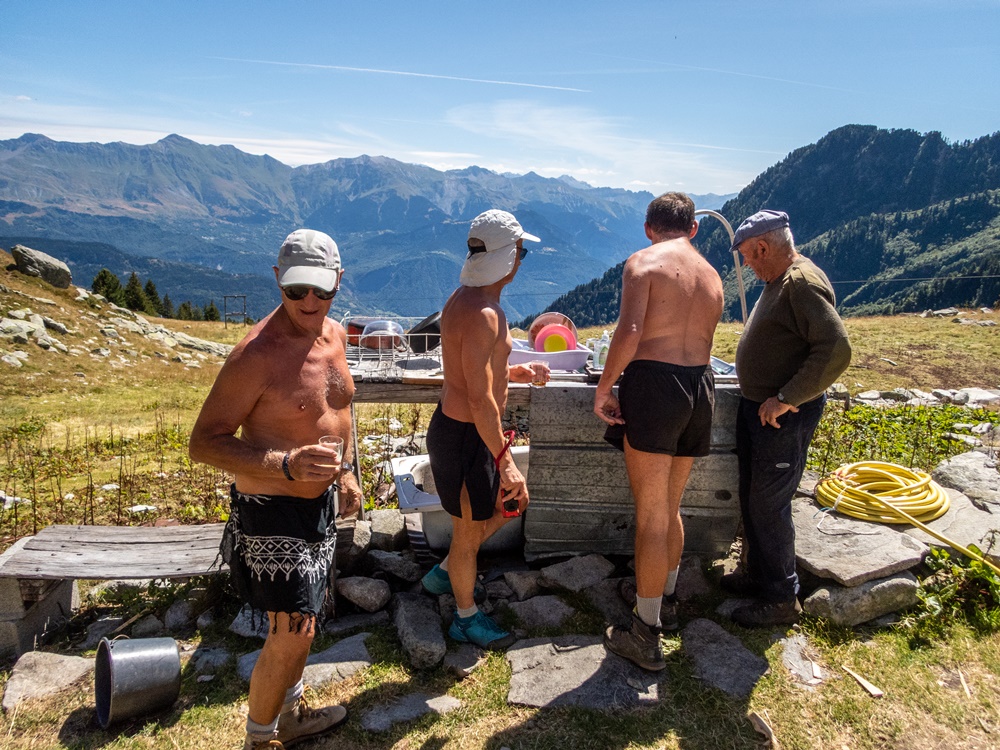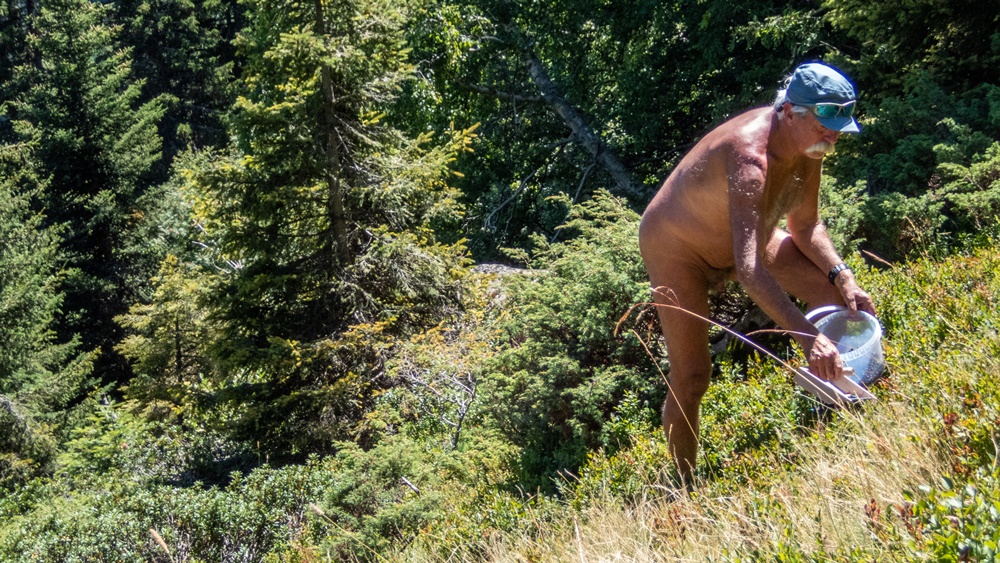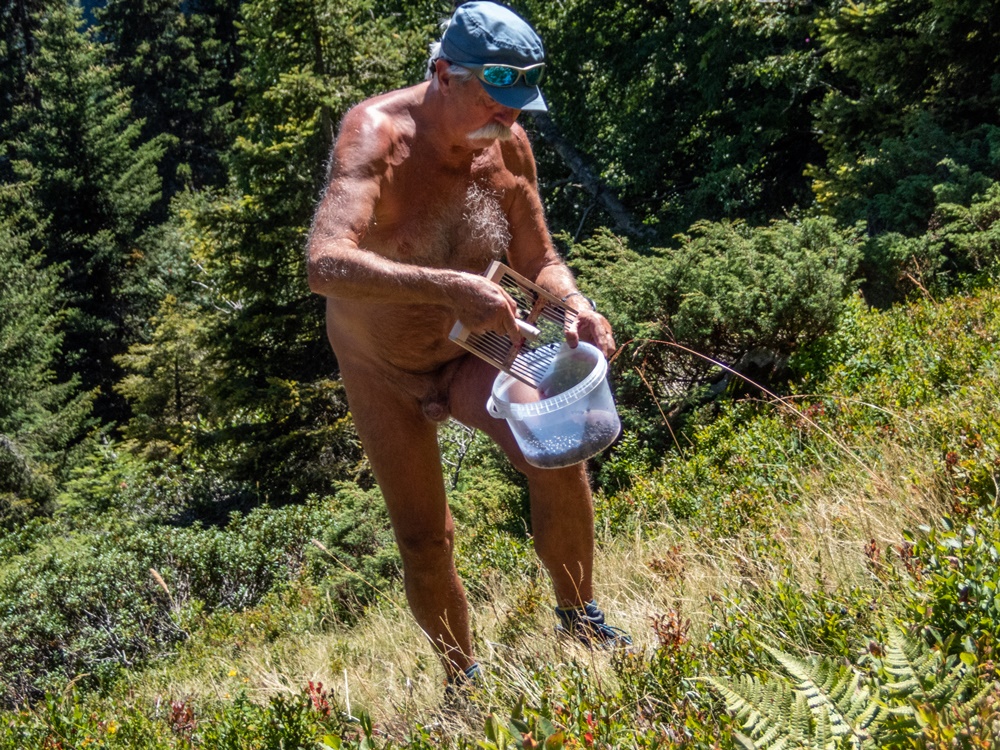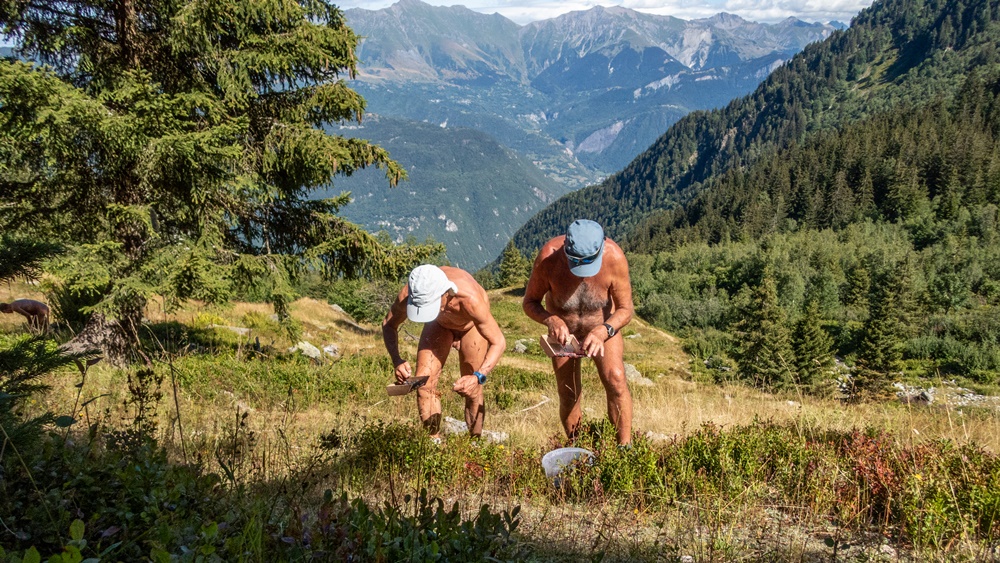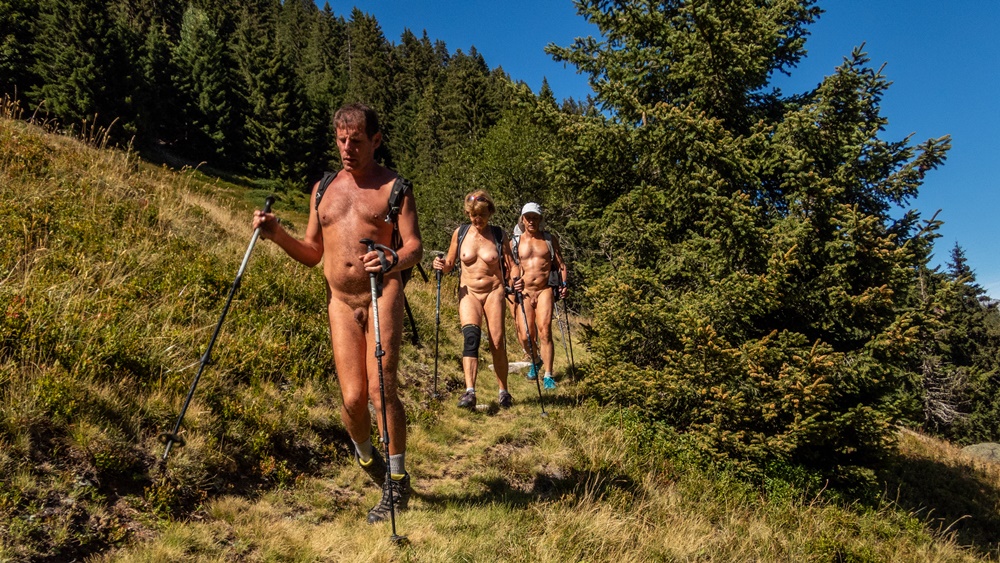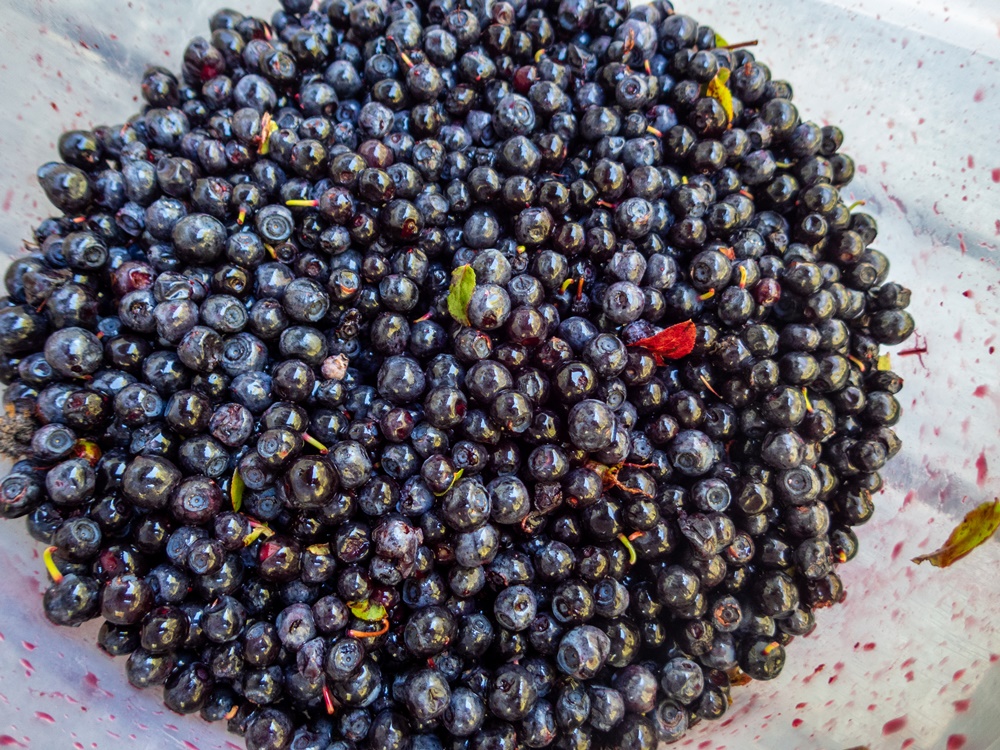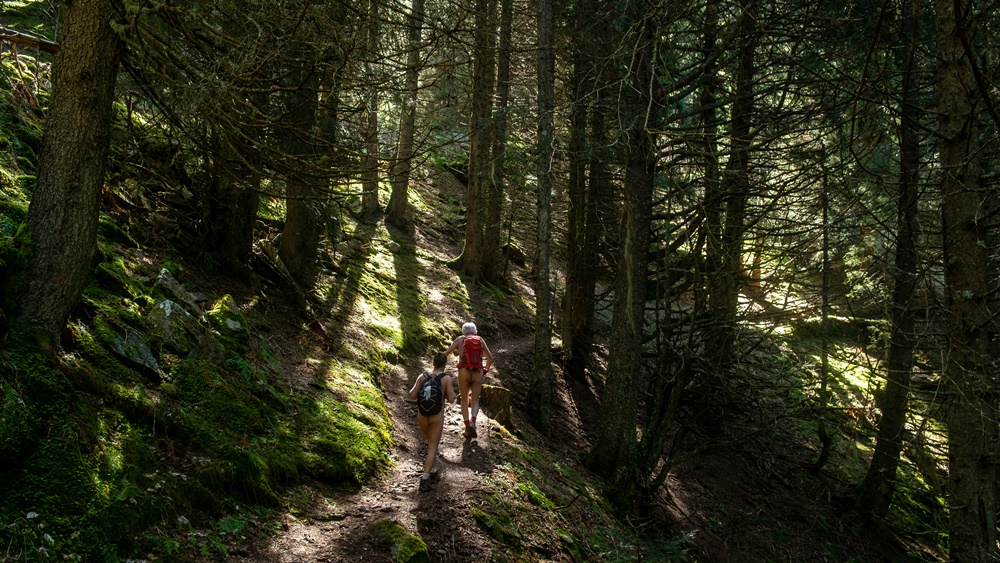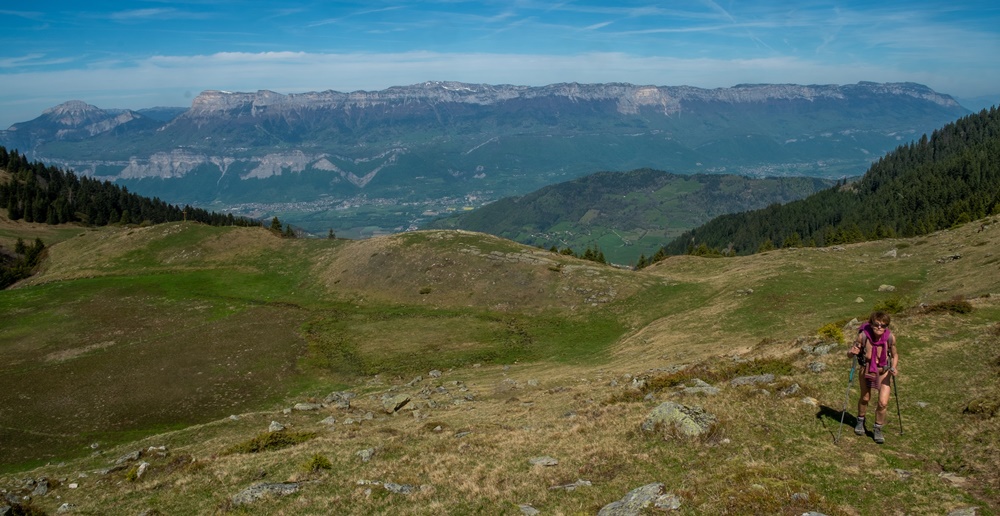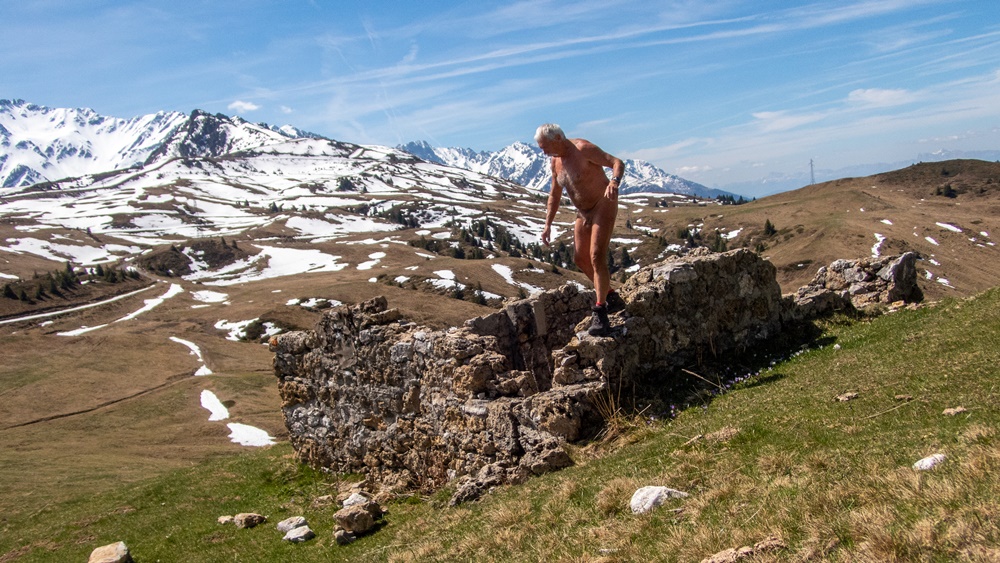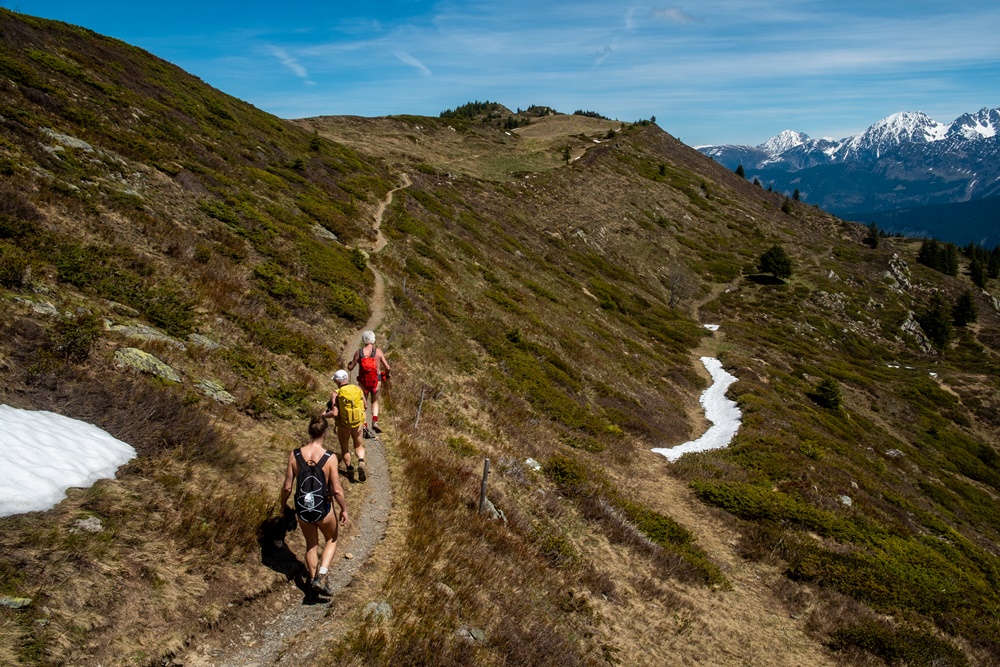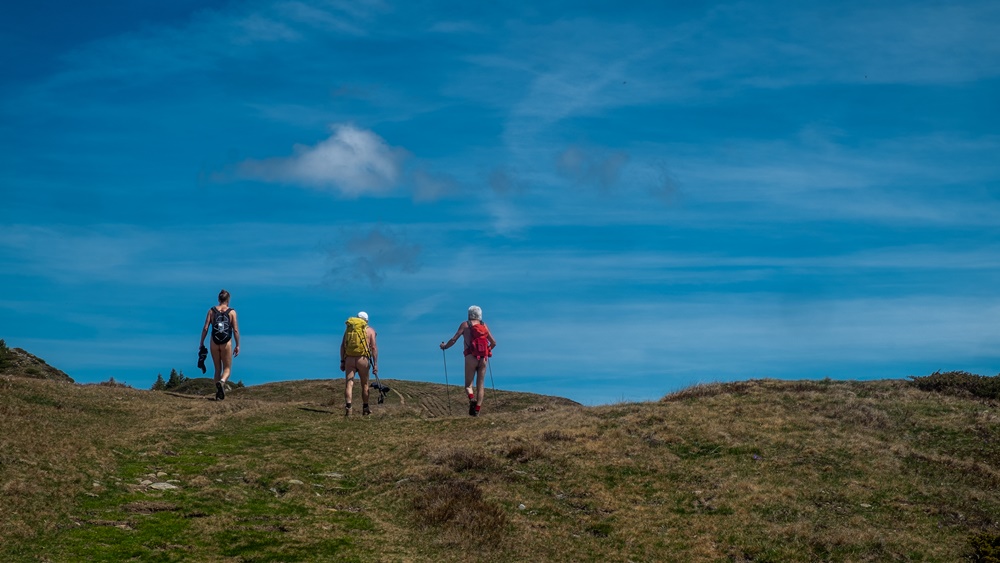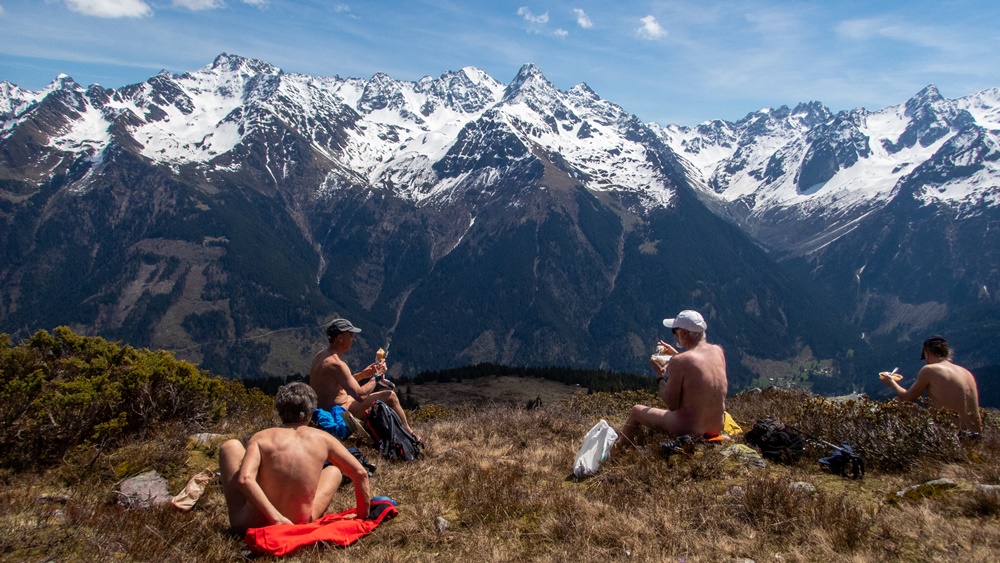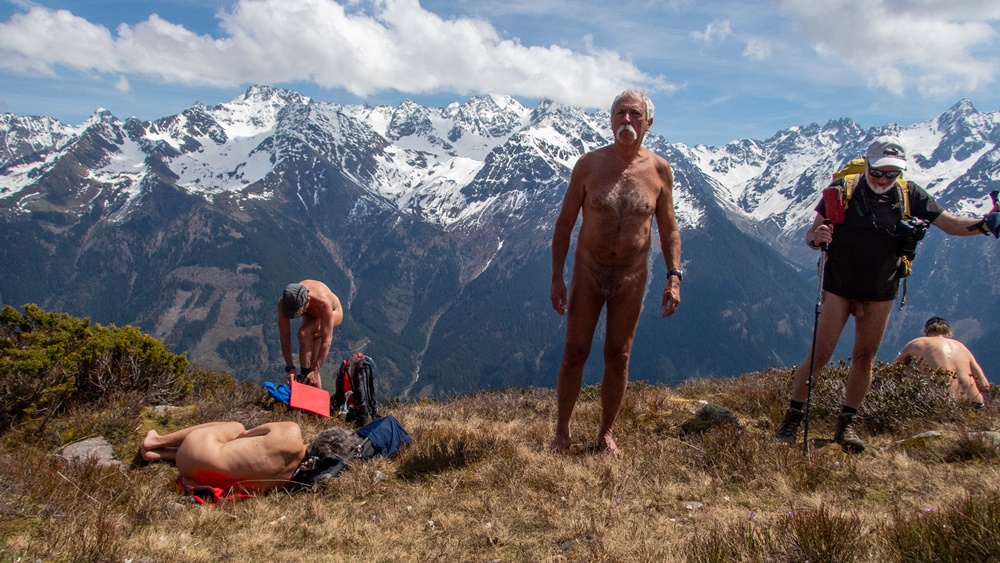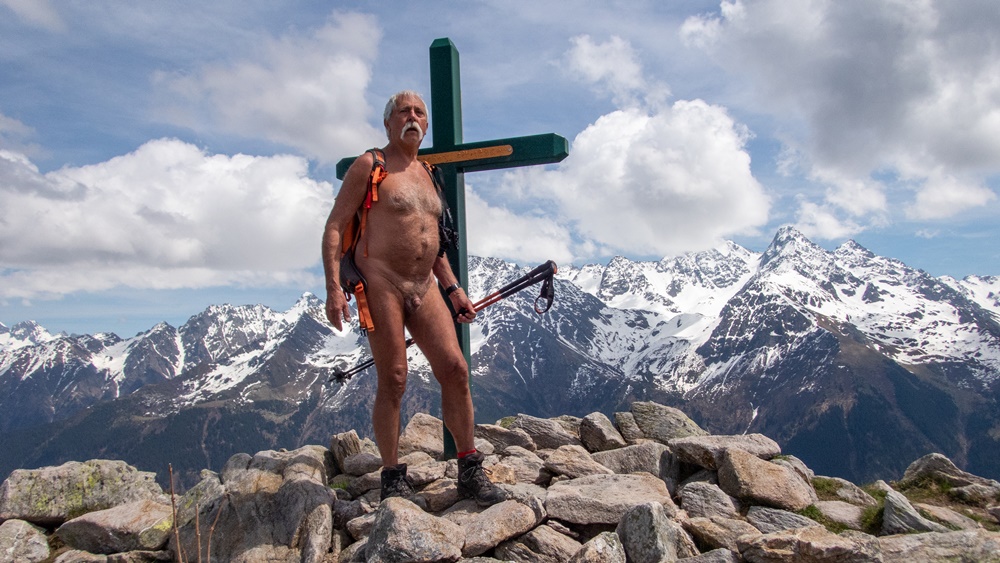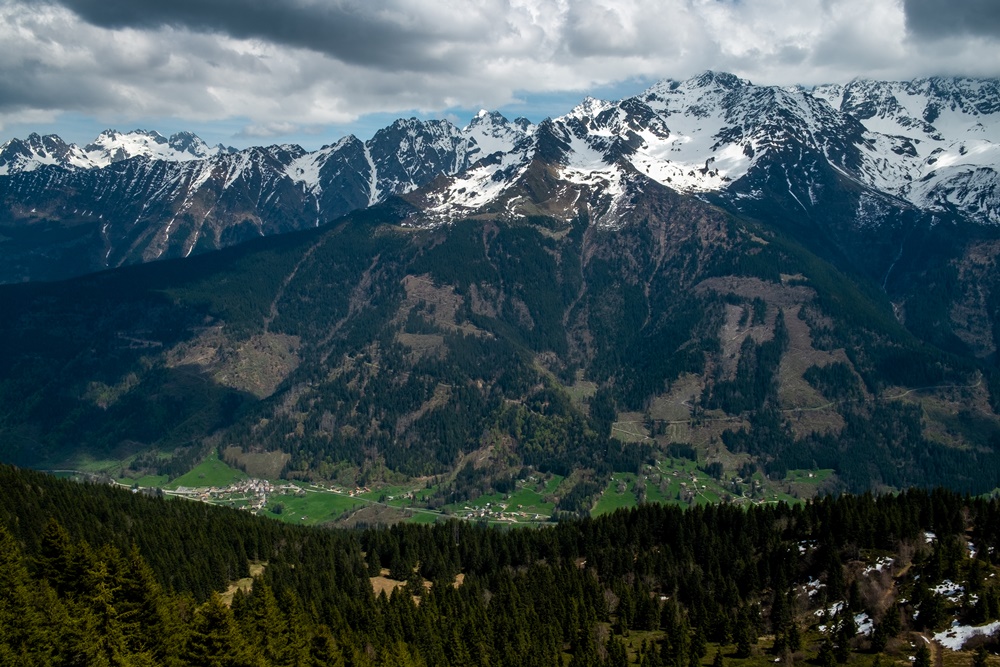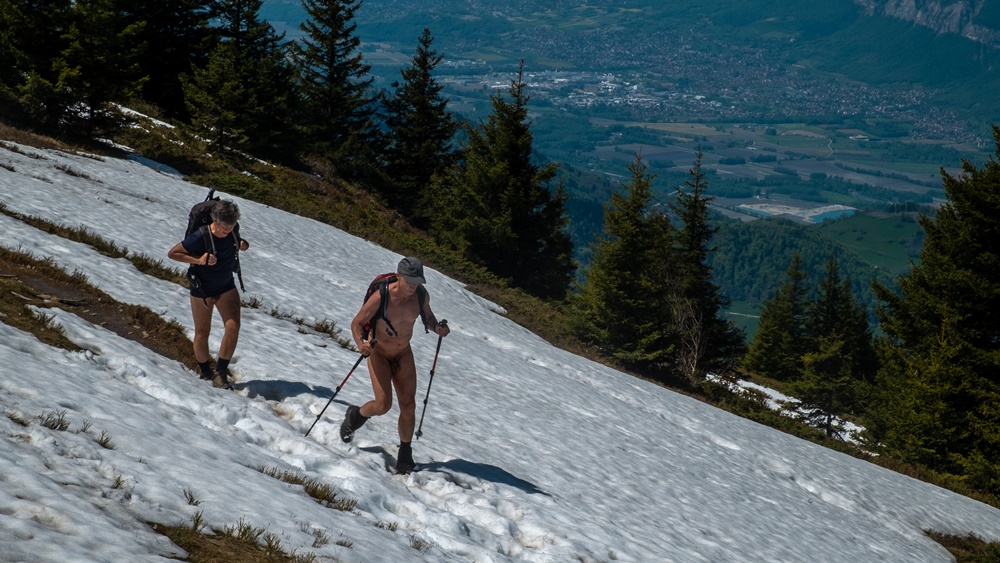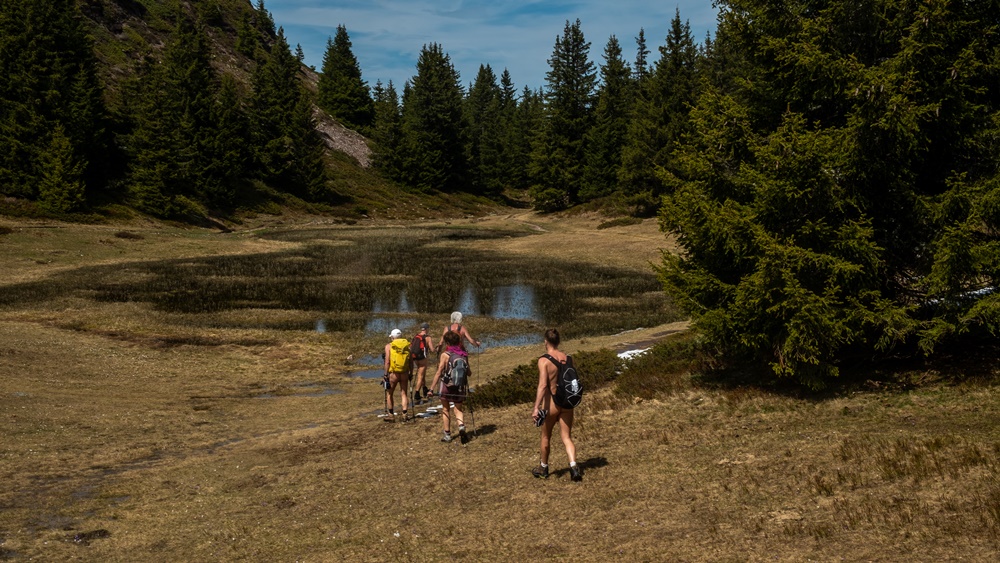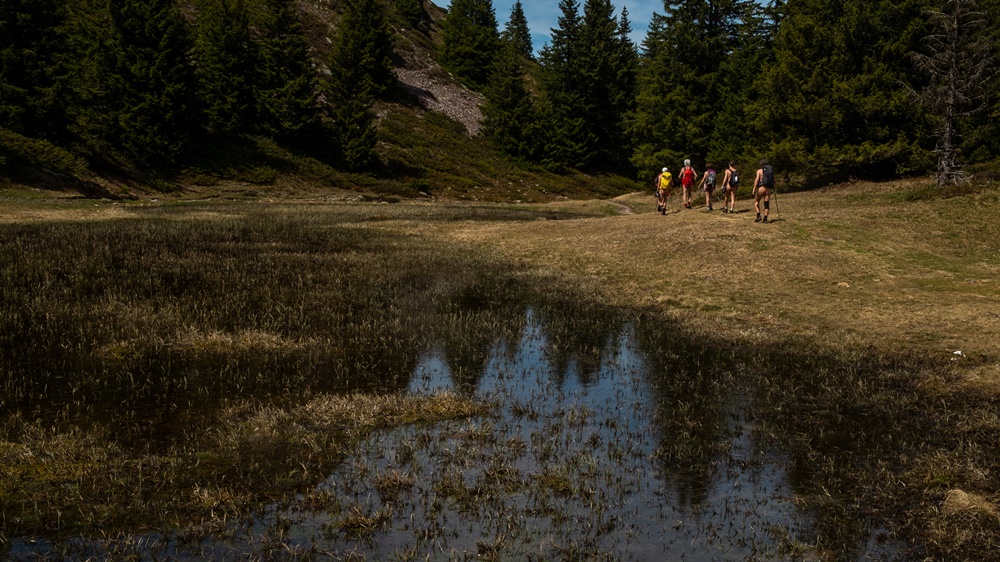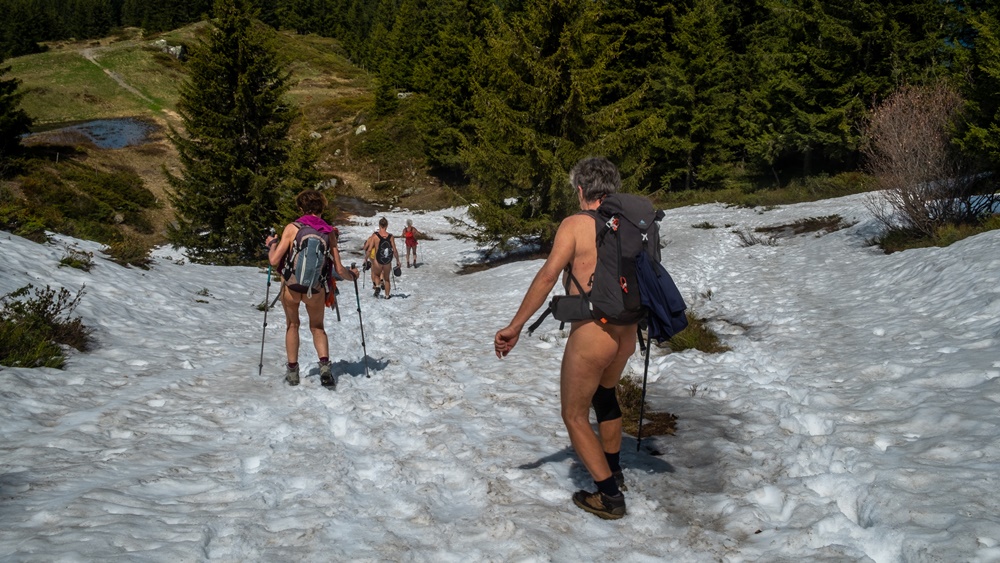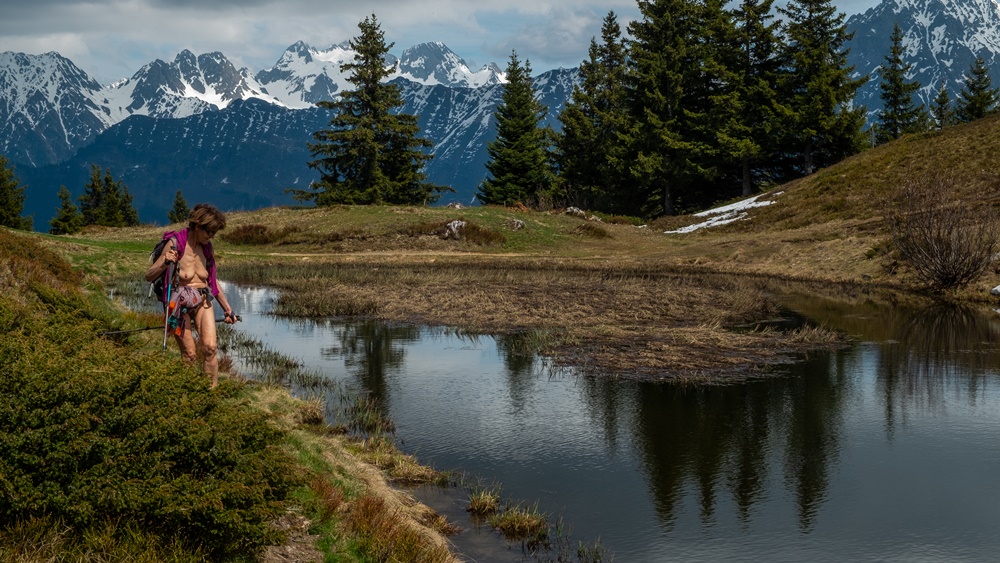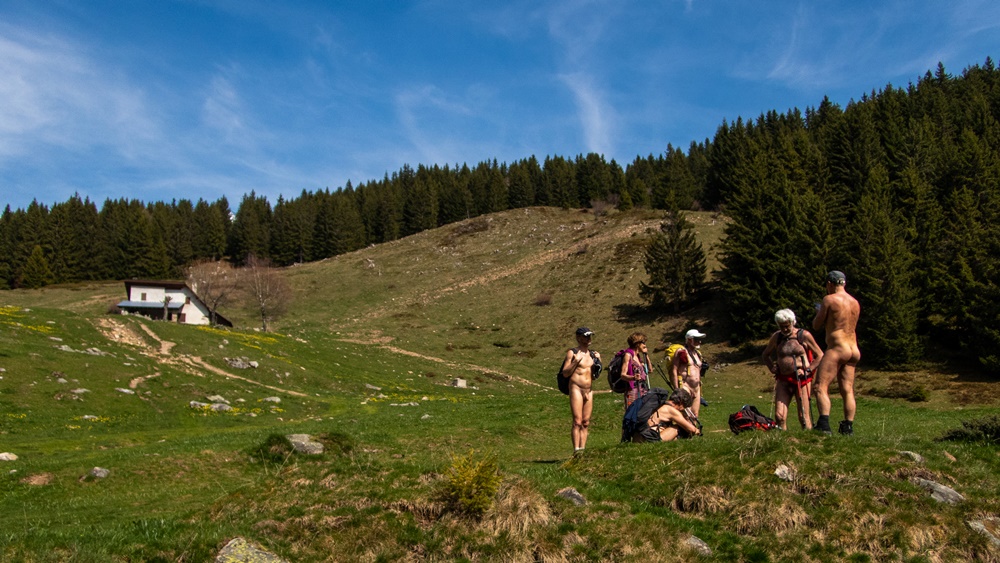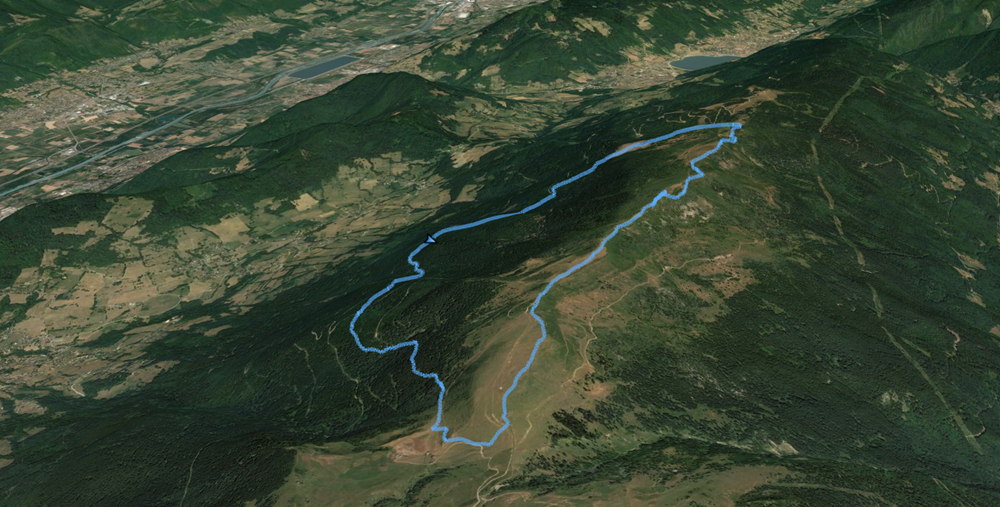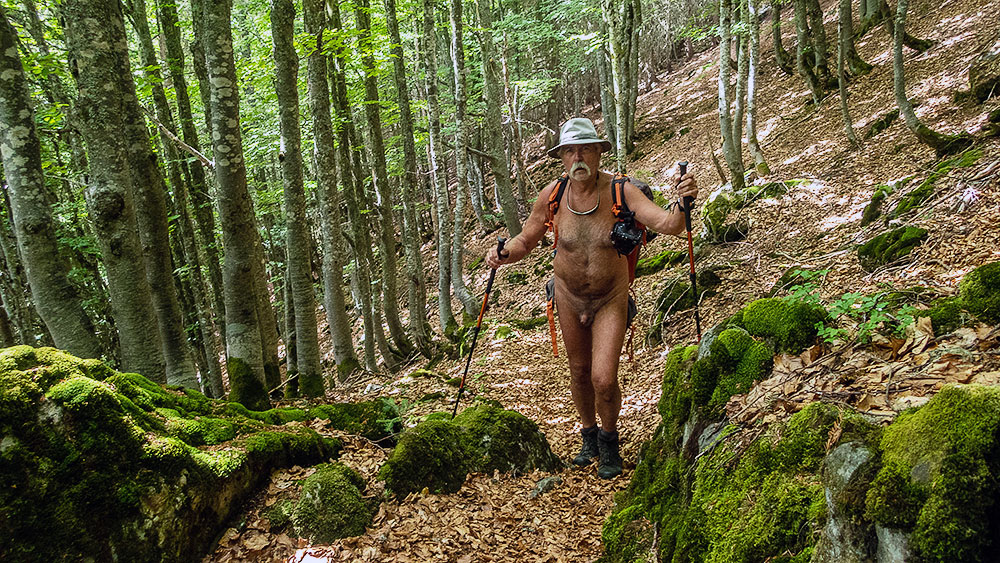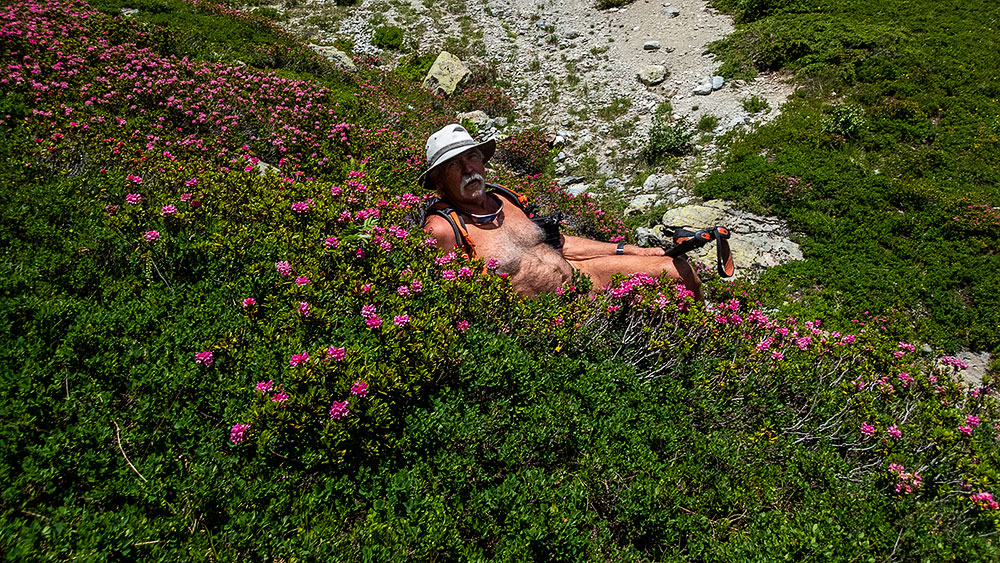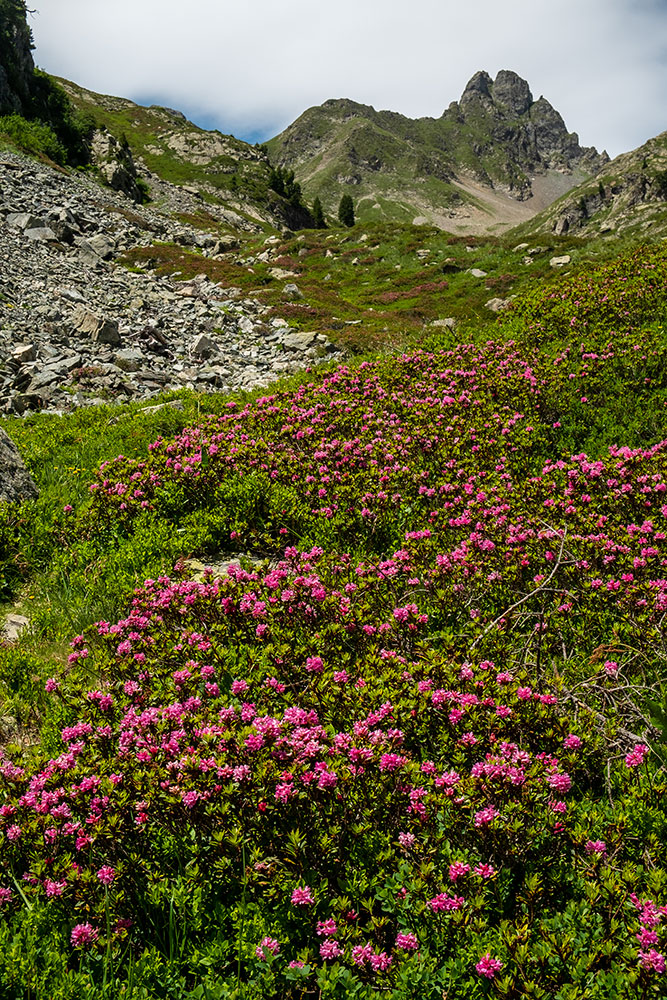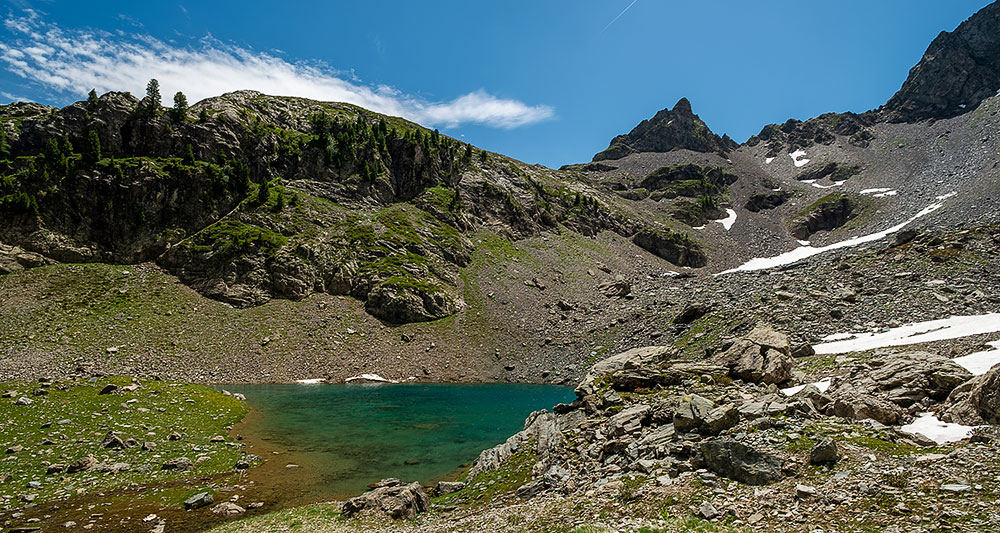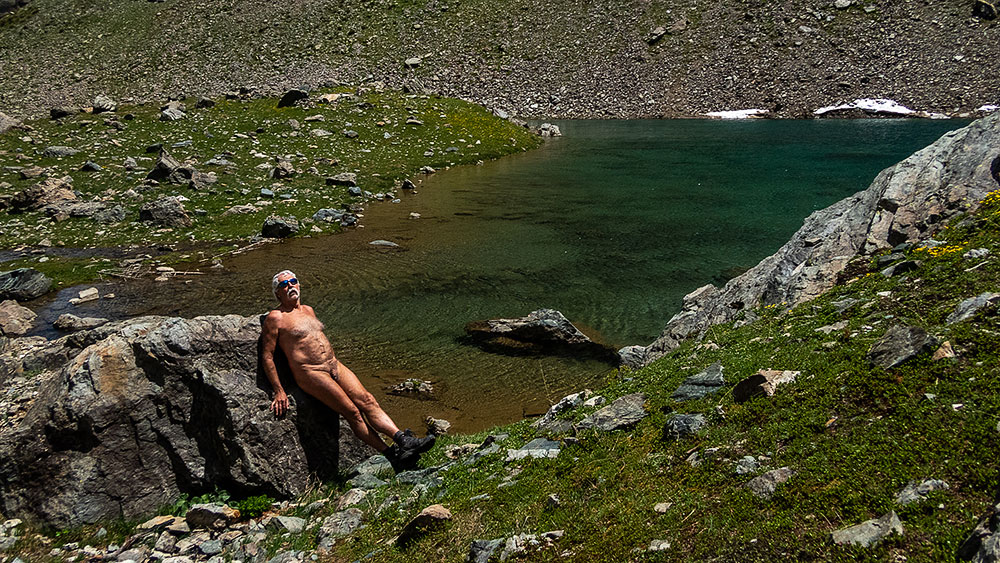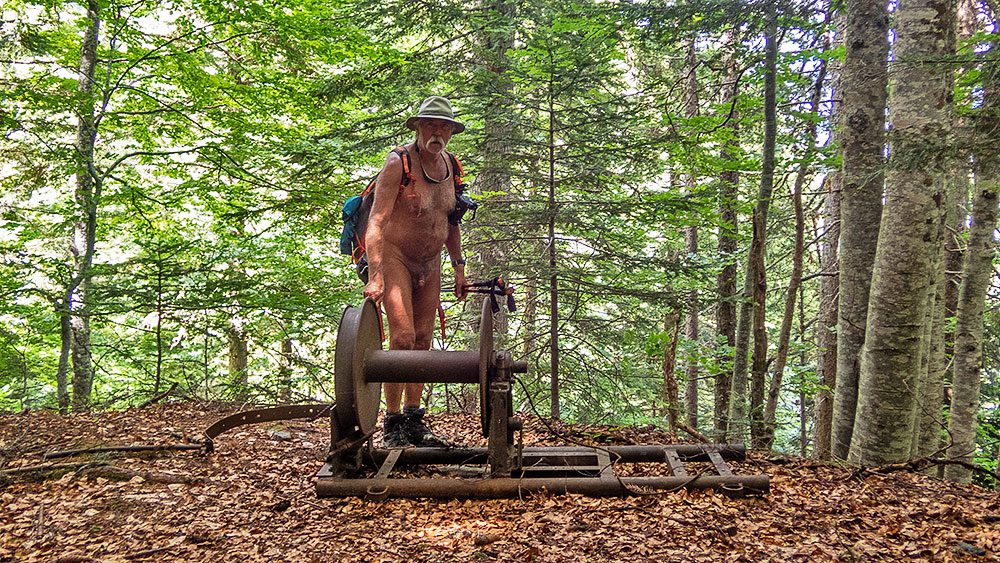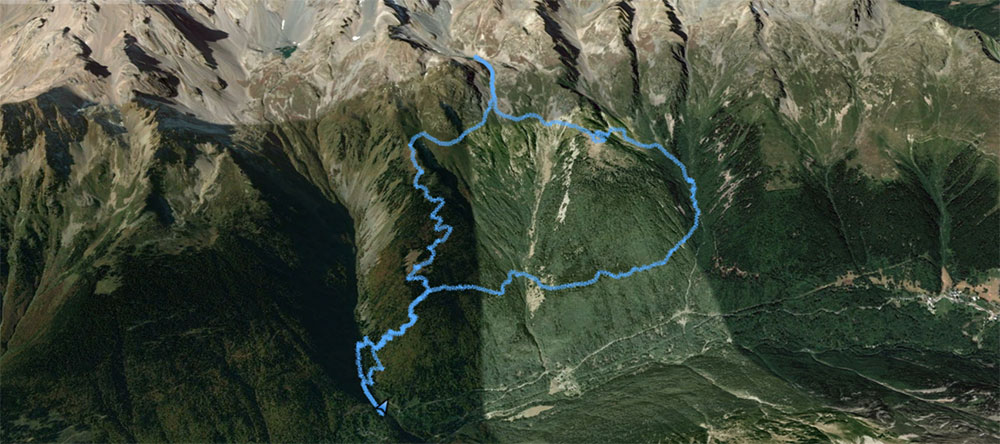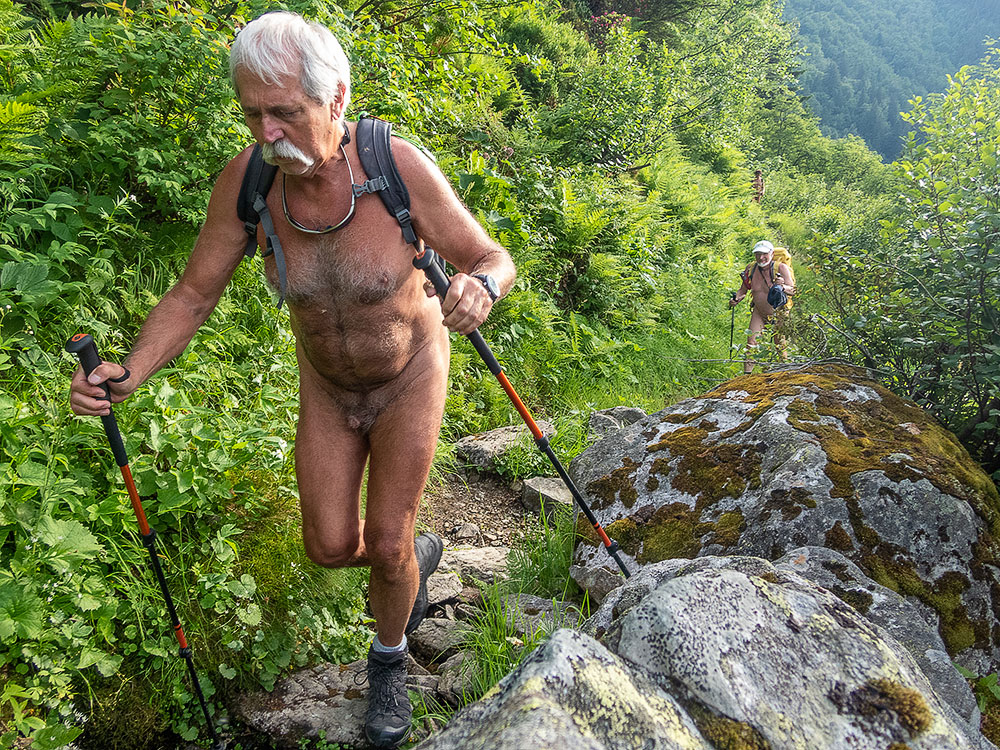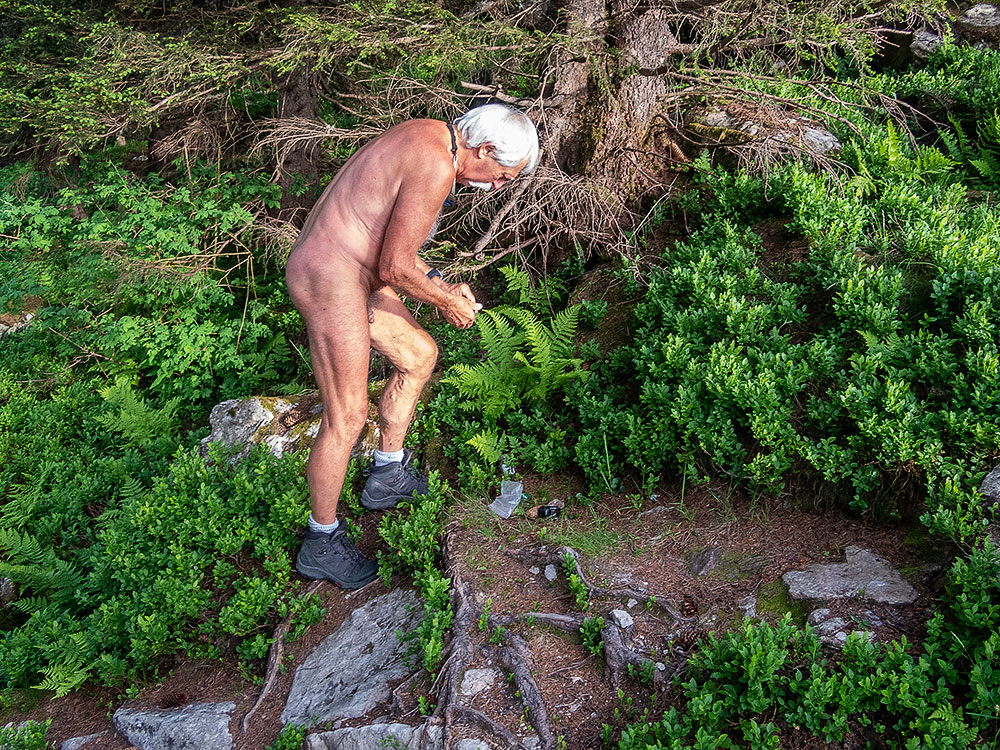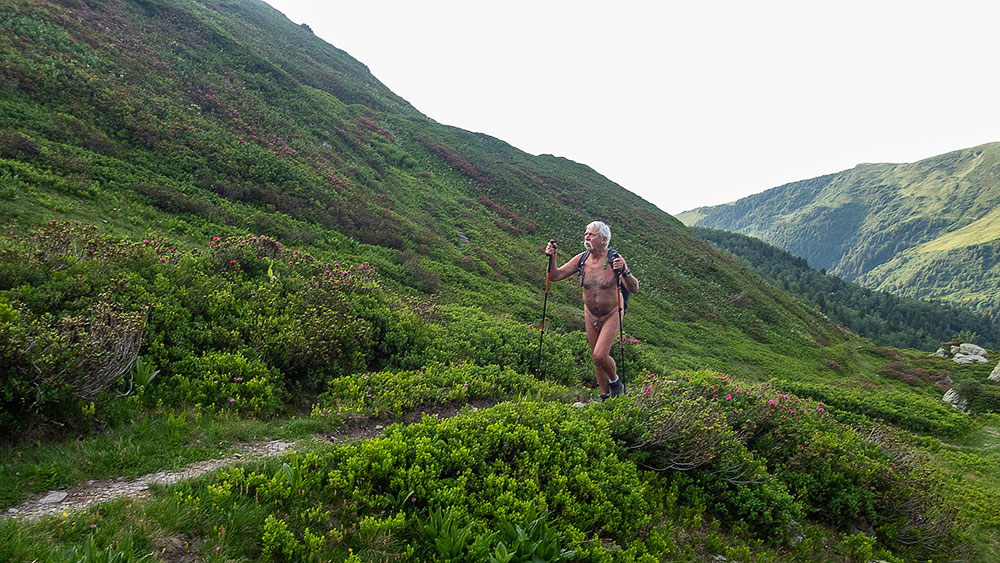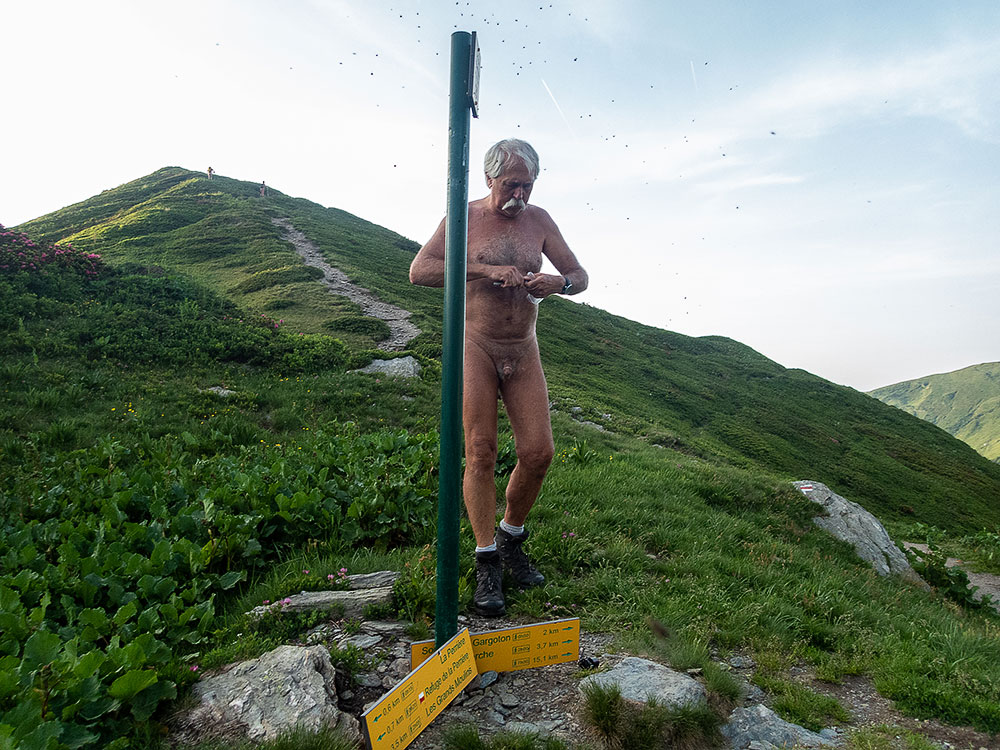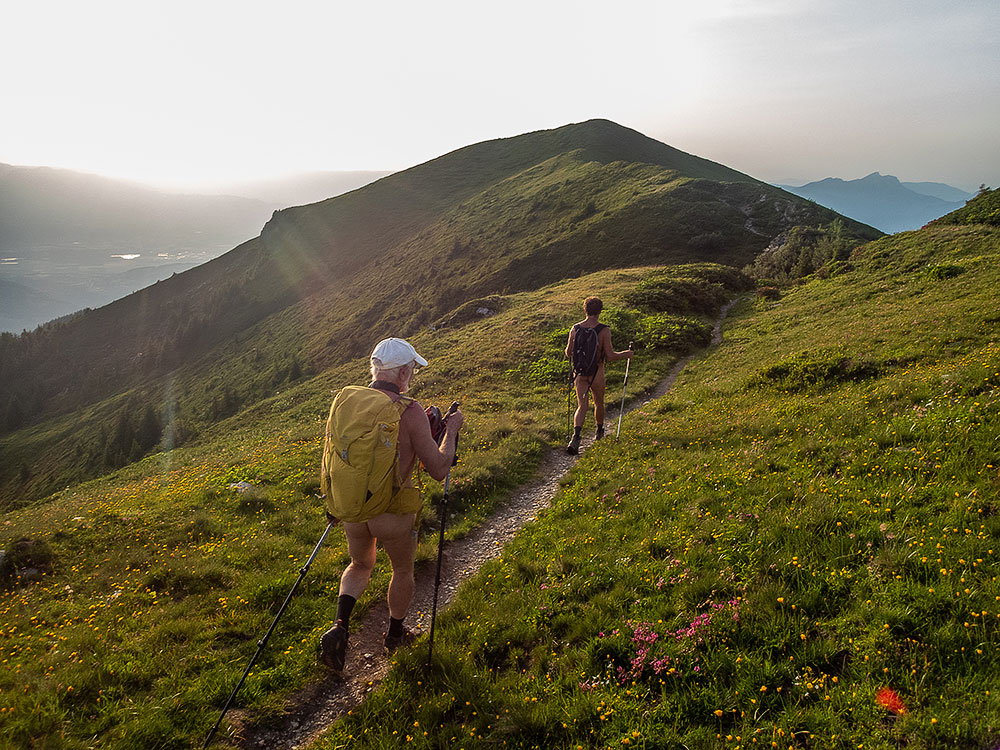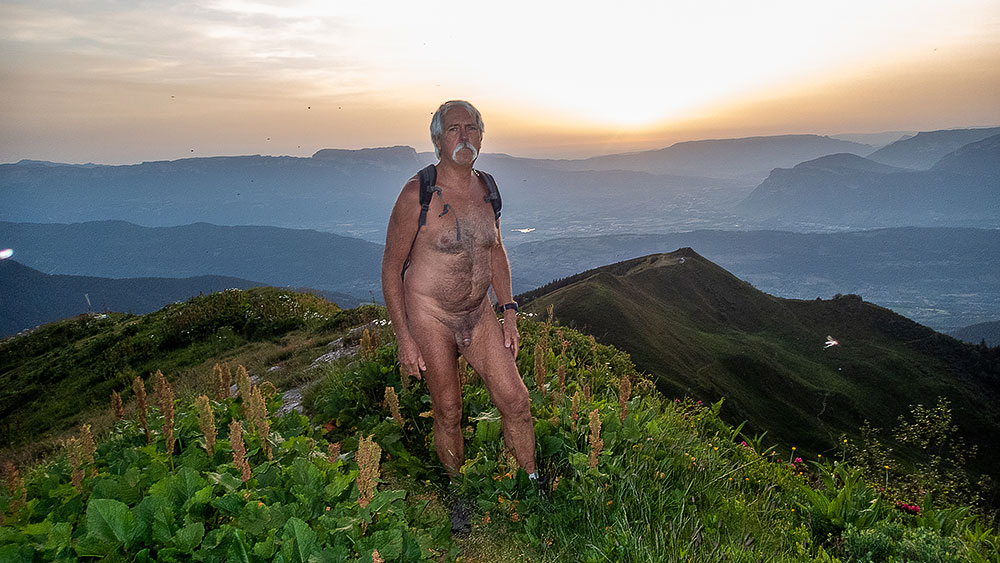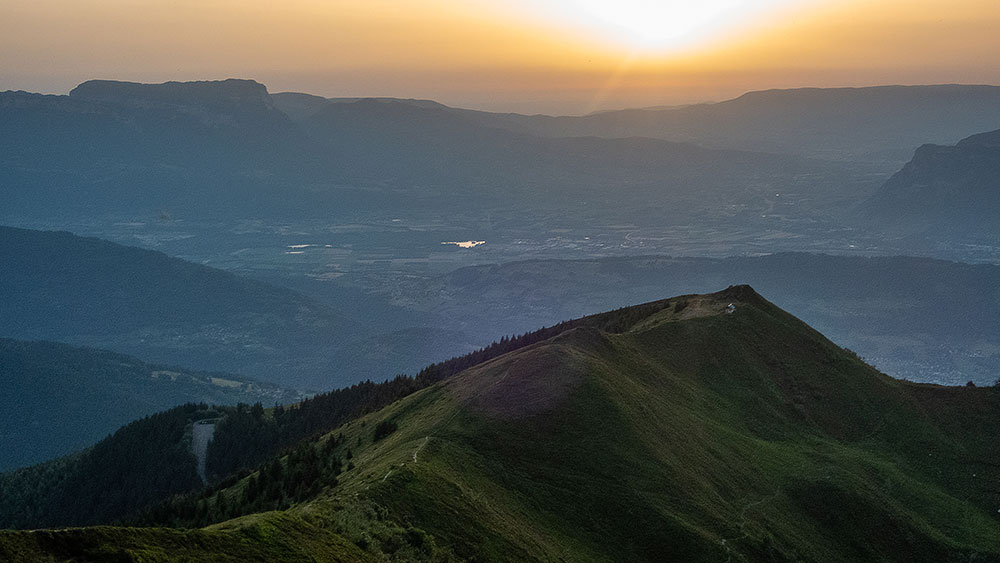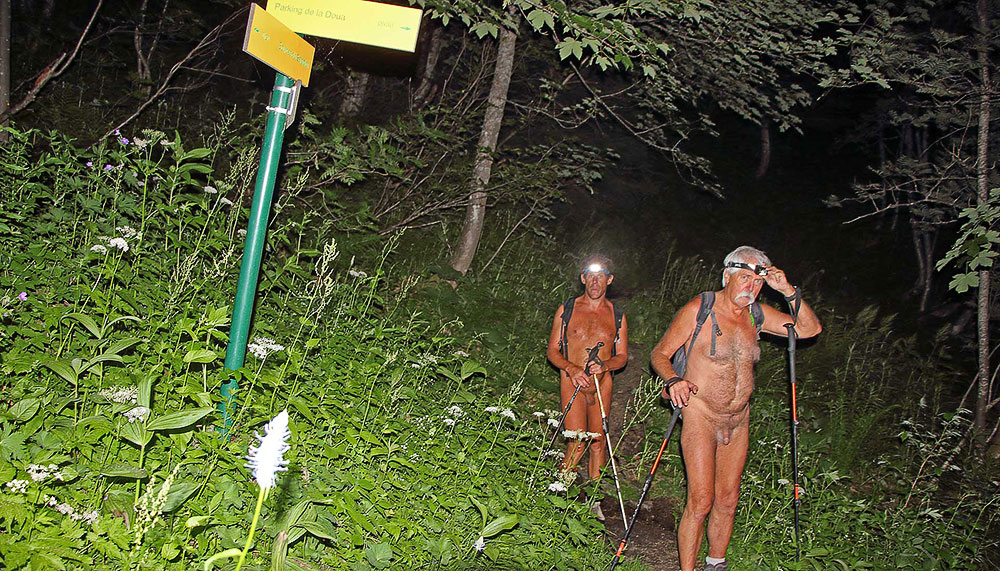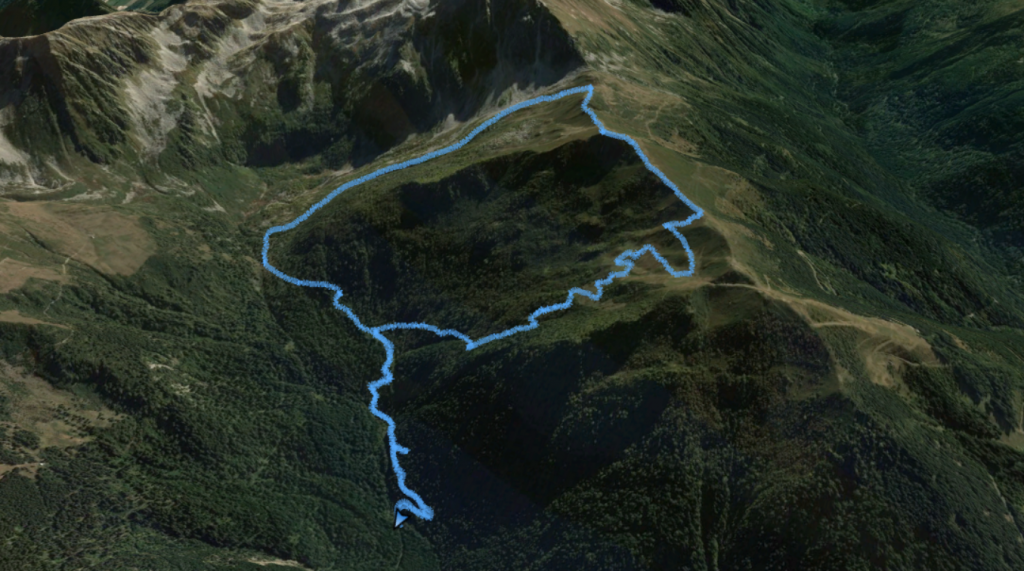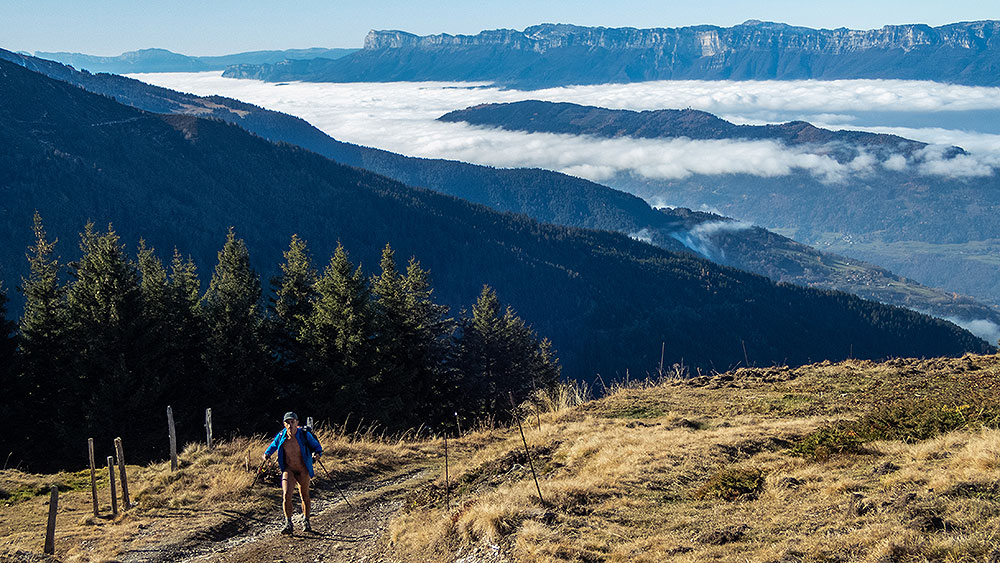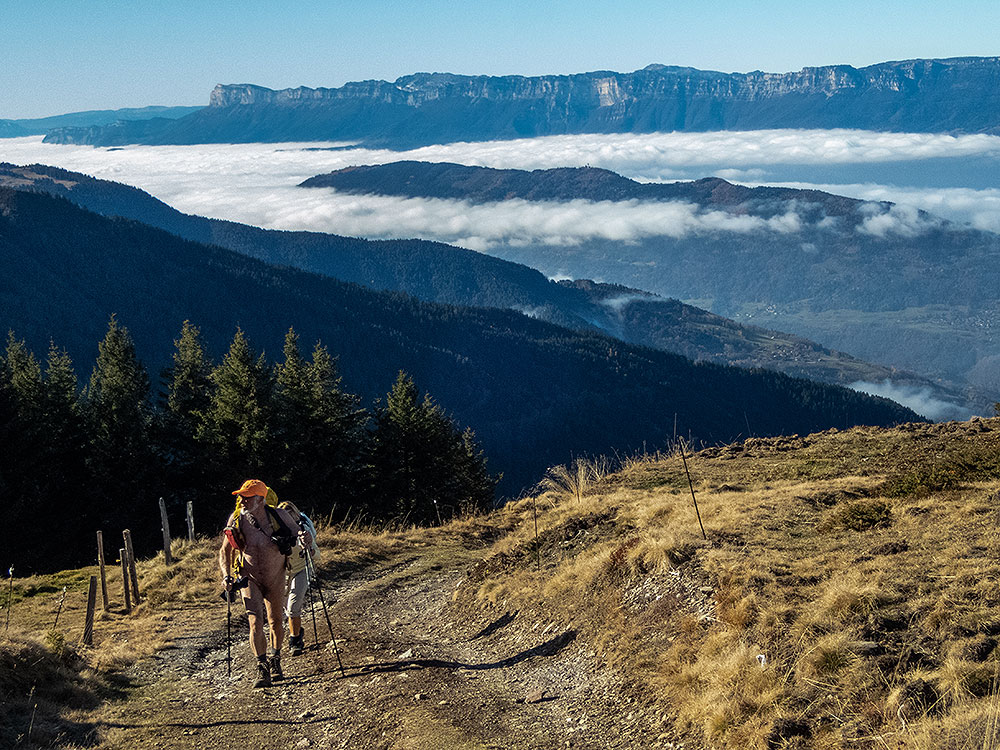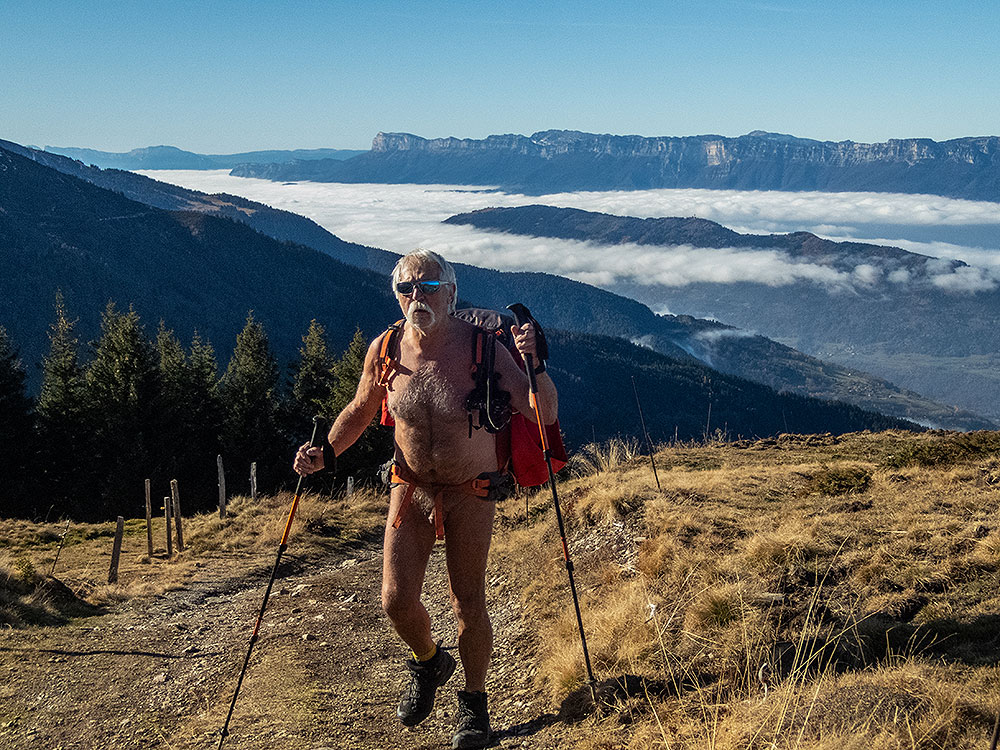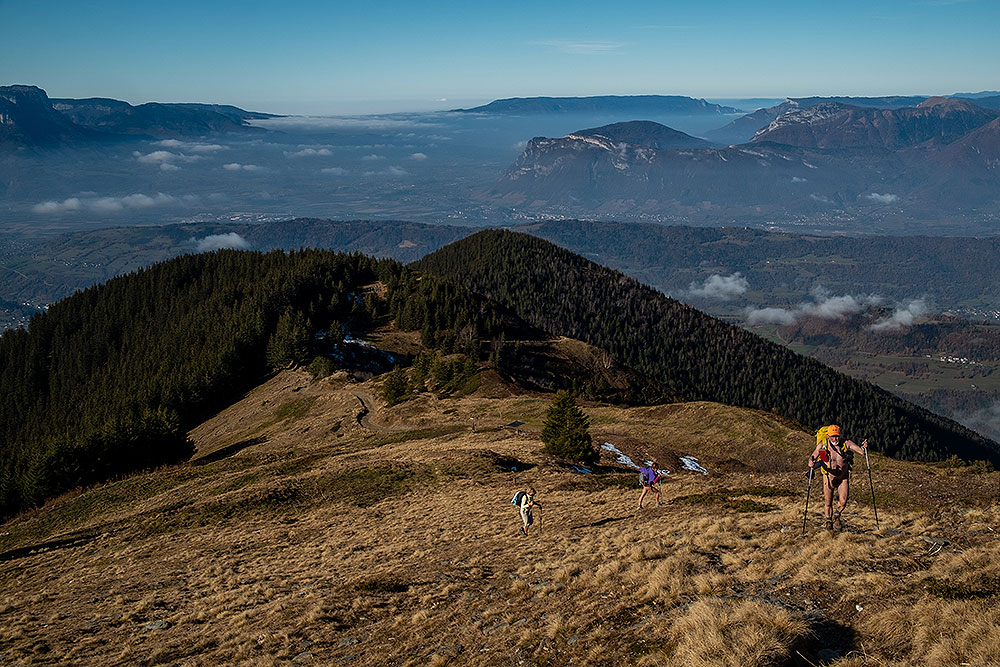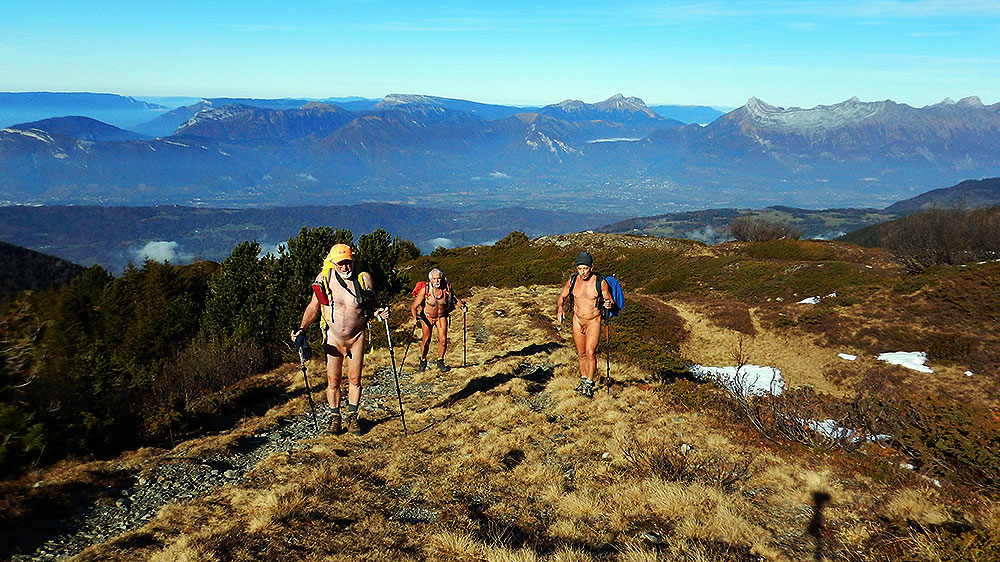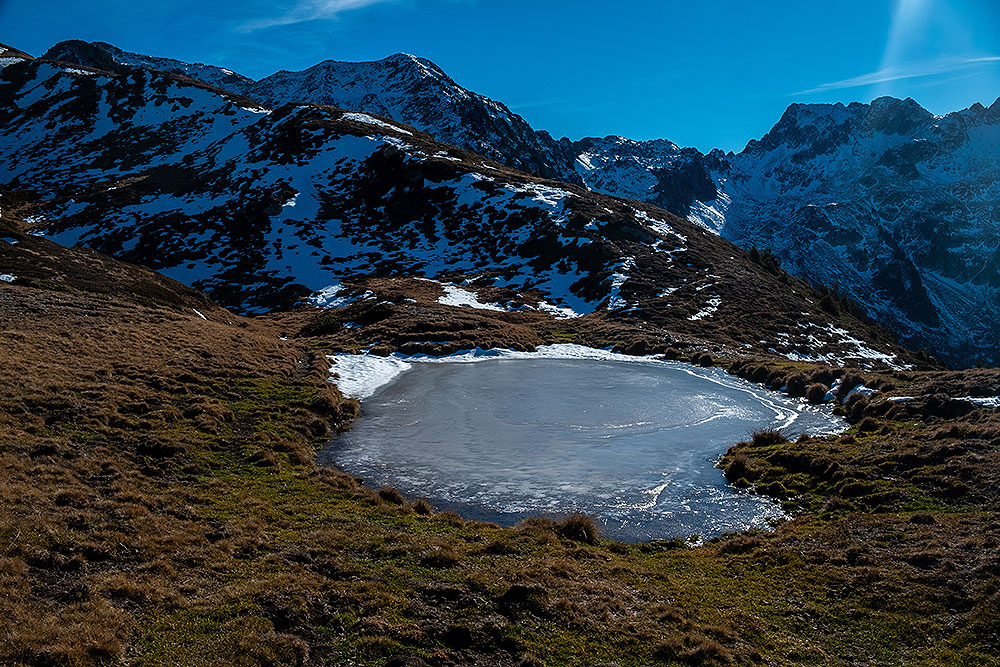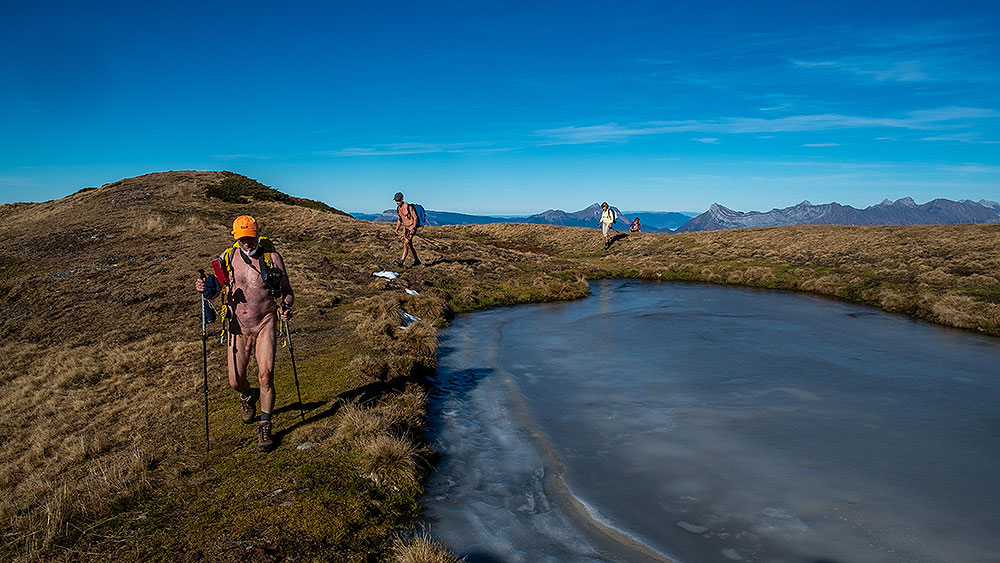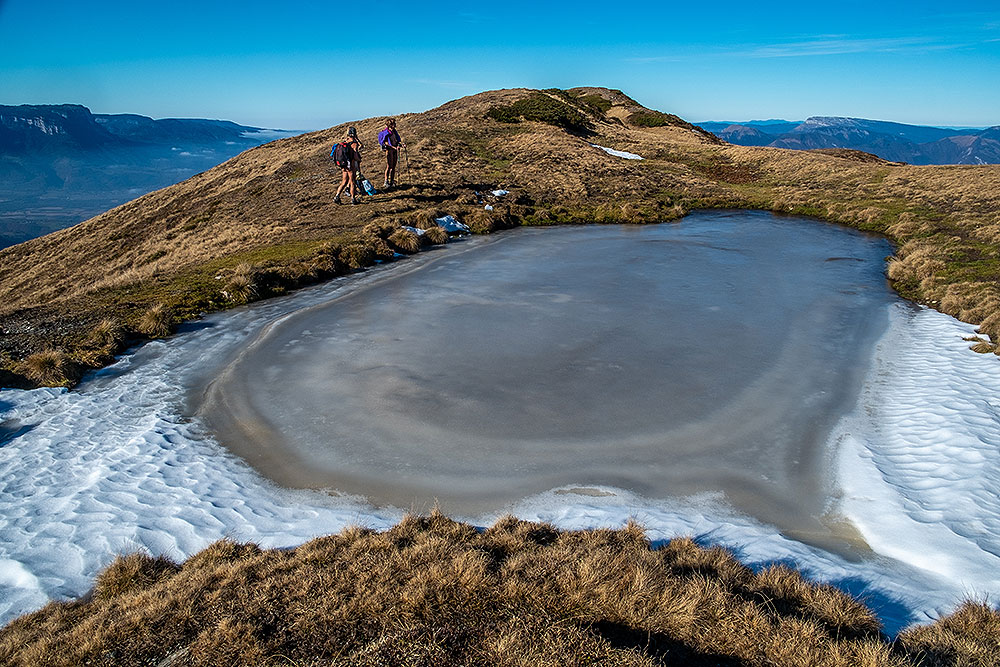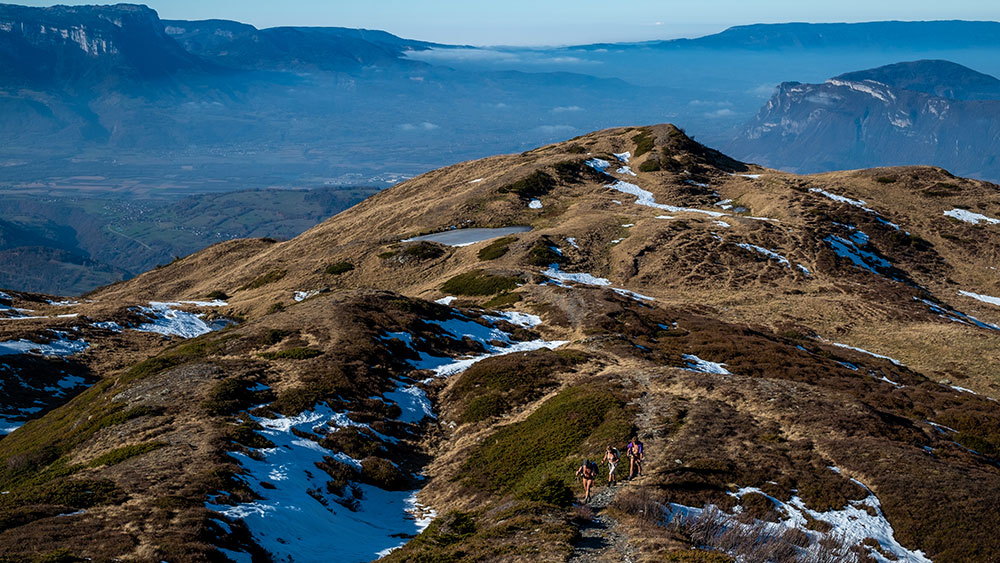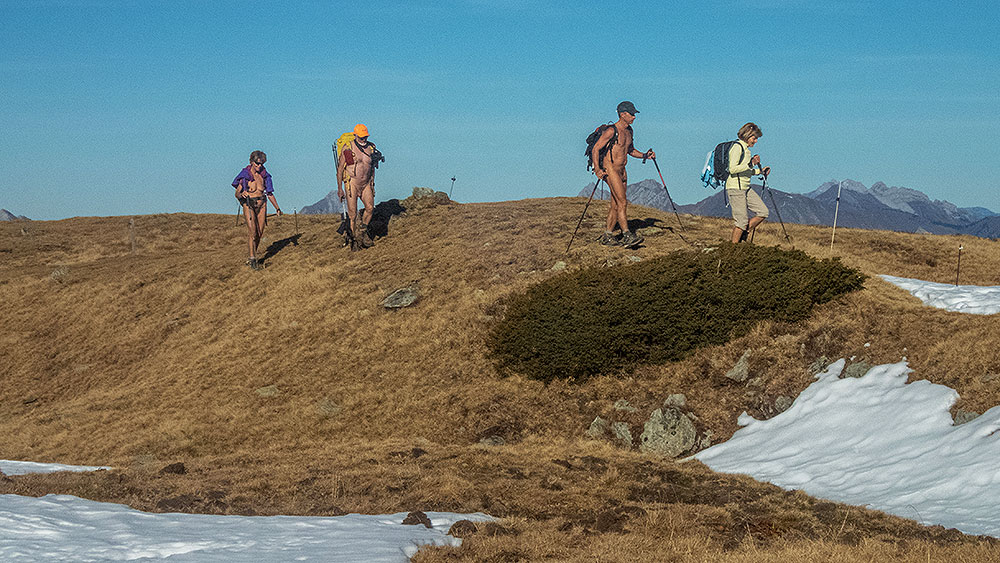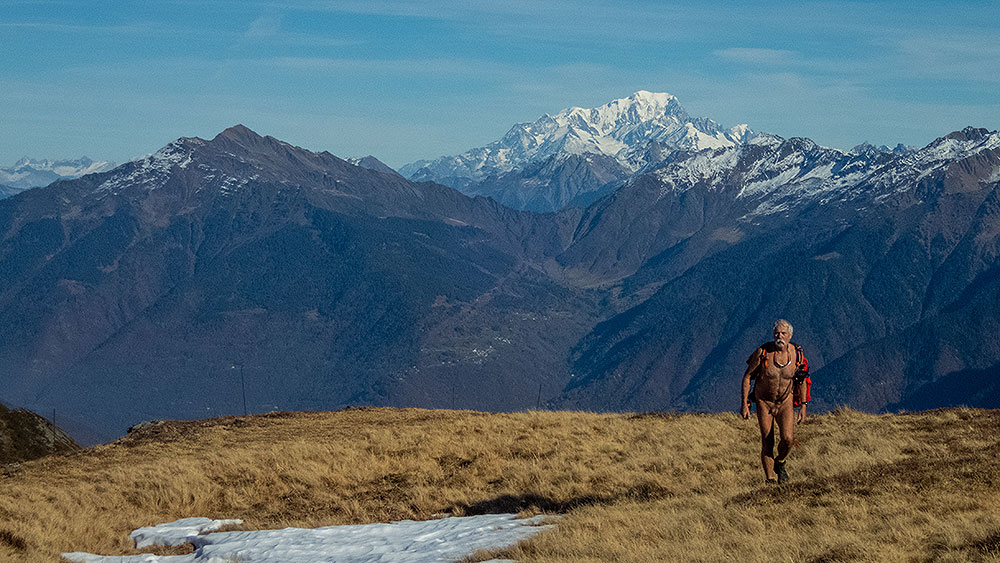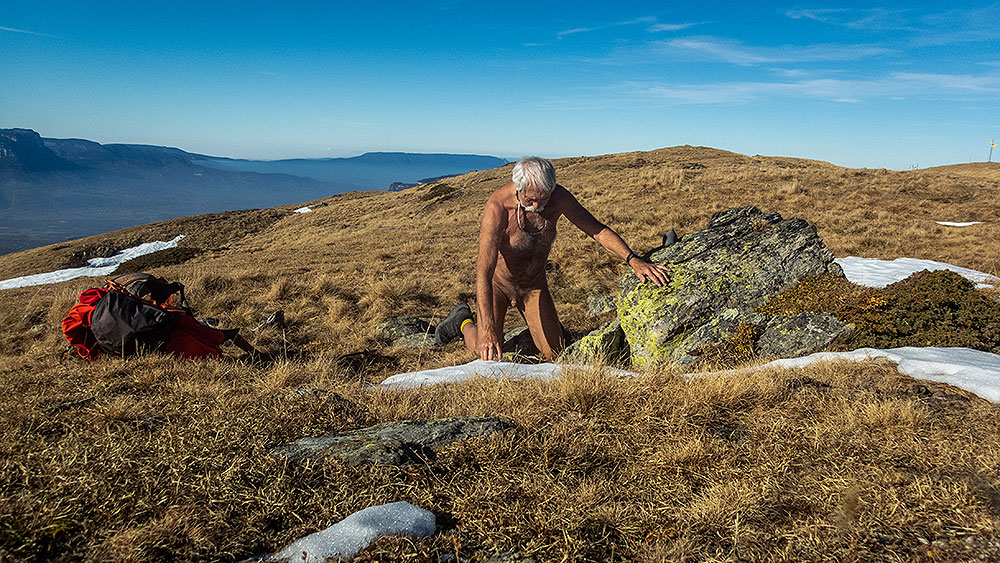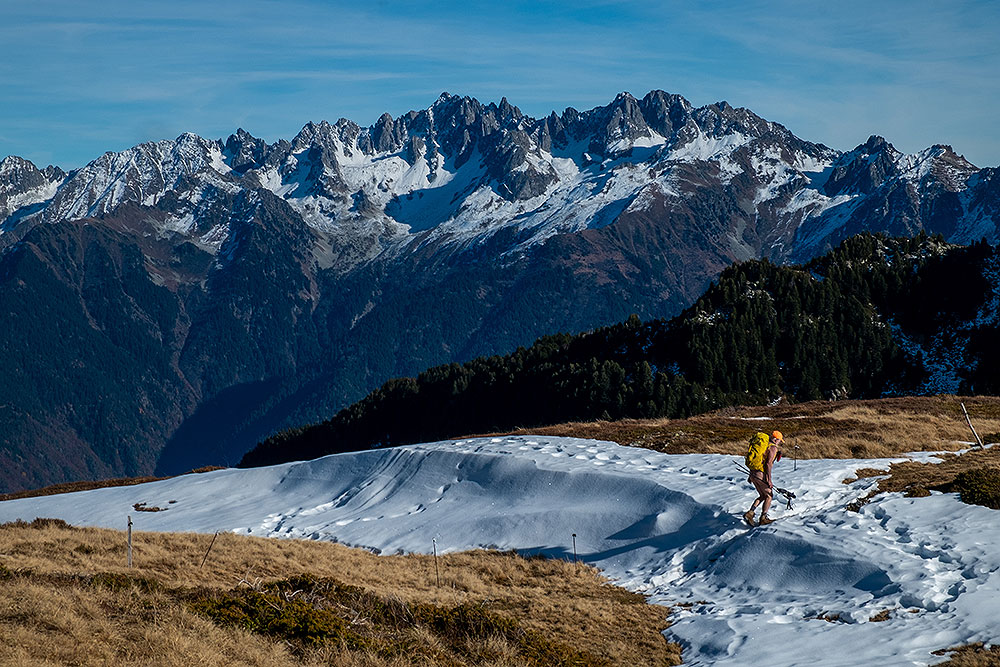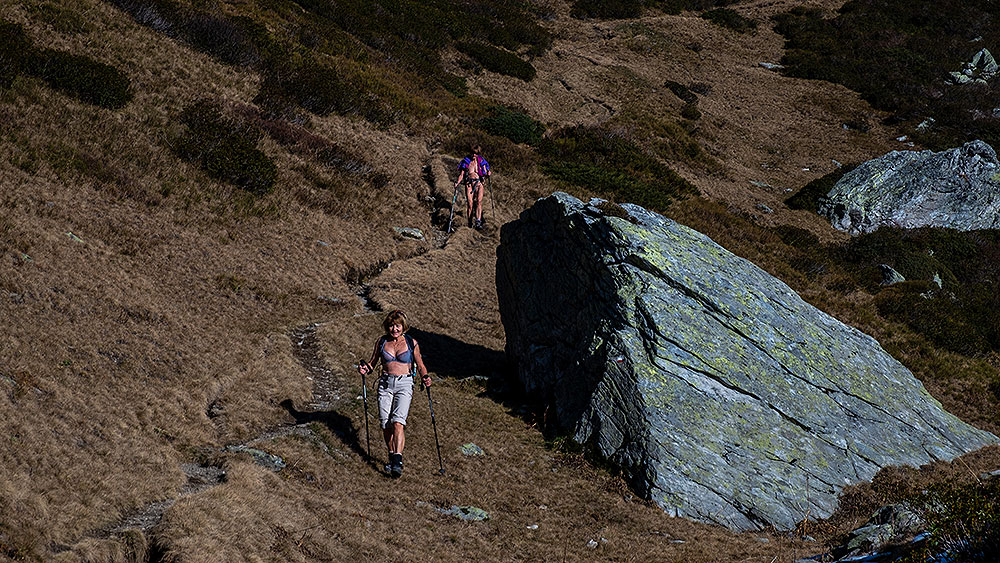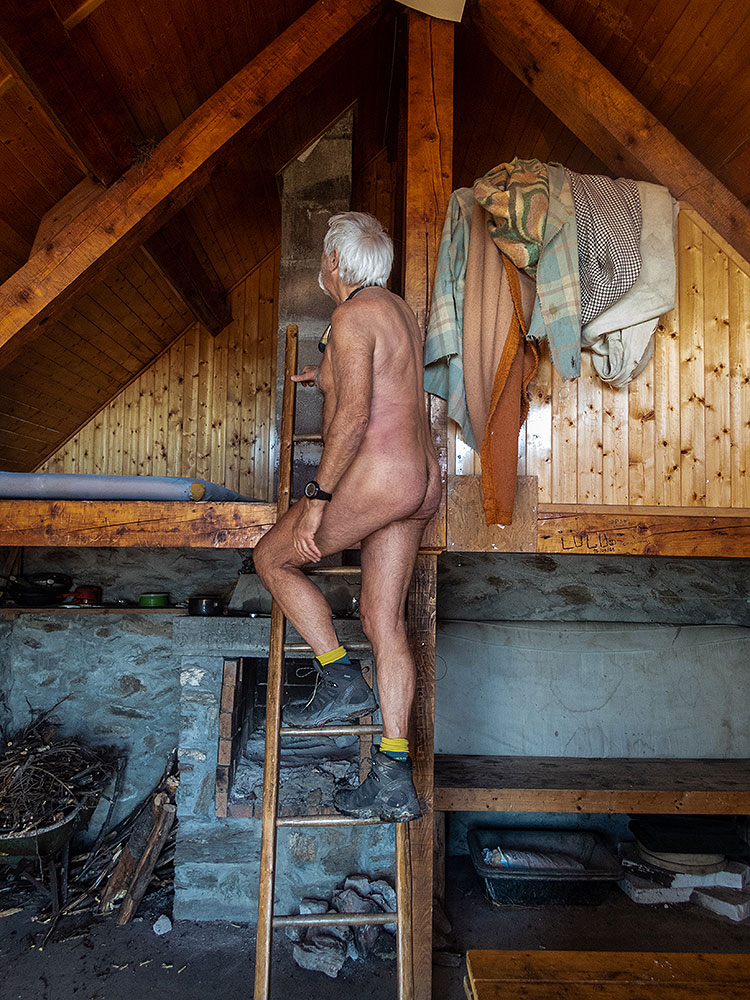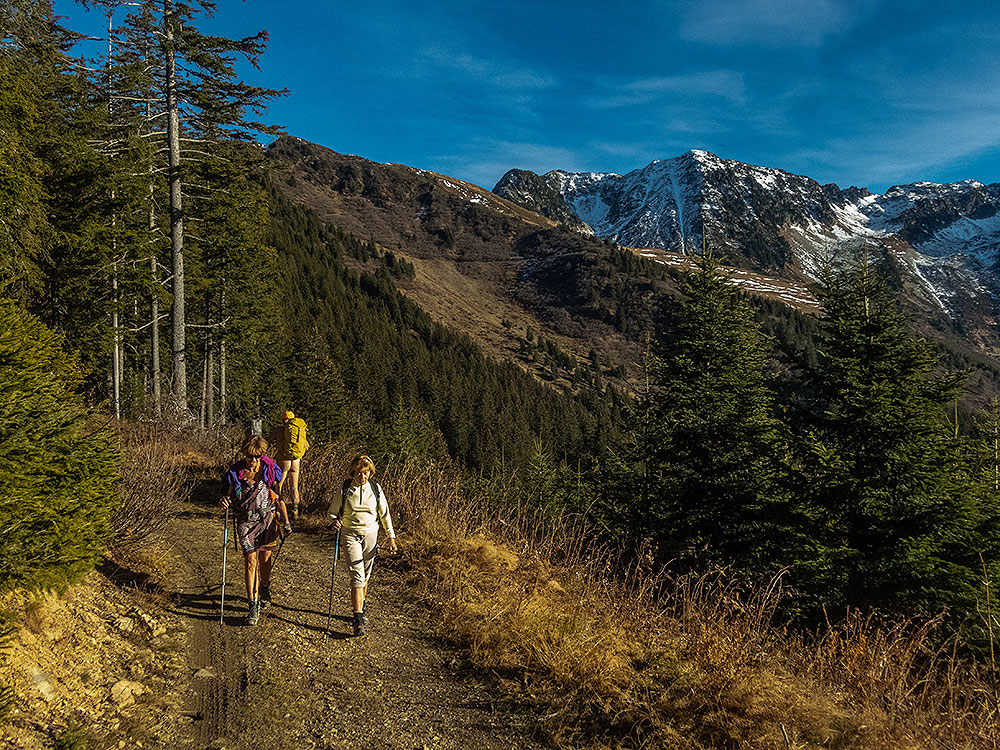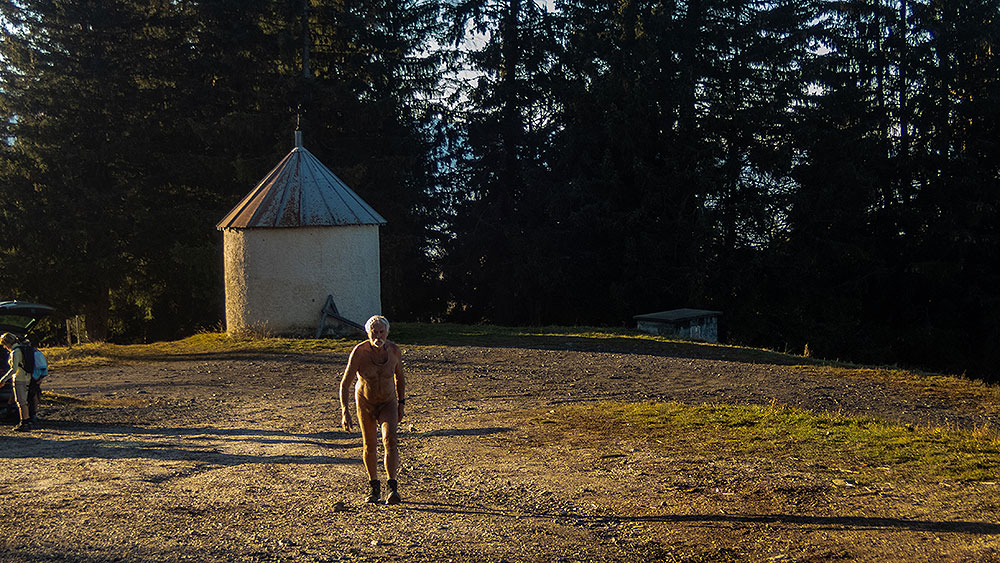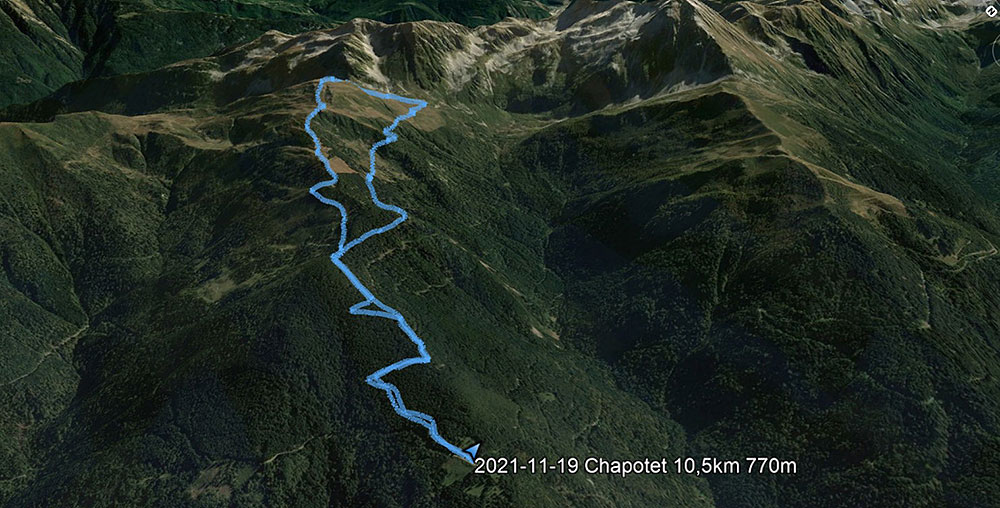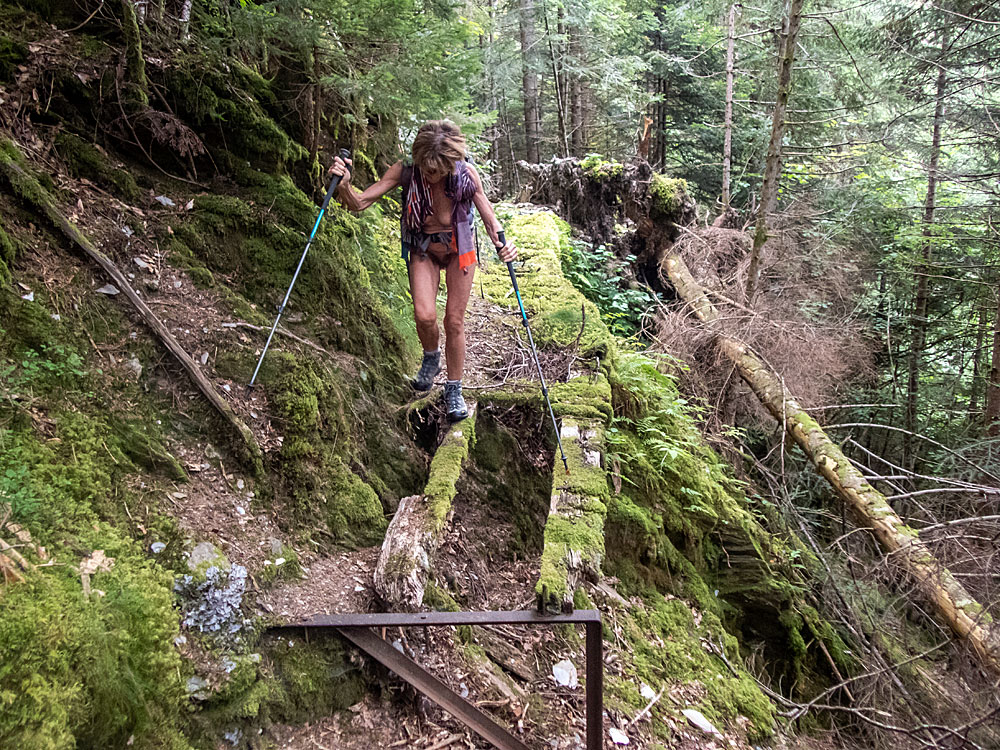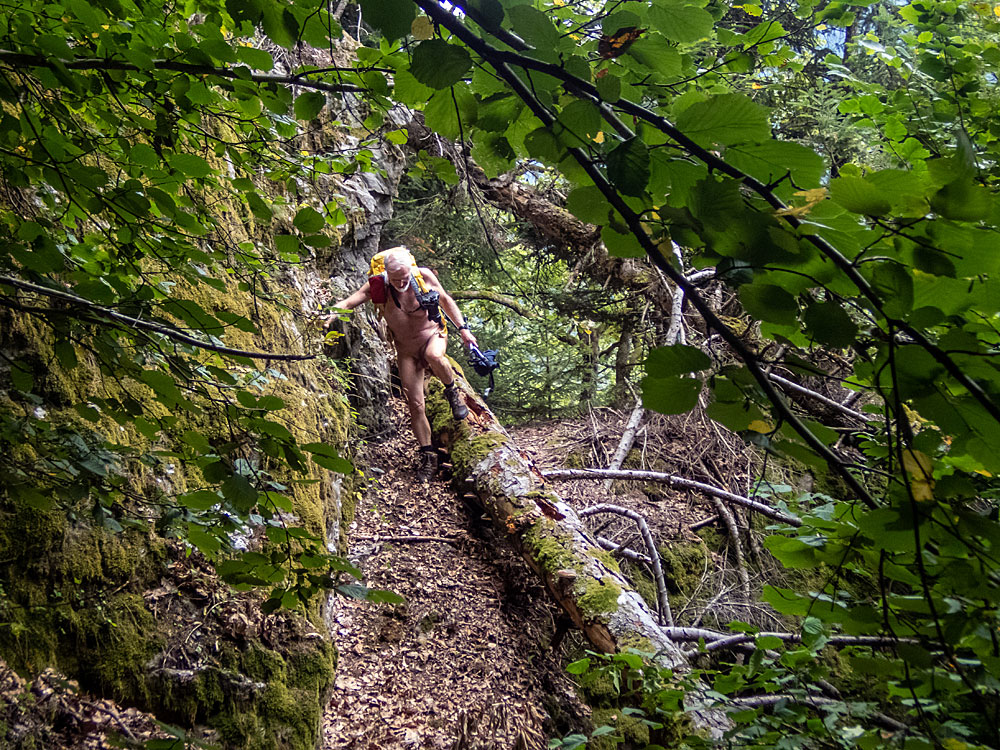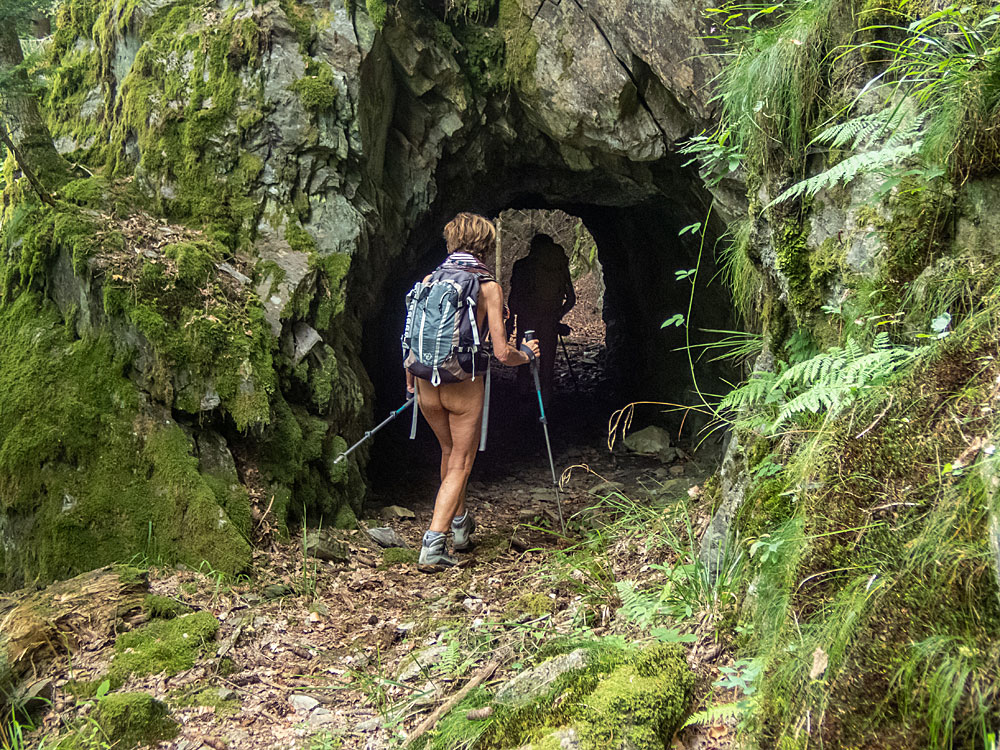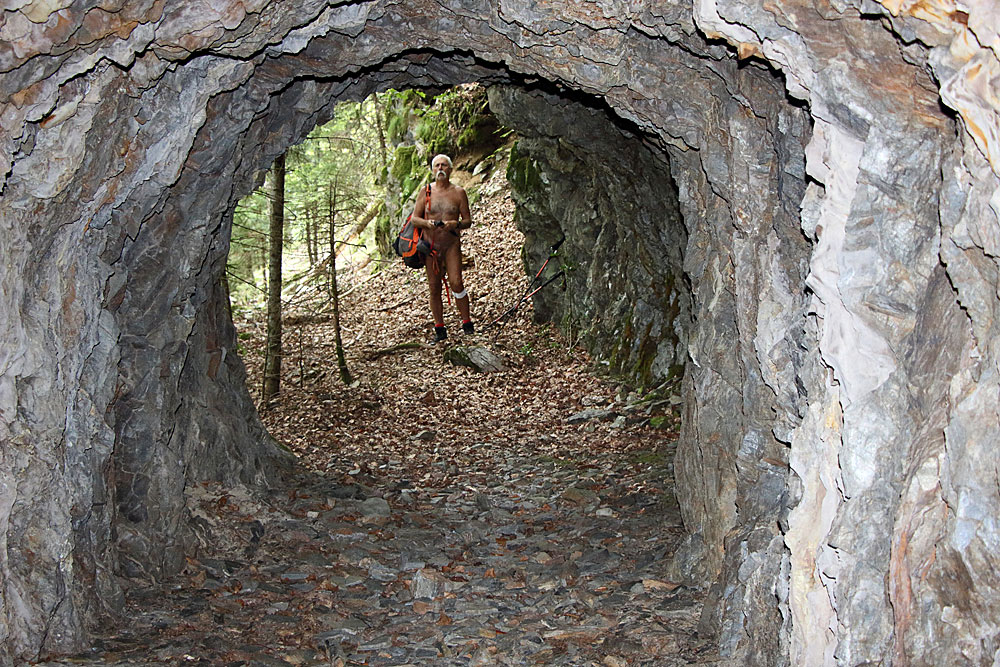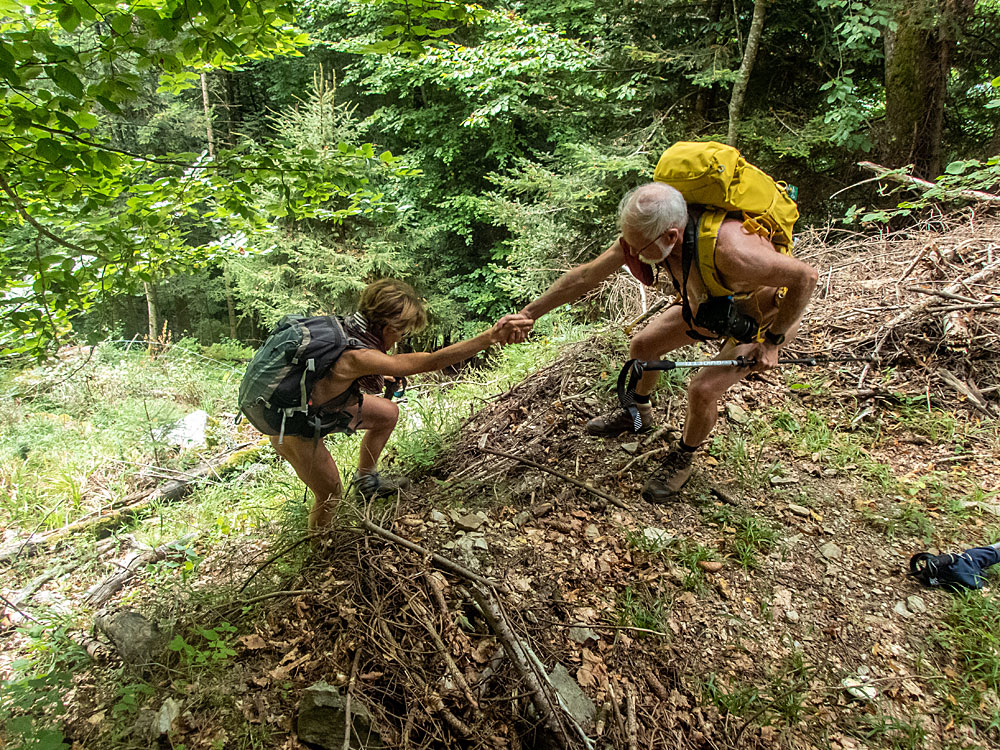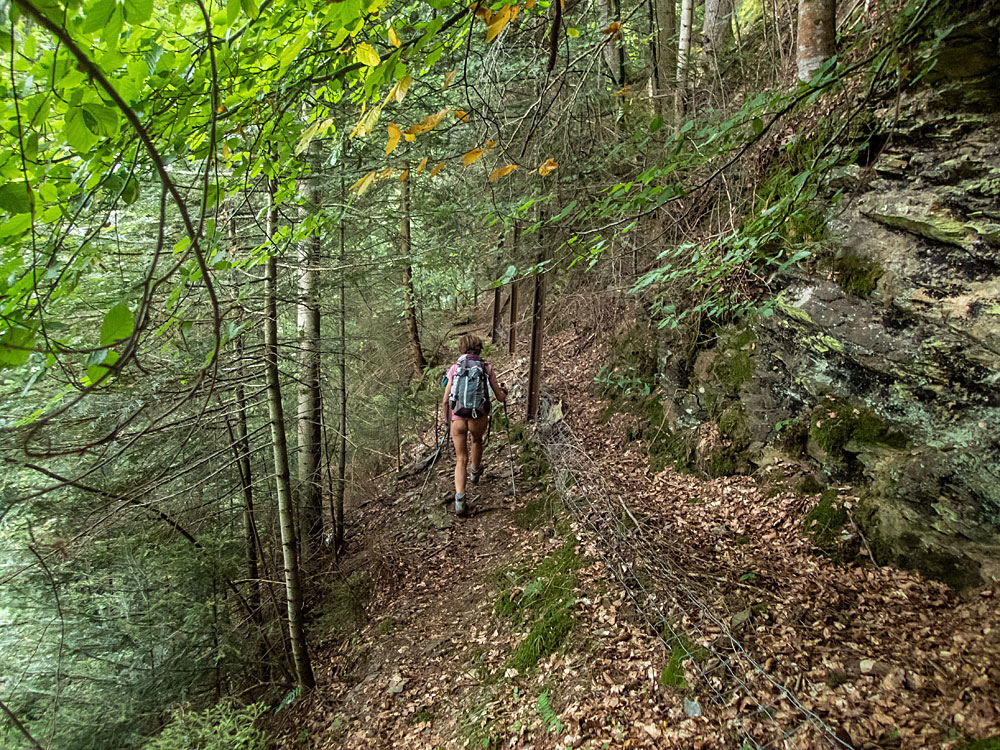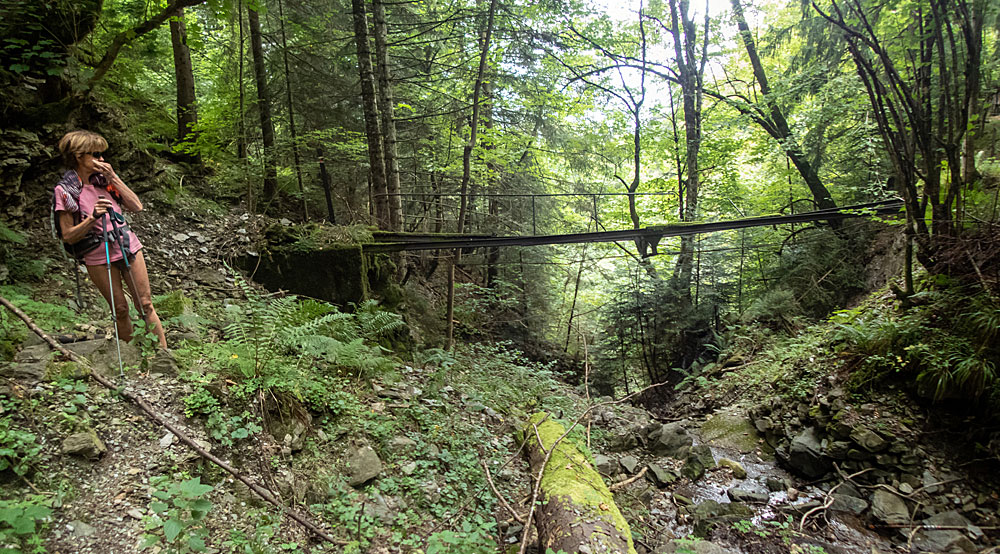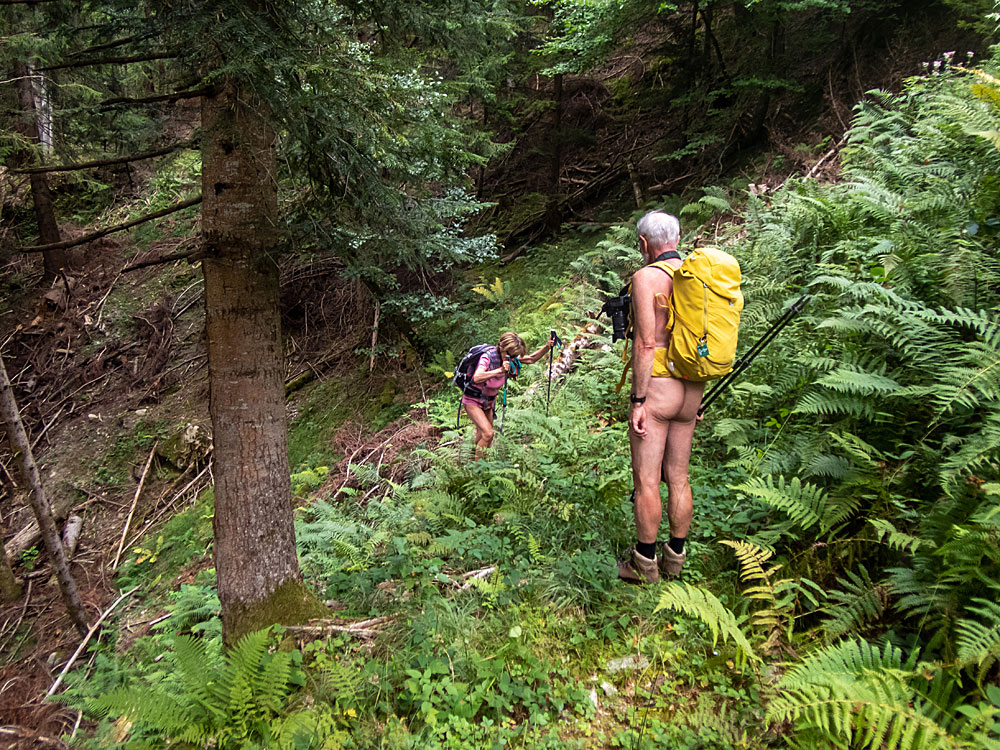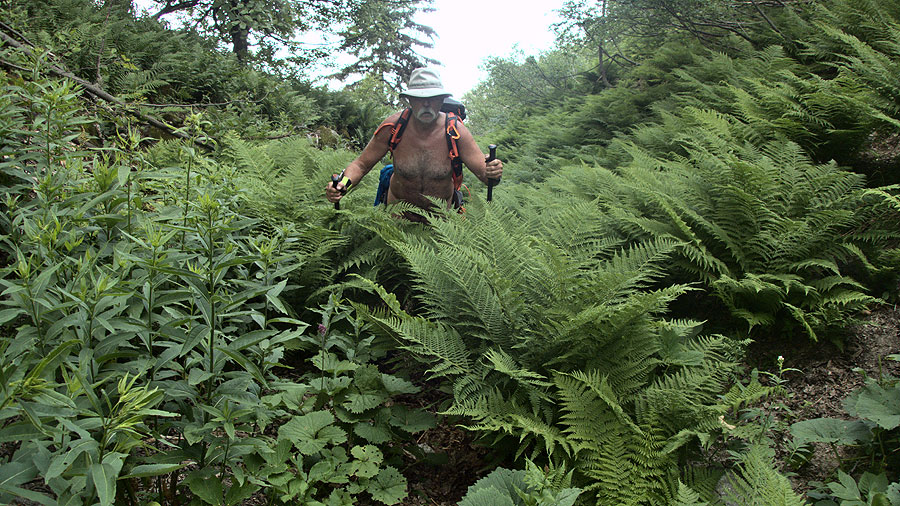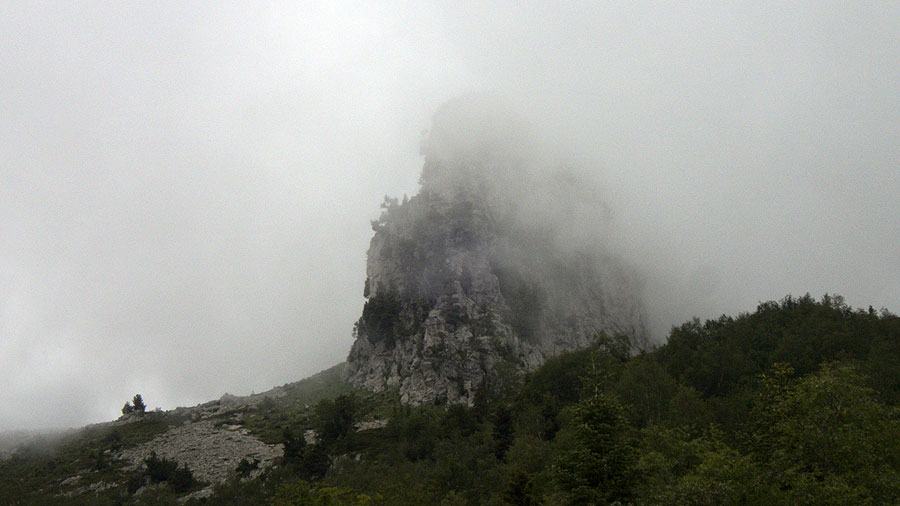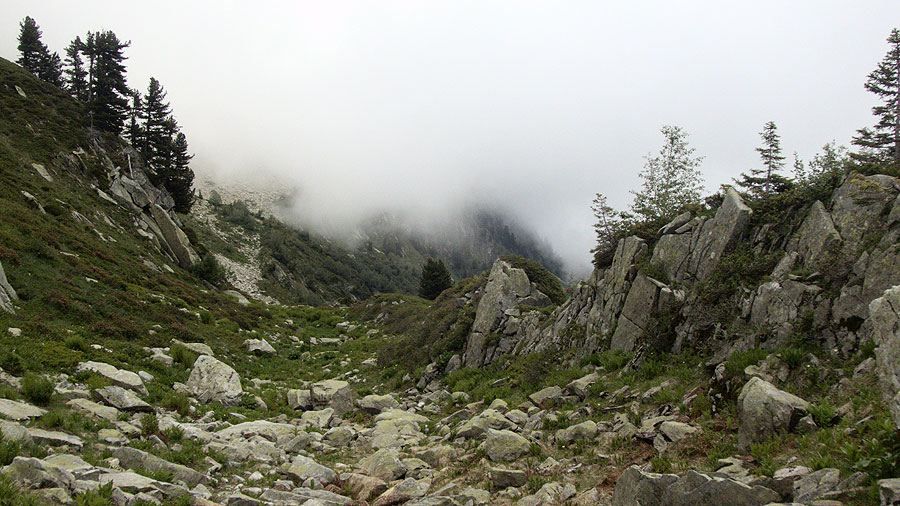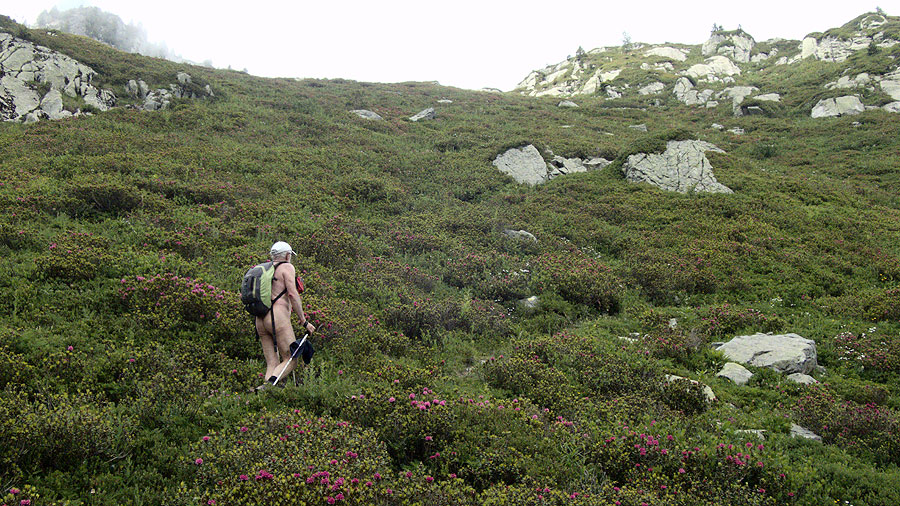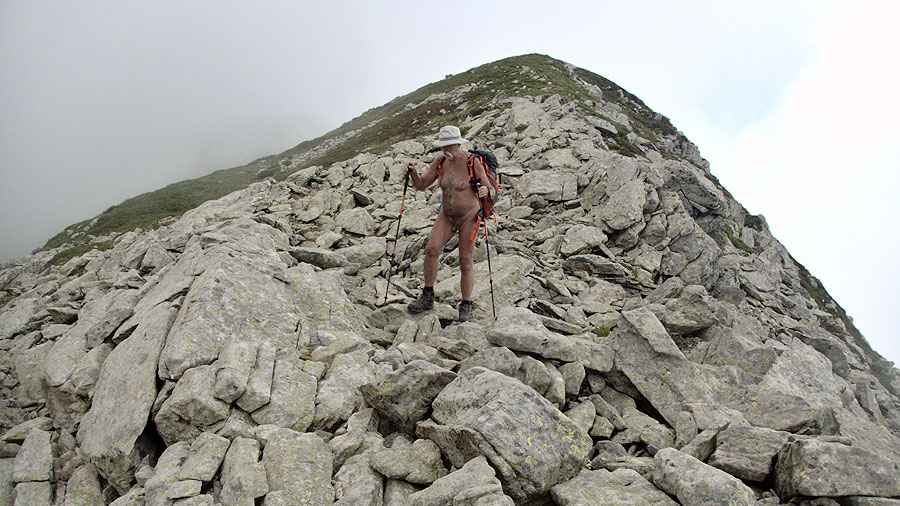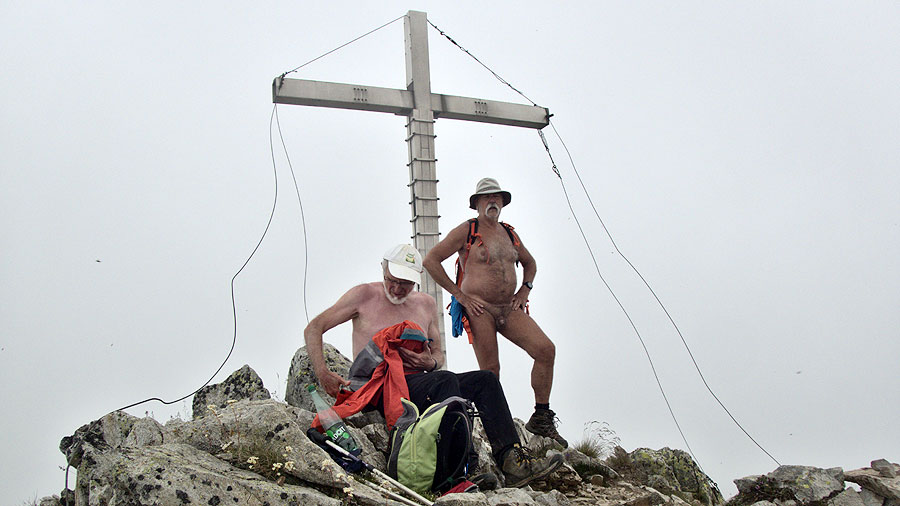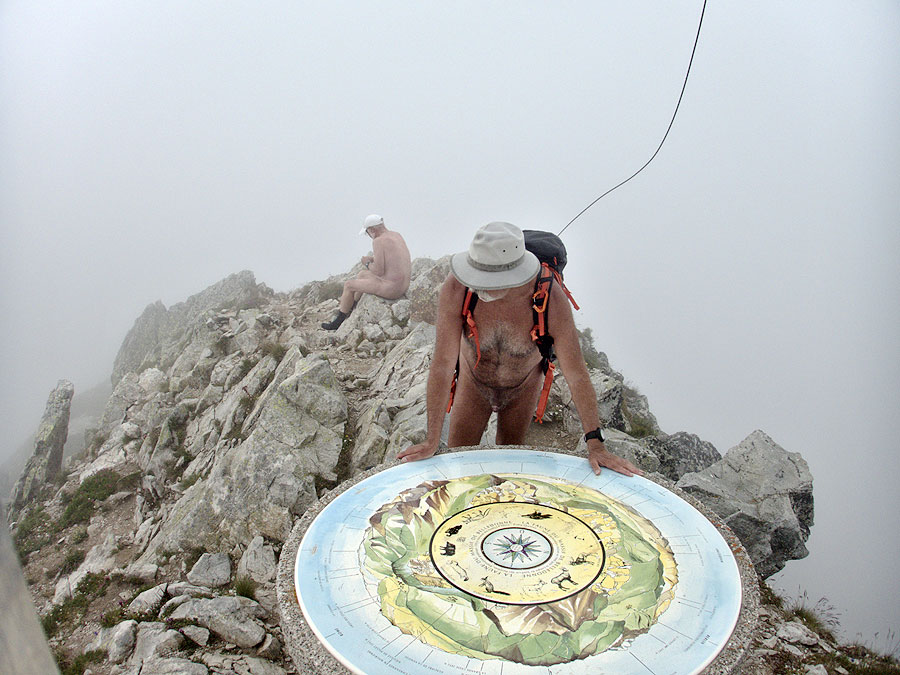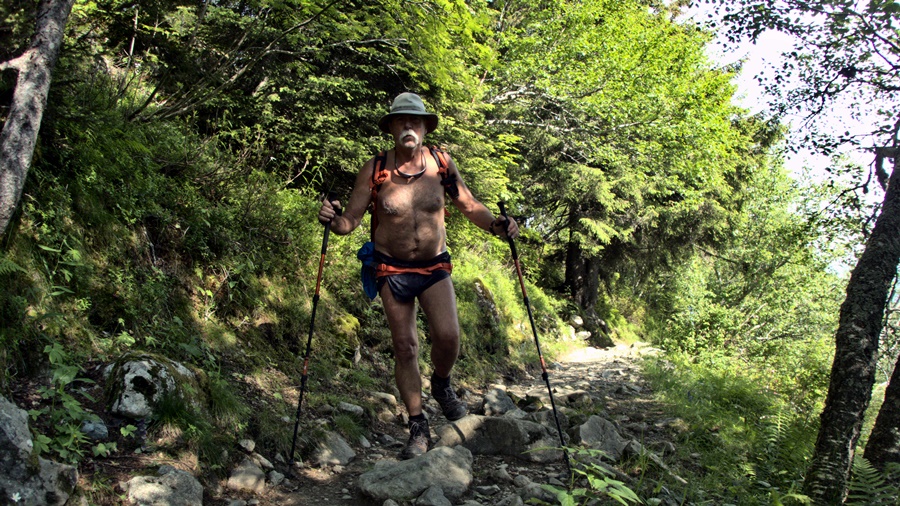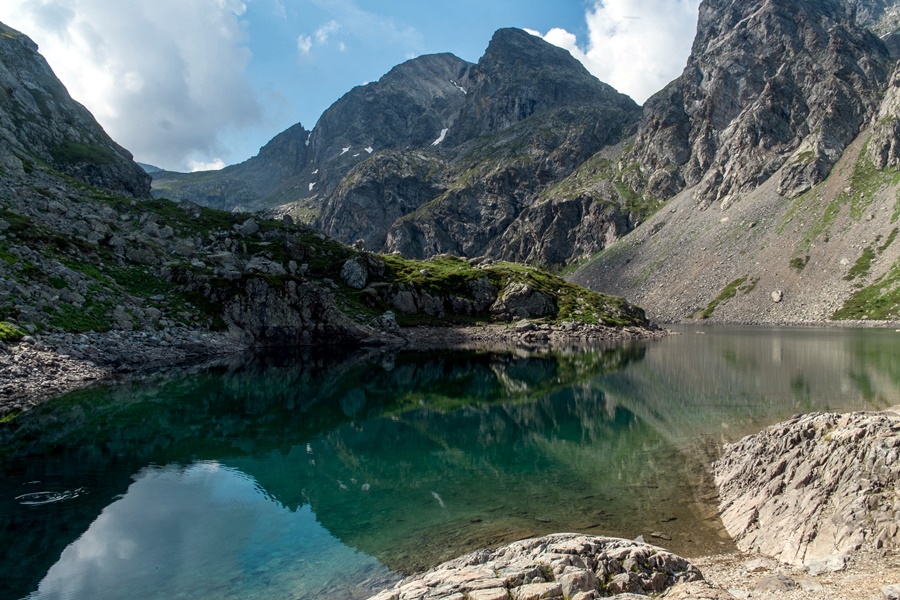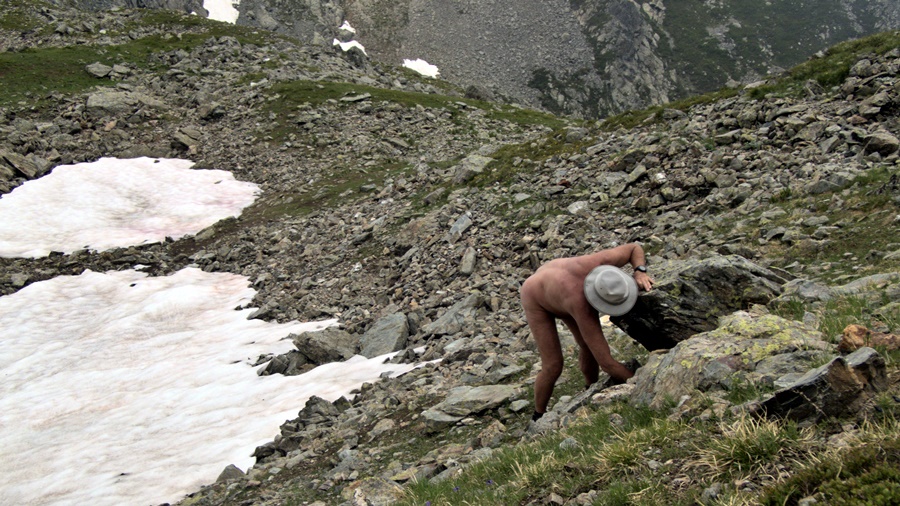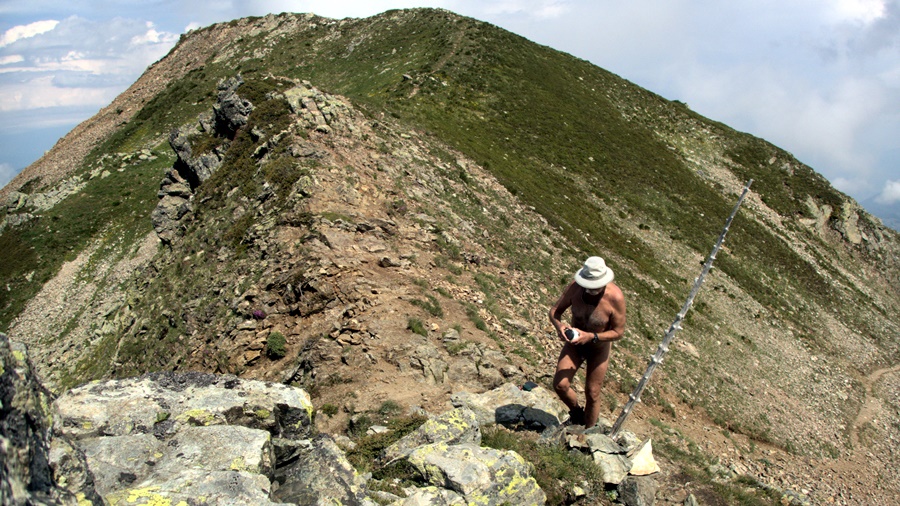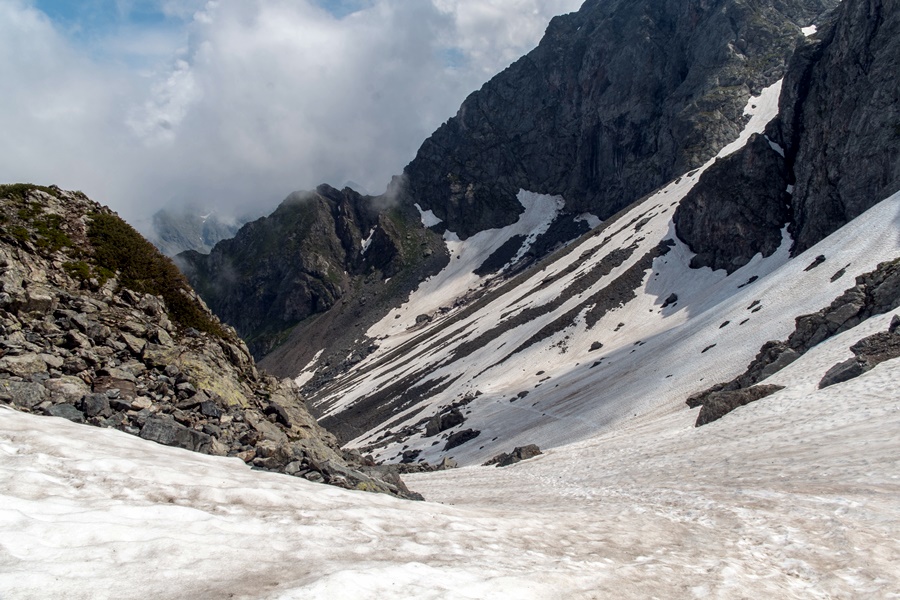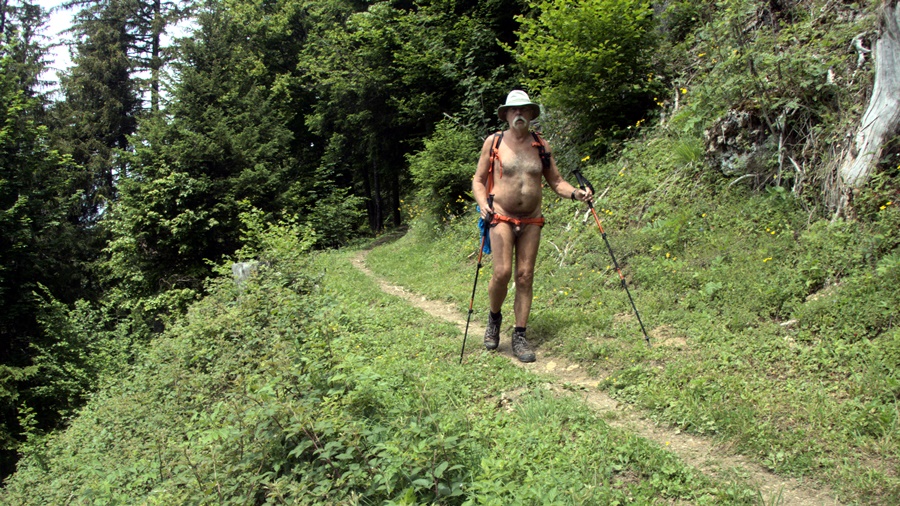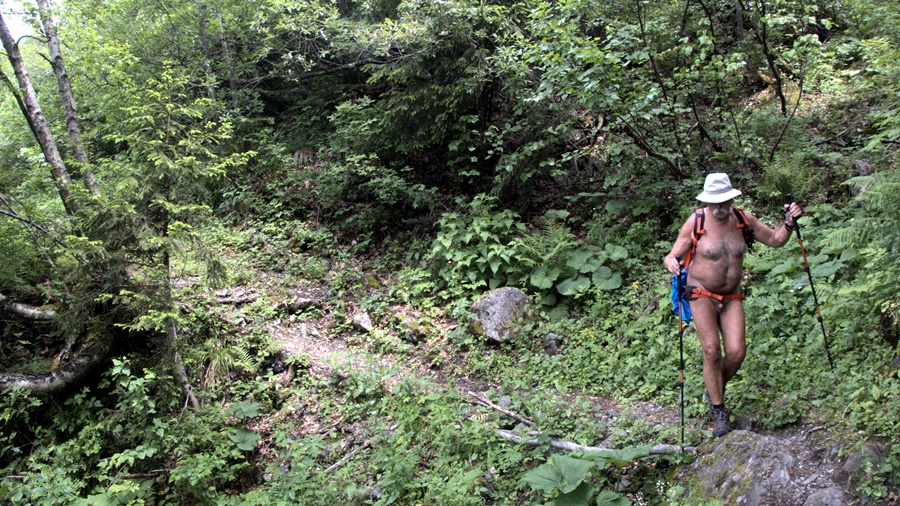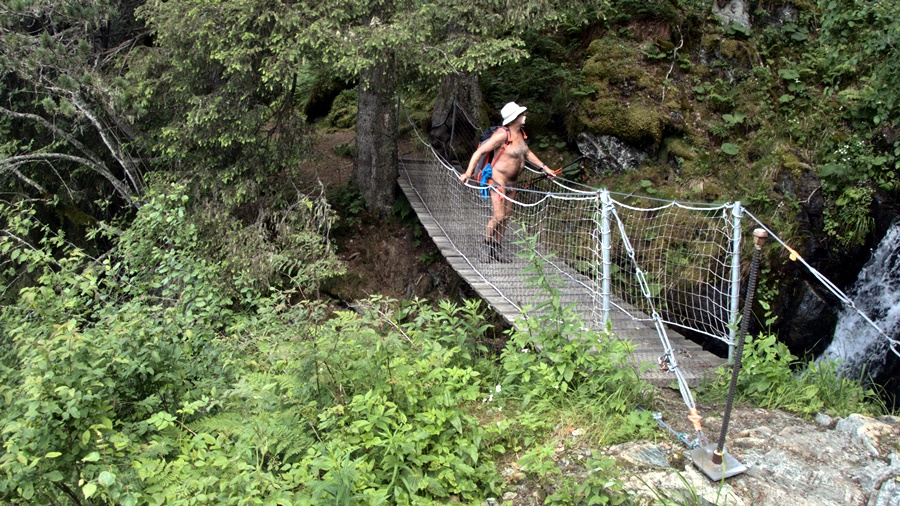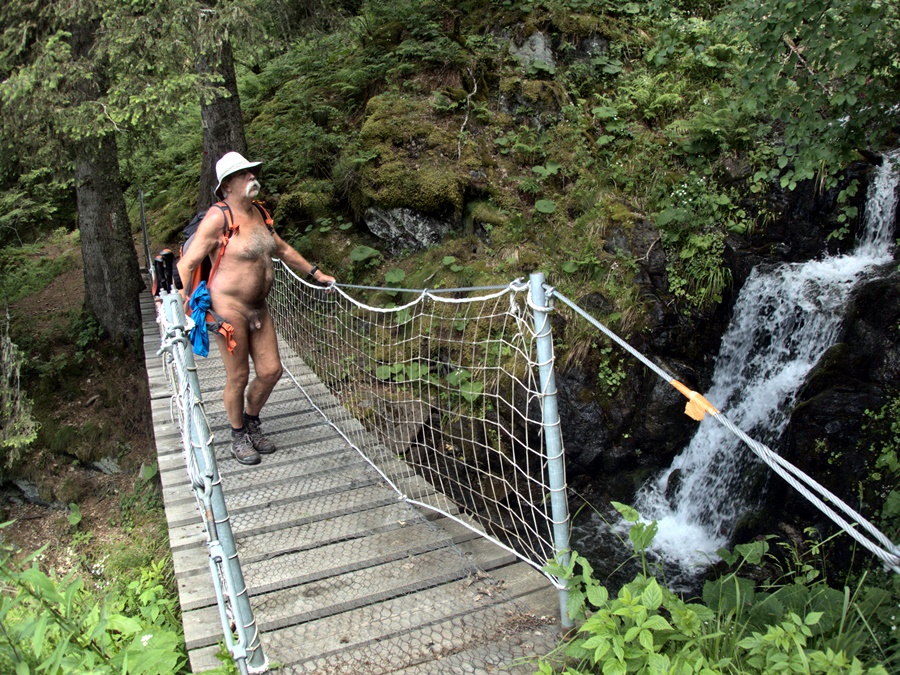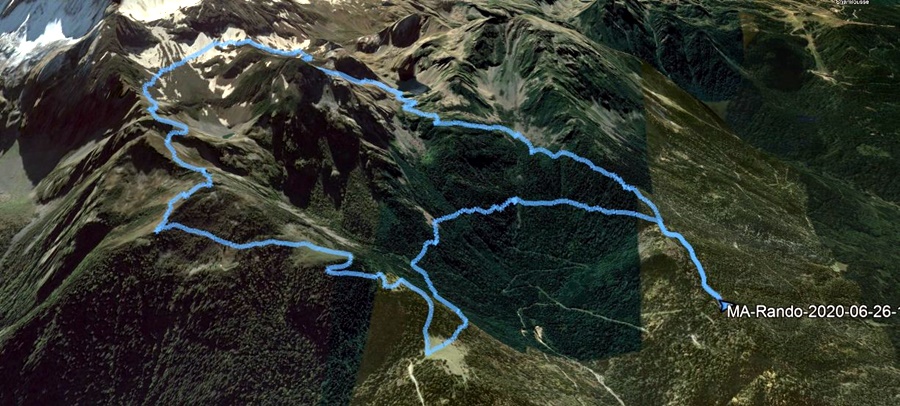Pour cette balade qui n’était pas en boucle, il a fallu d’abord aller déposer une voiture au bout d’une longue piste forestière puis revenir en sens inverse et monter par la route en lacets jusqu’à Valpelouse, ancienne station de ski fermée et démontée depuis près de quarante ans, mais qui reste un départ de randonnée fréquenté ainsi qu’un site d’envol pour les parapentistes. Nous sommes cinq. On s’éloigne du parking encore habillé, puis dans la première montée les chemises tombent, mais les shorts restent : on est suivi par une randonneuse qui nous dépasse, on voit arriver en sens inverse un groupe de quatre qui eux sont chaudement vêtus. Enfin seuls et nus ! On atteint le point culminant de la sortie à 2040 mètres d’altitude. On quitte l’itinéraire qui mène au sommet des Grands Moulins pour bifurquer et entreprendre la descente le long de la crête du Gargoton en se faufilant entre les massifs de myrtilliers rouge sombre. On arrive ensuite à la lisière d’un bois resplendissant du jaune de son feuillage. La vue avec les sommets environnants de roche sombre et le ciel bleu est magnifique. Par contre le cheminement lui se fait moins accueillant. Le sentier se perd entre les buissons d’arbres des arcosses, les trous des pierres cachés par les fougères. Finalement il disparaît complètement et l’on tente de se faufiler entre troncs, branches et rochers en gardant si possible un axe vers le fond du vallon. La descente est difficile et raide ! Mais la bonne humeur reste de mise ! Encore quelques hésitations dans un labyrinthe de chaos rocheux et le sentier est trouvé. Mais il y a eut quelques chutes et personnellement j’en garde des traces sur les fesses et les bras. Après tout semble plus facile. Le chemin nous fait passer à la source du Gargoton, puis nous descend vers la vallée jusqu’au parking où nous attend la voiture.
For this hike, which was not a loop, we first had to drop off a car at the end of a long forest track, then turn back and climb the winding road to Valpelouse, a former ski resort that closed and was dismantled nearly forty years ago, but which remains a popular hiking starting point and a launch site for paragliders. We were five people. We set off from the car park still fully clothed, but on the first climb we take off our shirts, though we keep our shorts on. We are followed by a female hiker who overtakes us, and we see a group of four coming in the opposite direction, dressed warmly. Finally alone and naked! We reach the highest point of the hike at an altitude of 2,040 meters. We leave the route that leads to the summit of Les Grands Moulins to turn off and begin the descent along the Gargoton ridge, weaving our way through the dark red blueberry bushes. We then arrive at the edge of a wood resplendent with yellow foliage. The view of the surrounding dark rock peaks and blue sky is magnificent. However, the path itself is less welcoming. It disappears among the bushes and trees, hidden by ferns. Eventually, it disappears completely, and we try to squeeze between tree trunks, branches, and rocks, keeping as close as possible to the bottom of the valley. The descent is difficult and steep! But we remain in good spirits! After a few more hesitations in a maze of rocky chaos, we find the trail. But there have been a few falls, and I personally have marks on my buttocks and arms. After that, everything seems easier. The path takes us to the source of the Gargoton, then down to the valley and the parking lot where our car is waiting for us.
